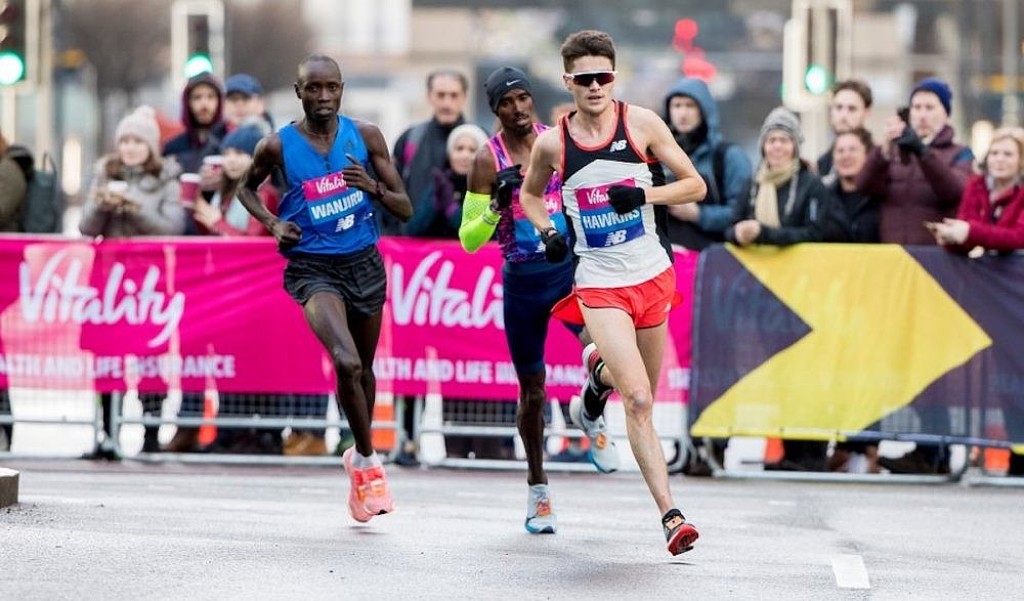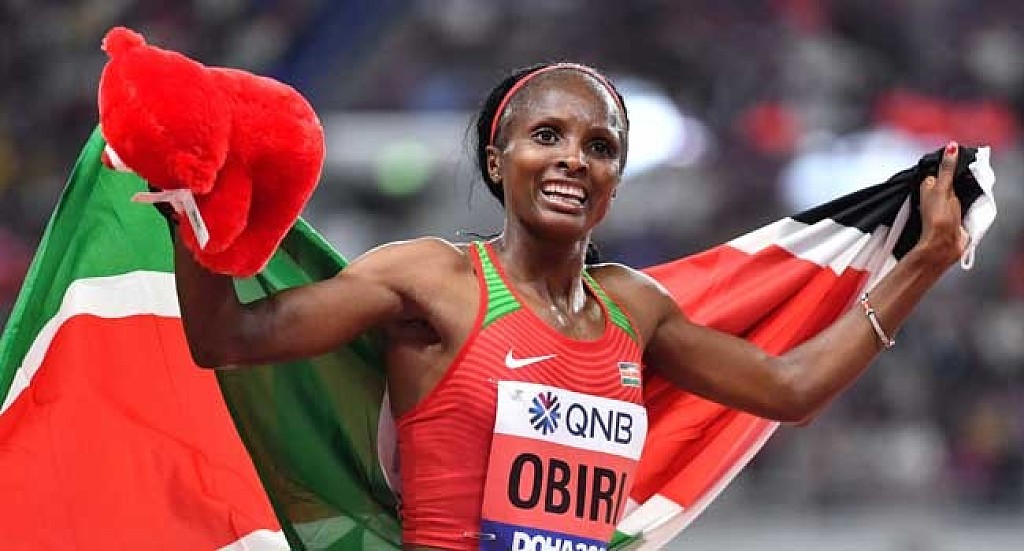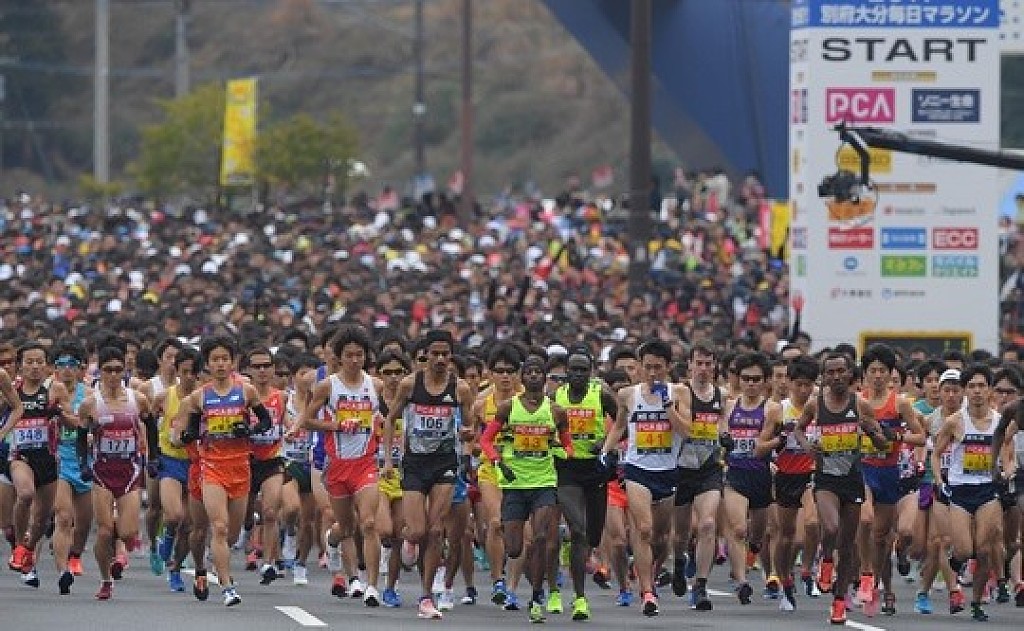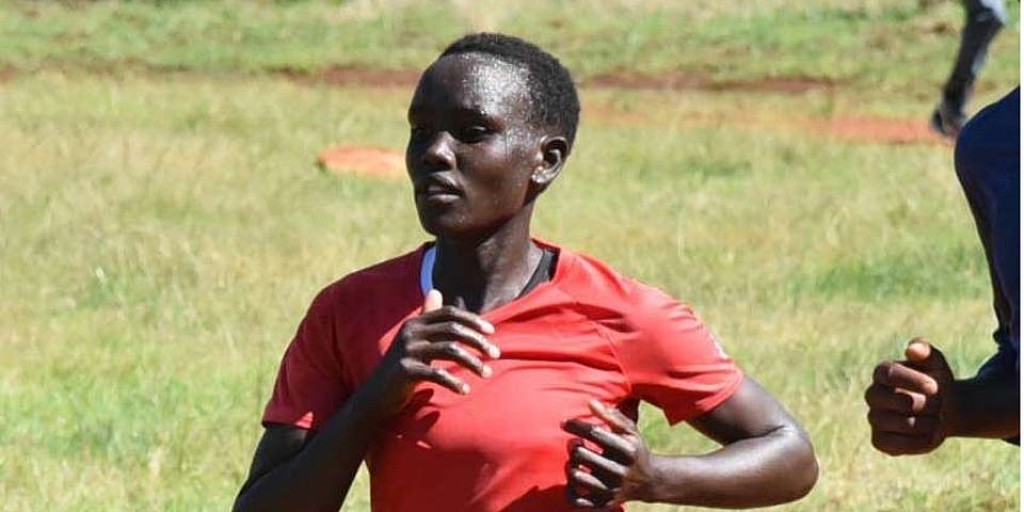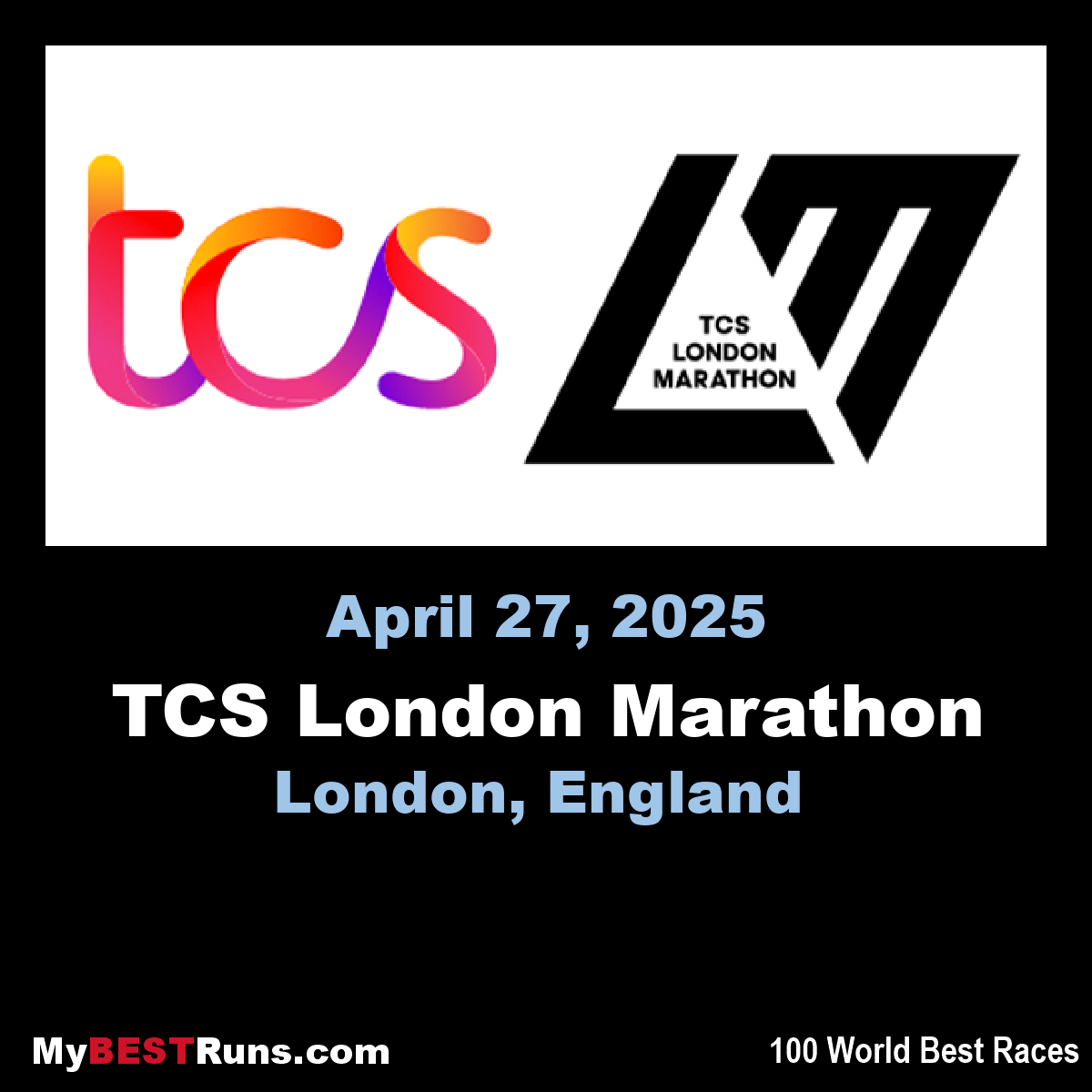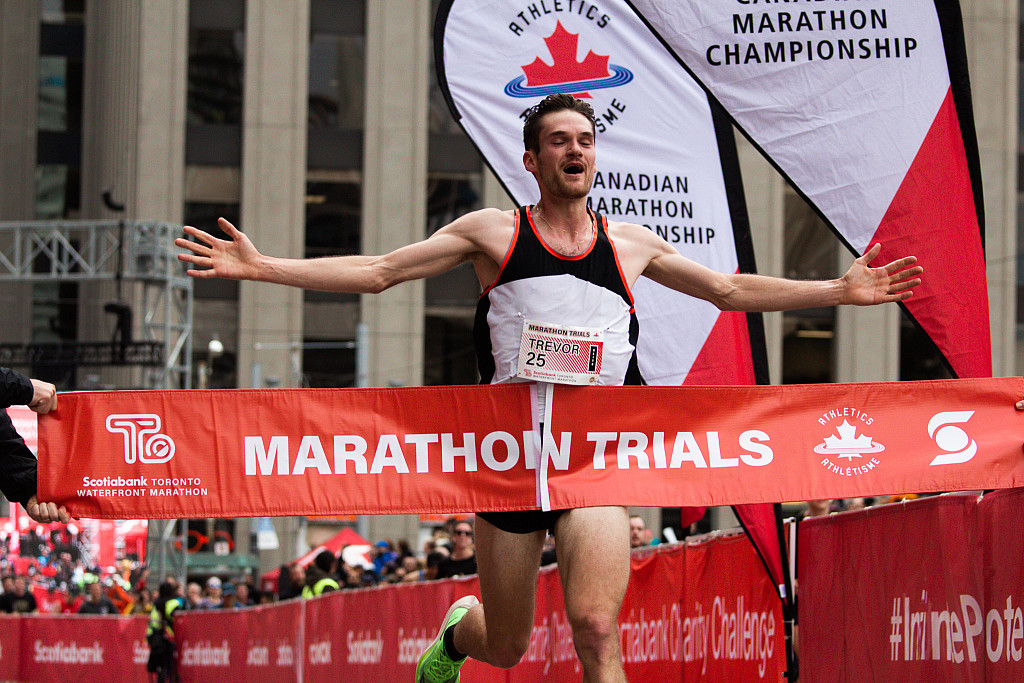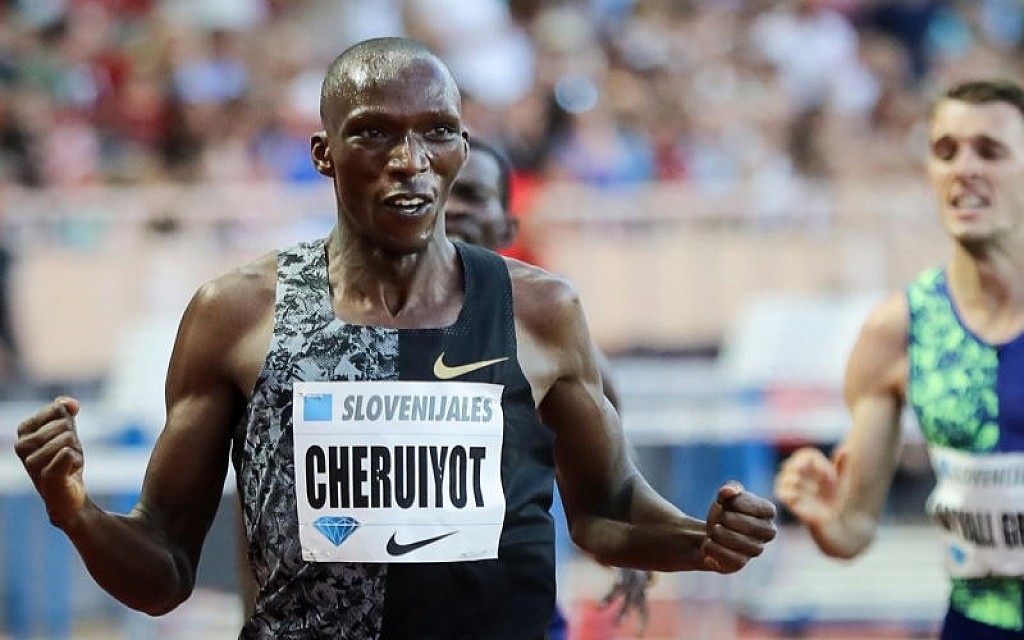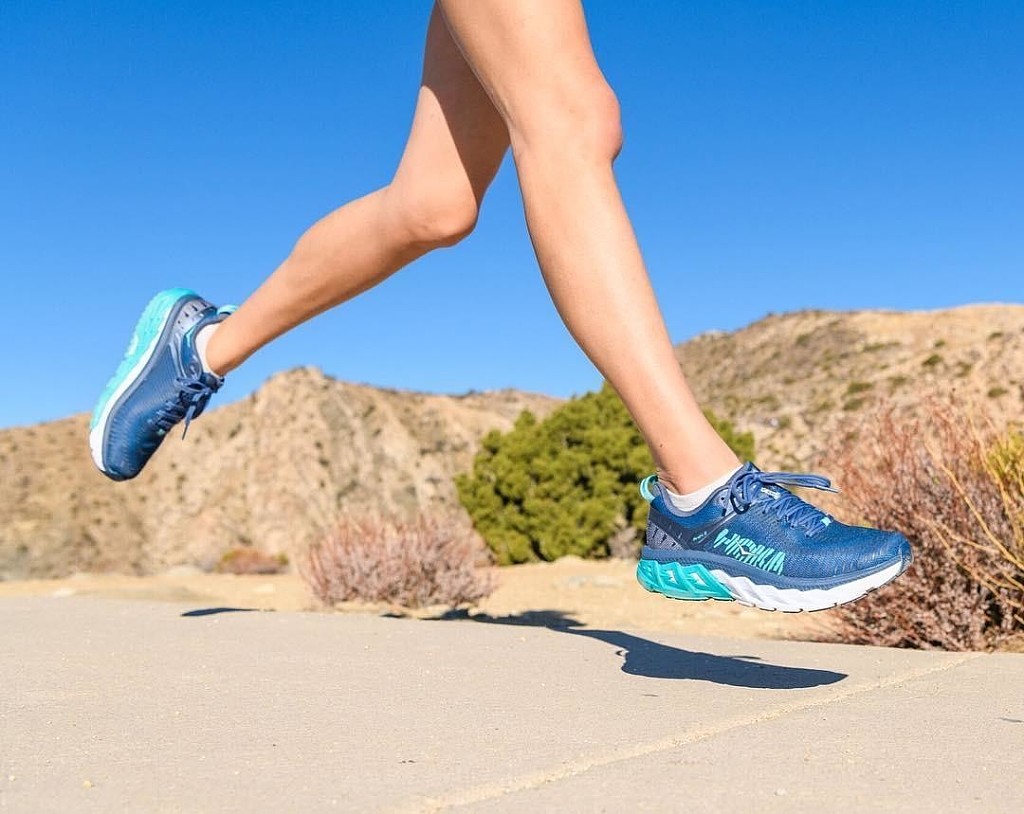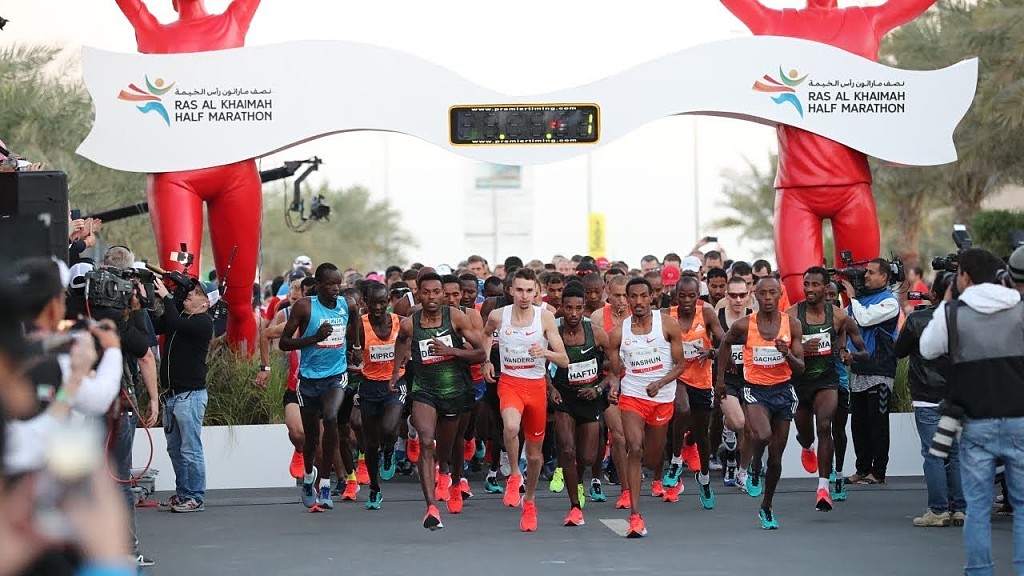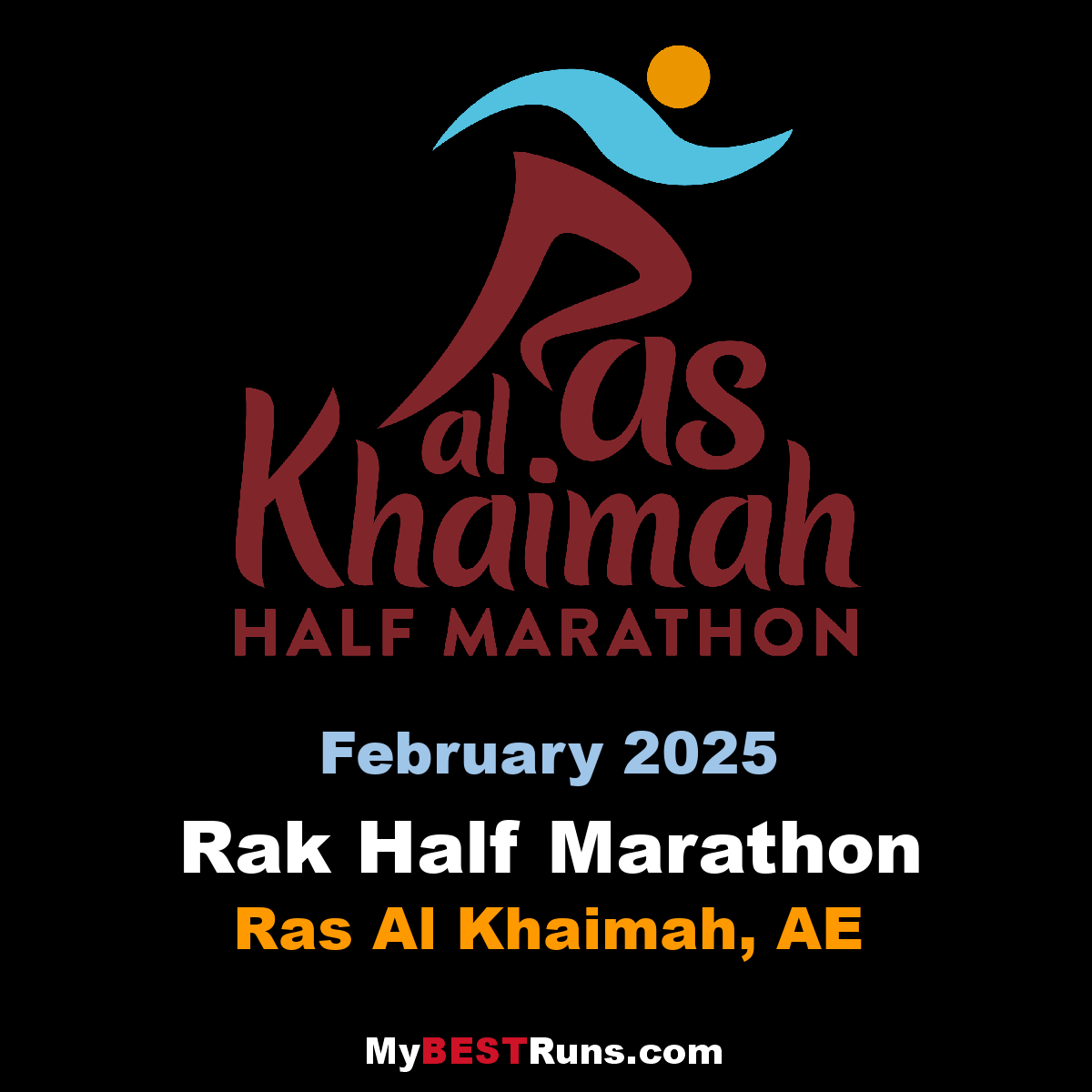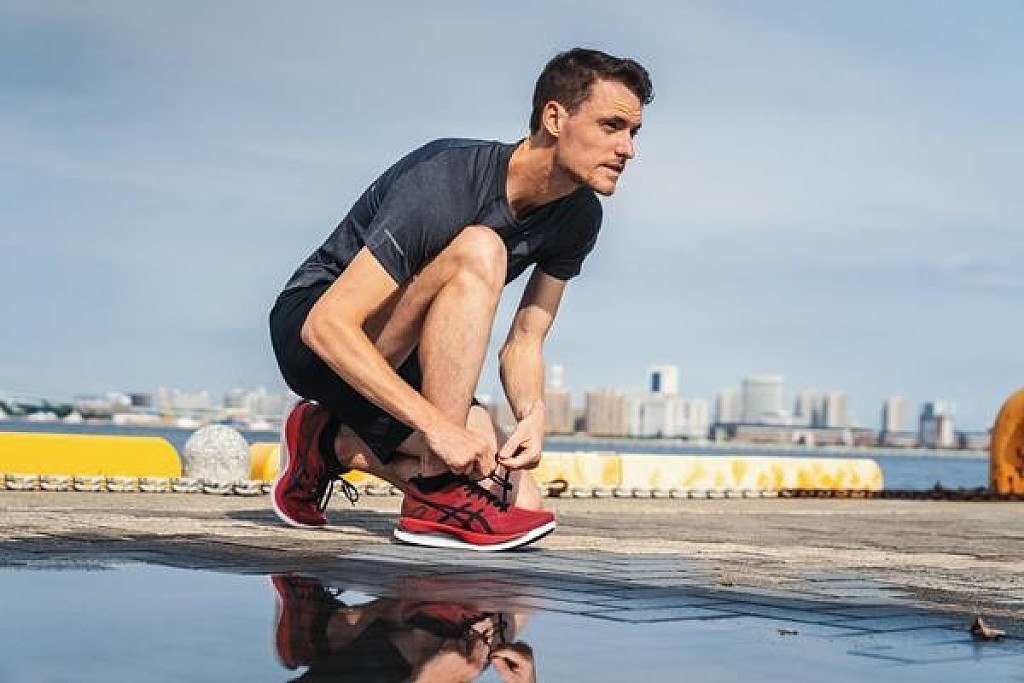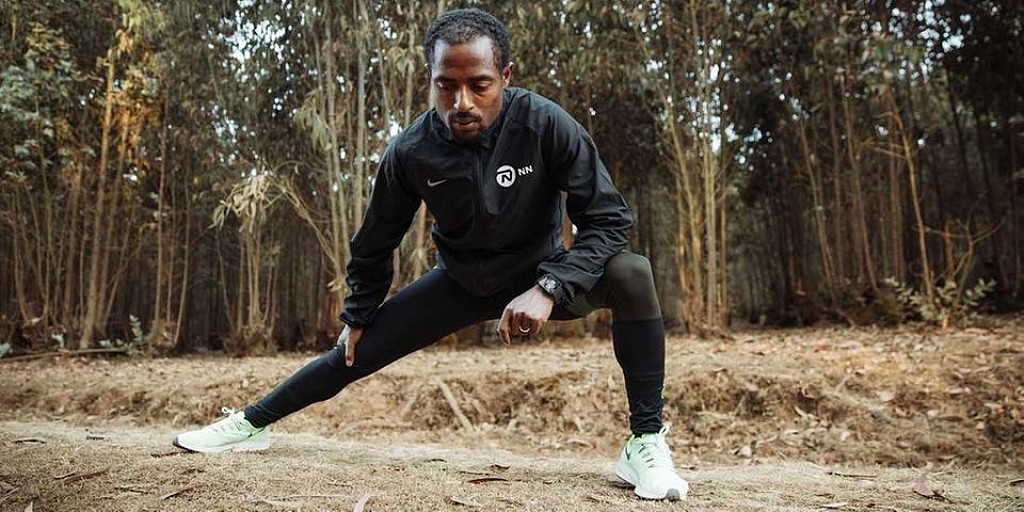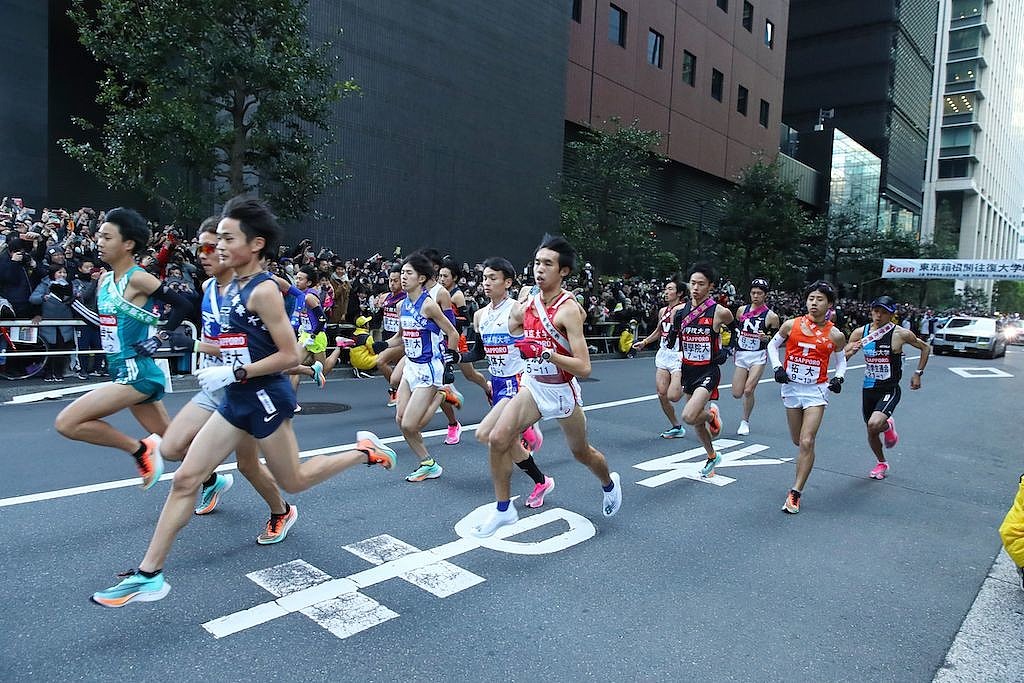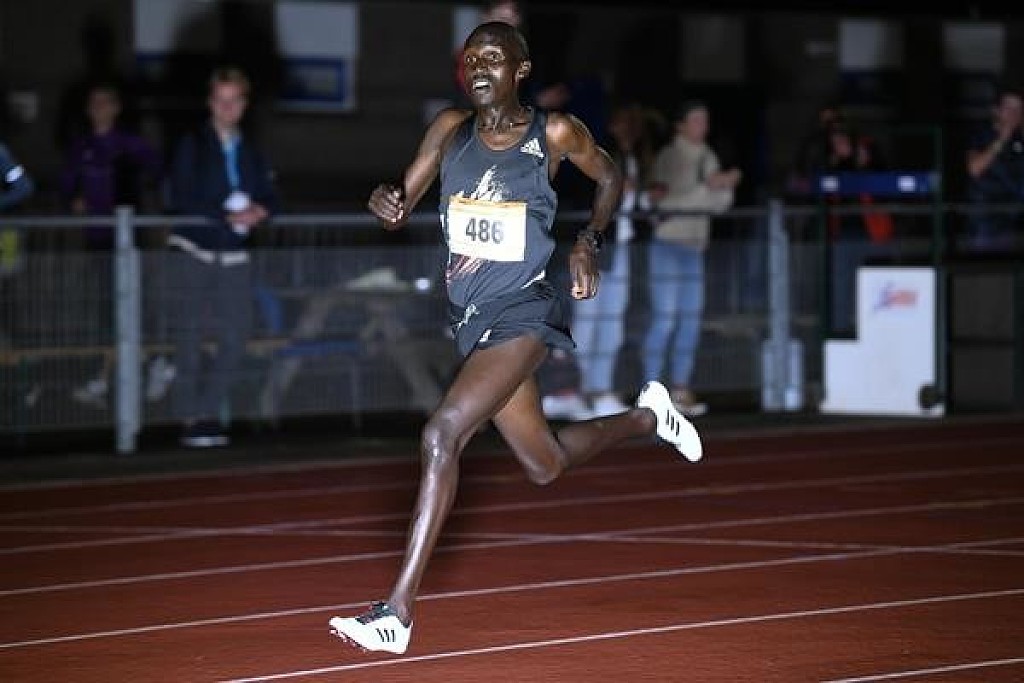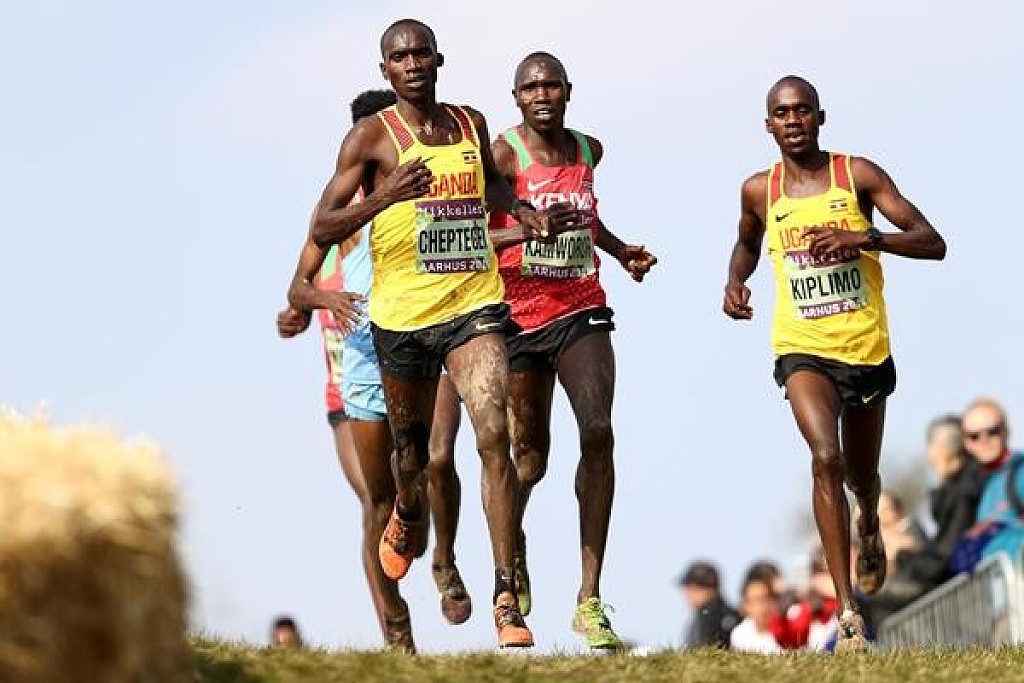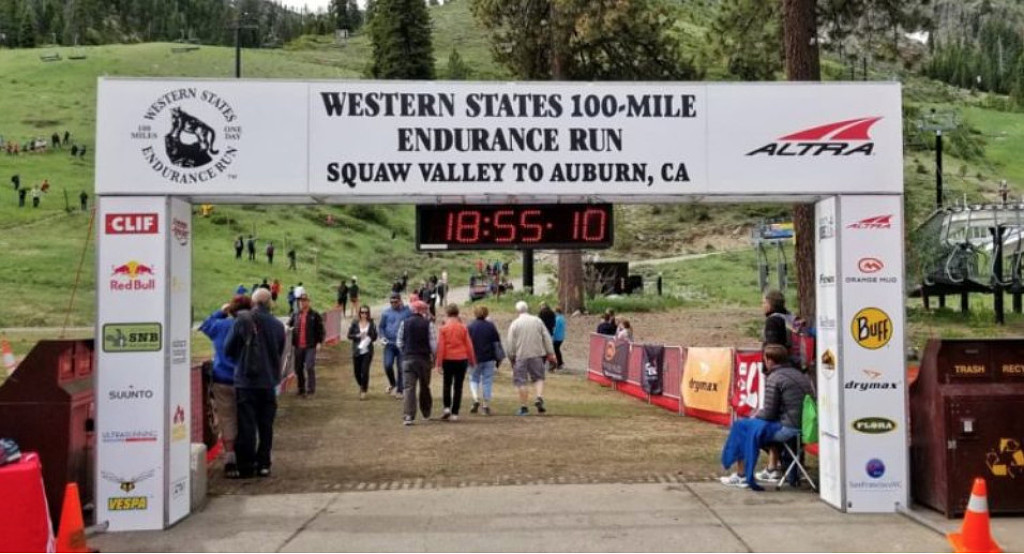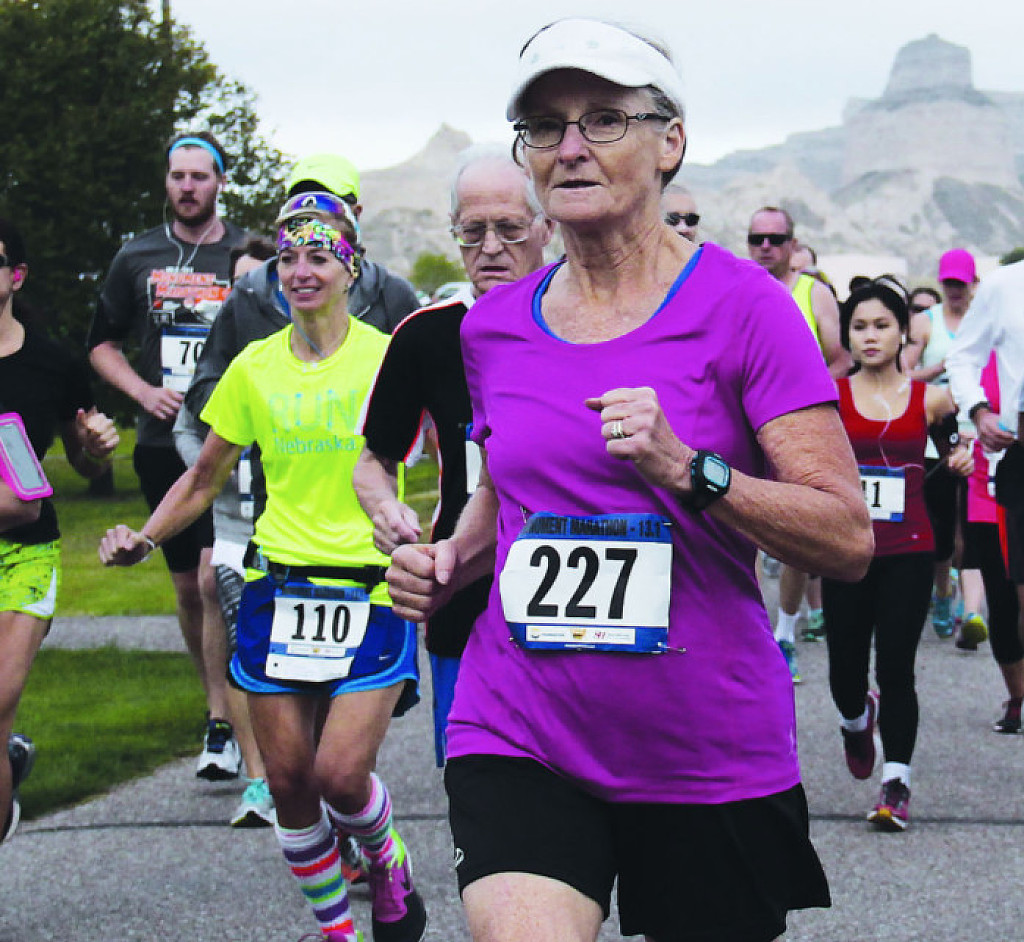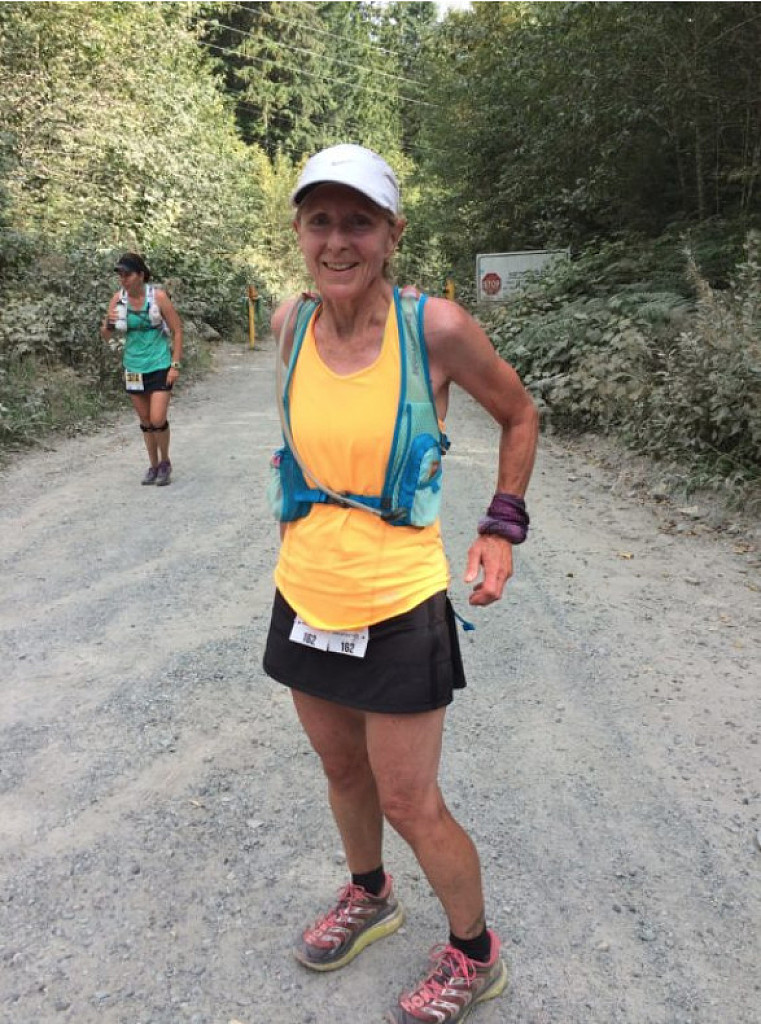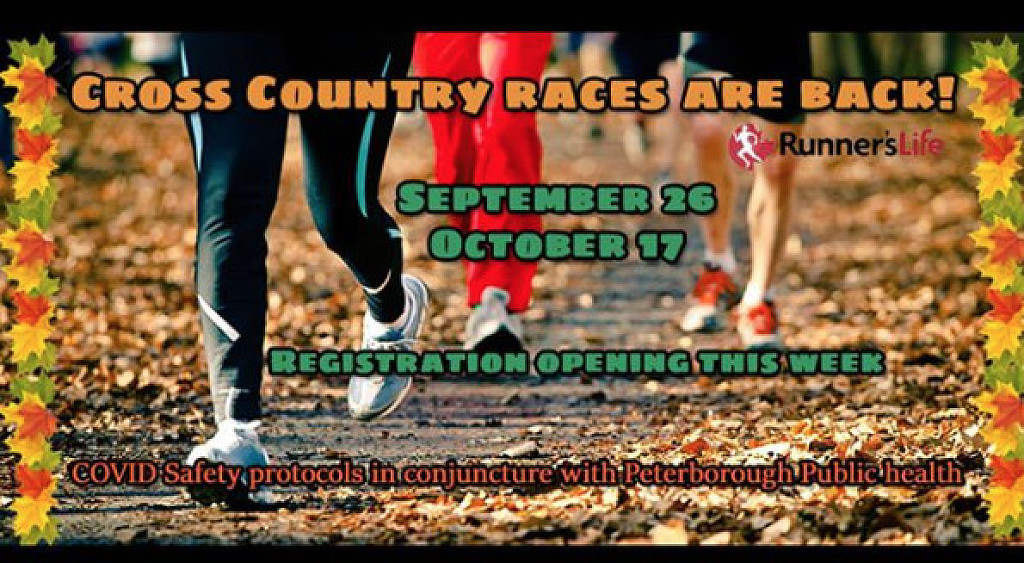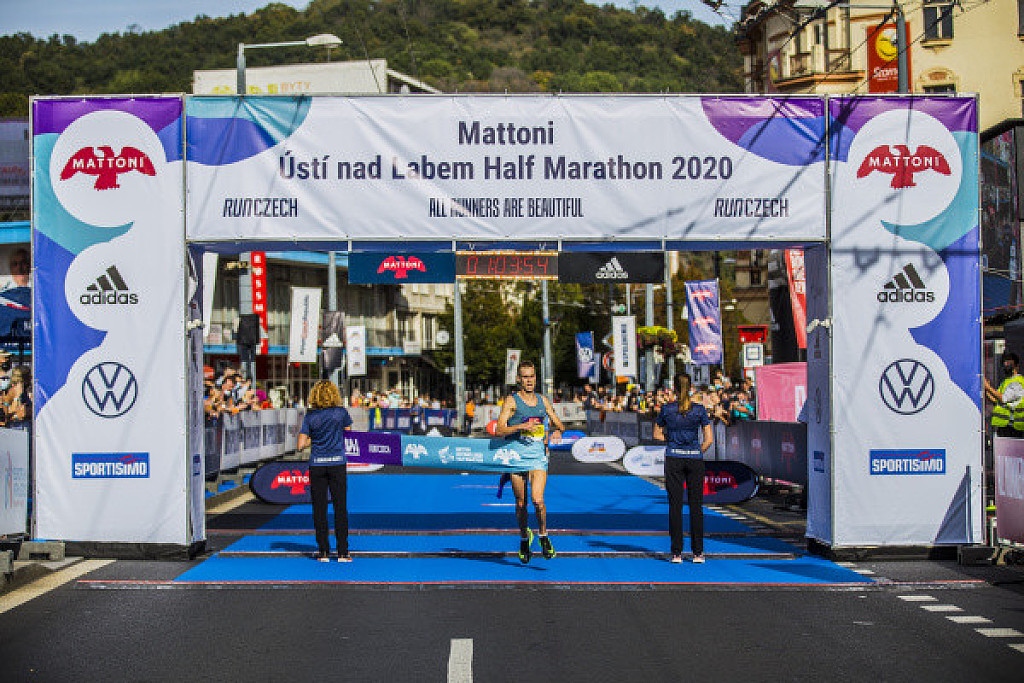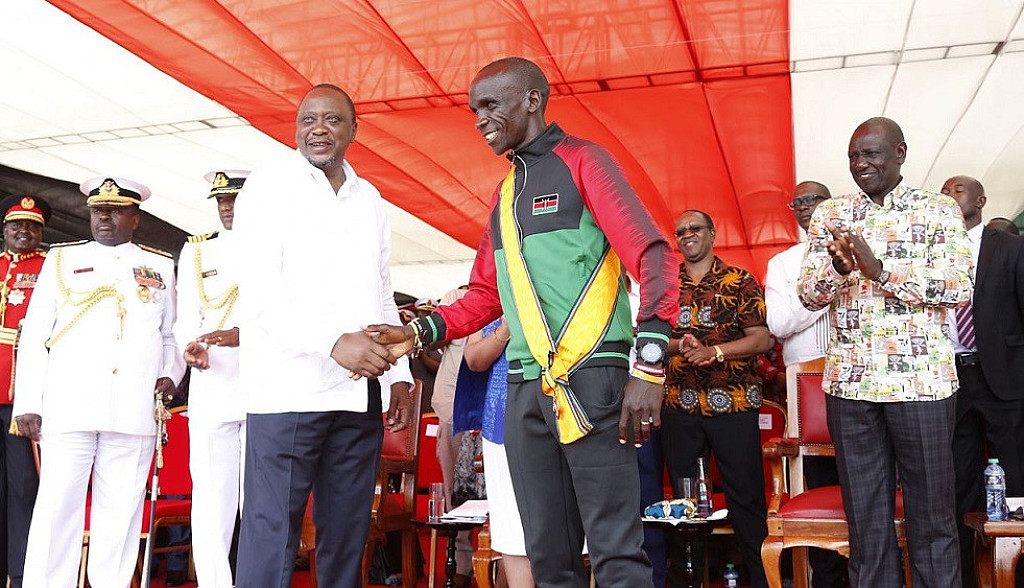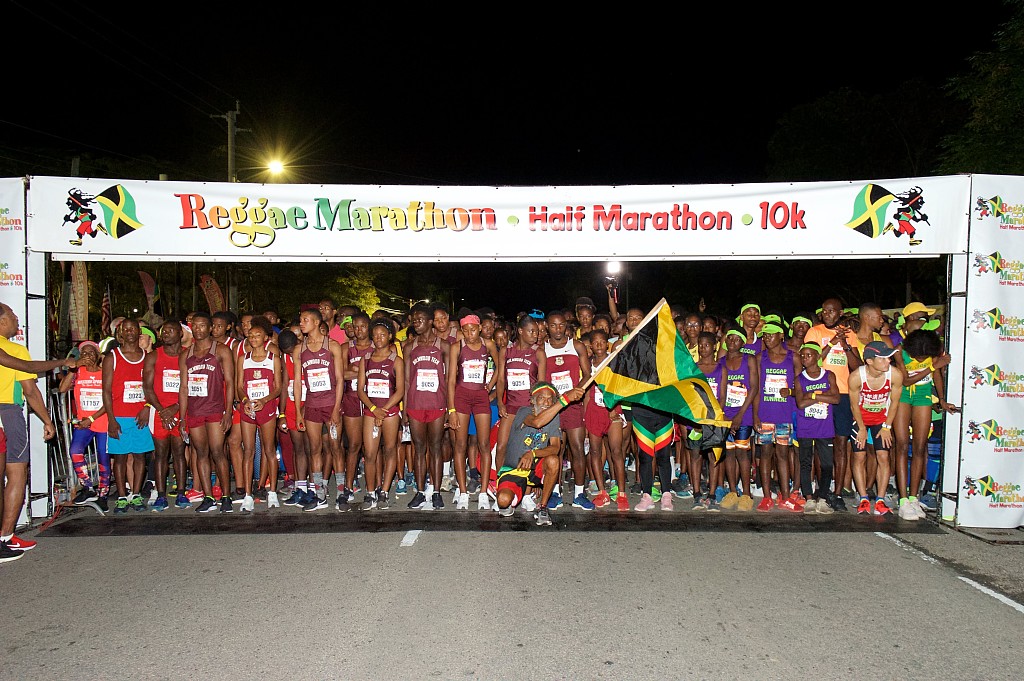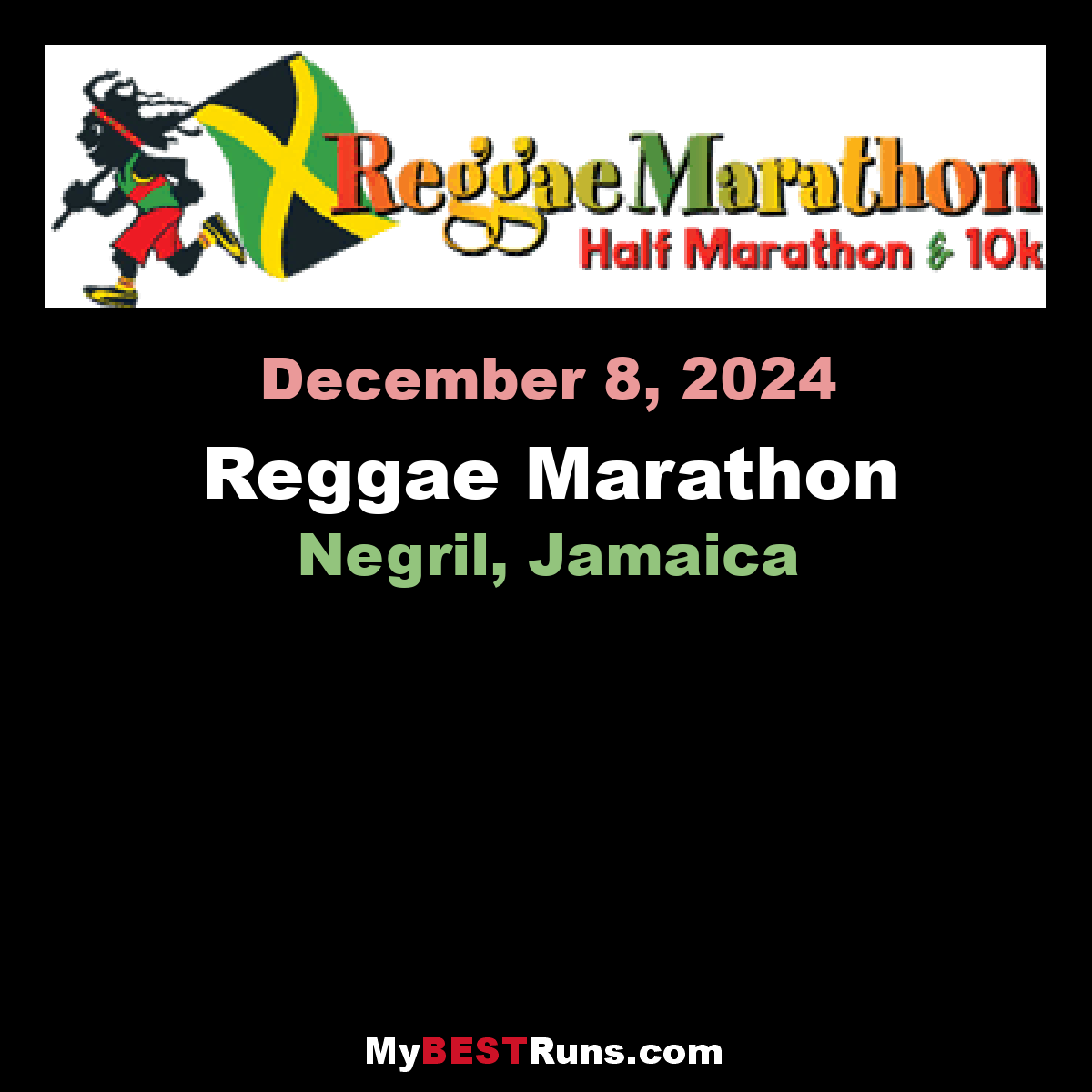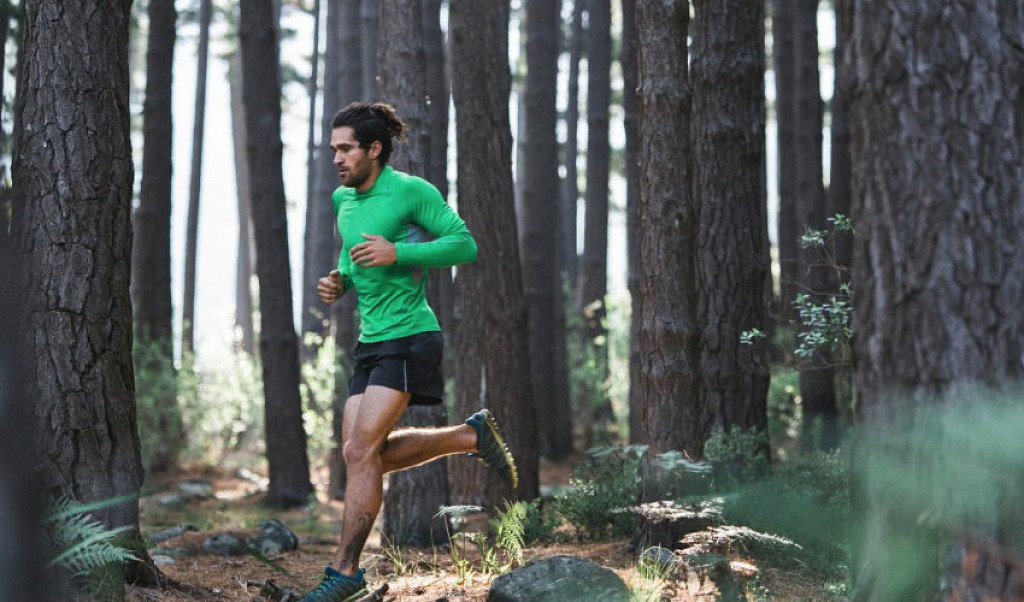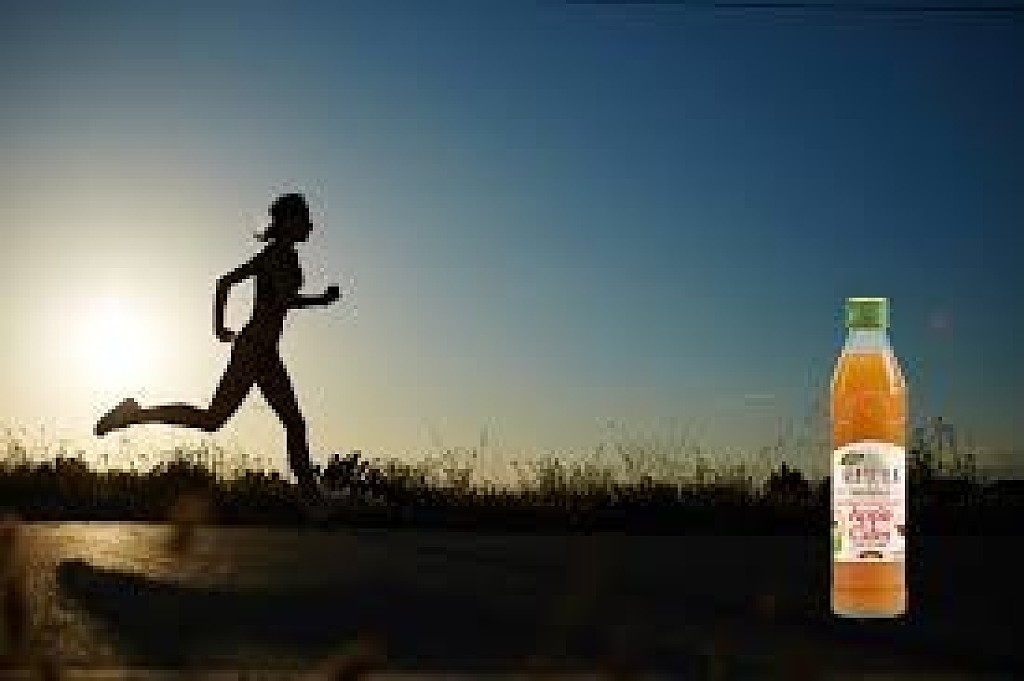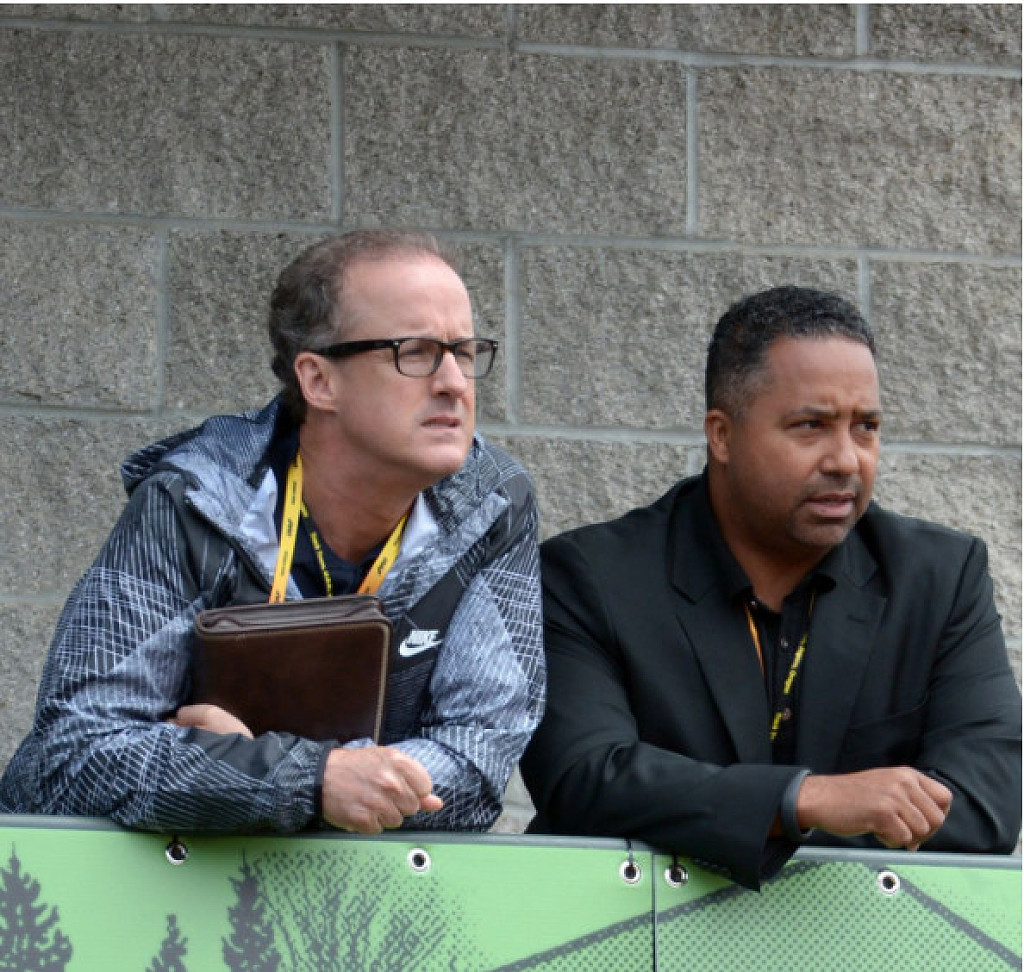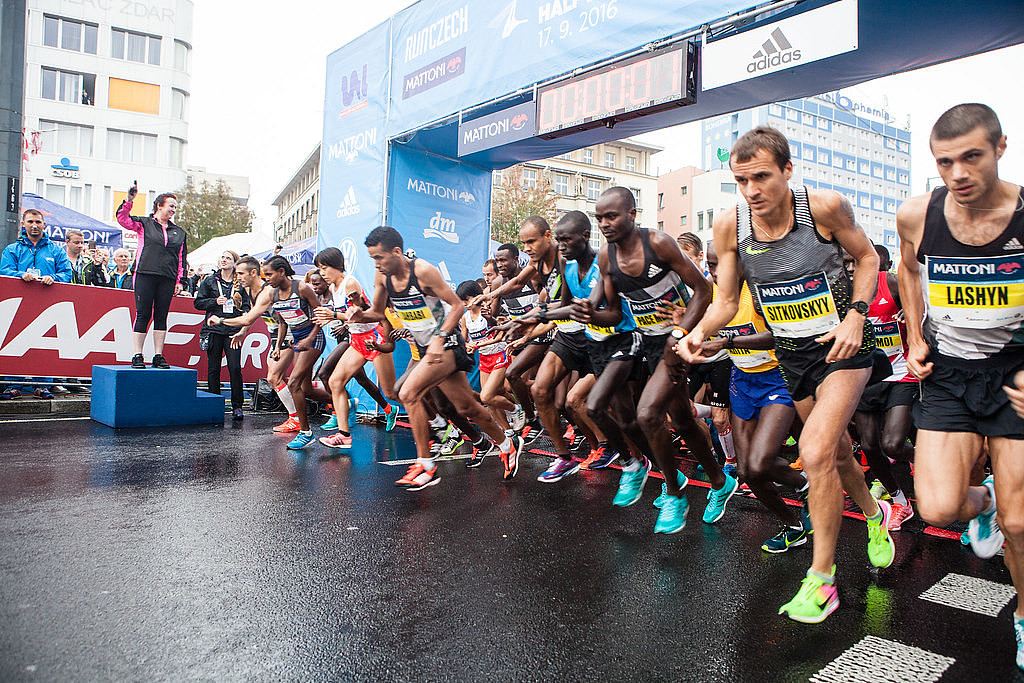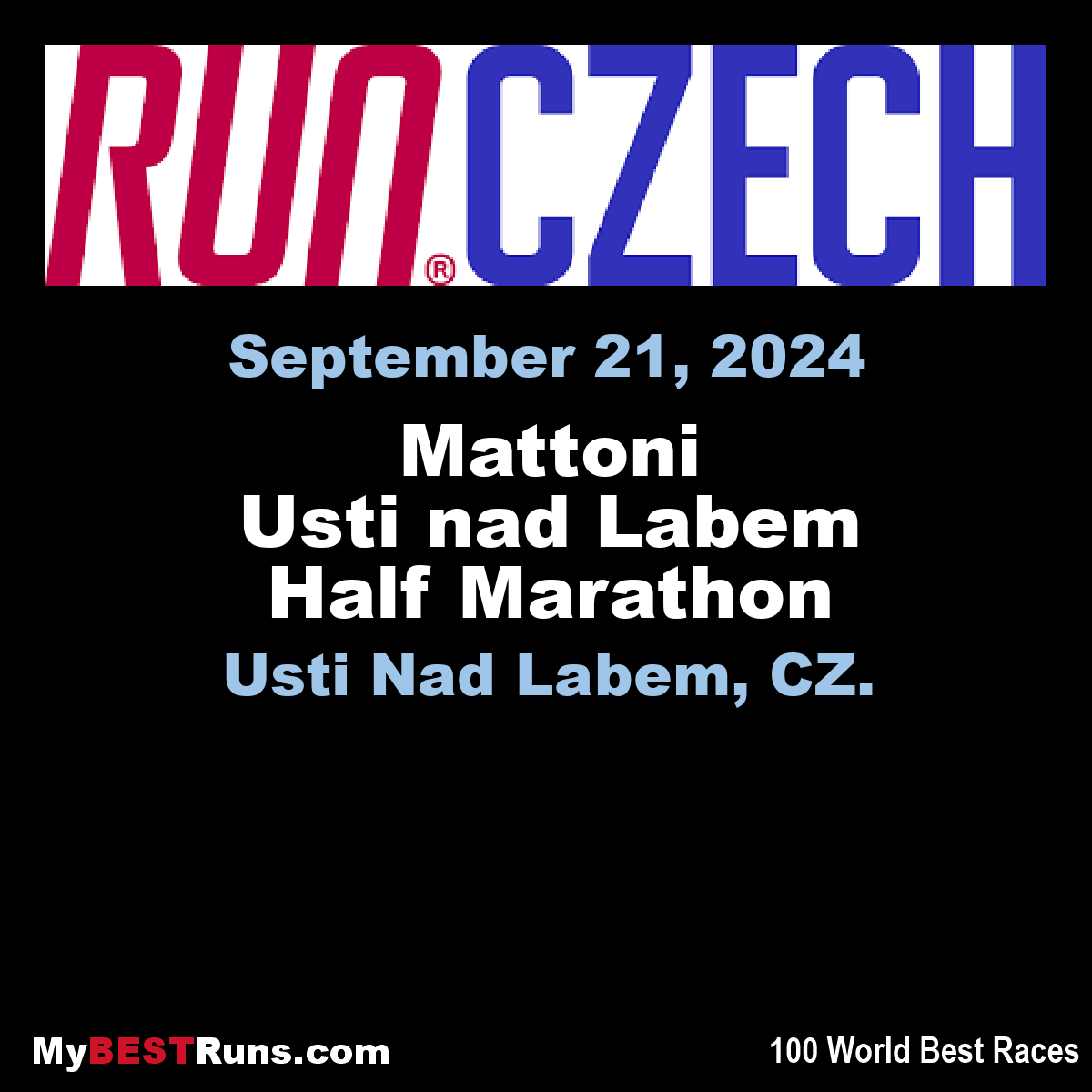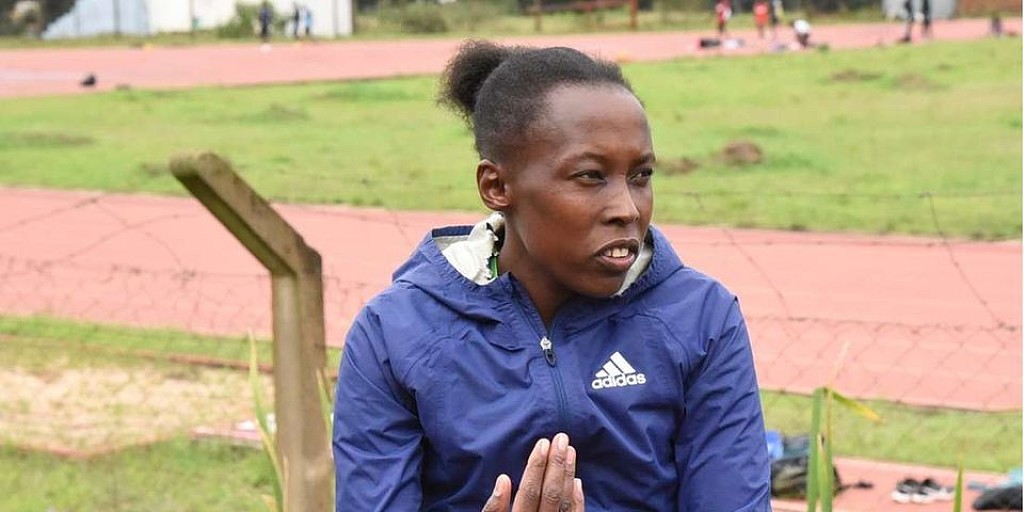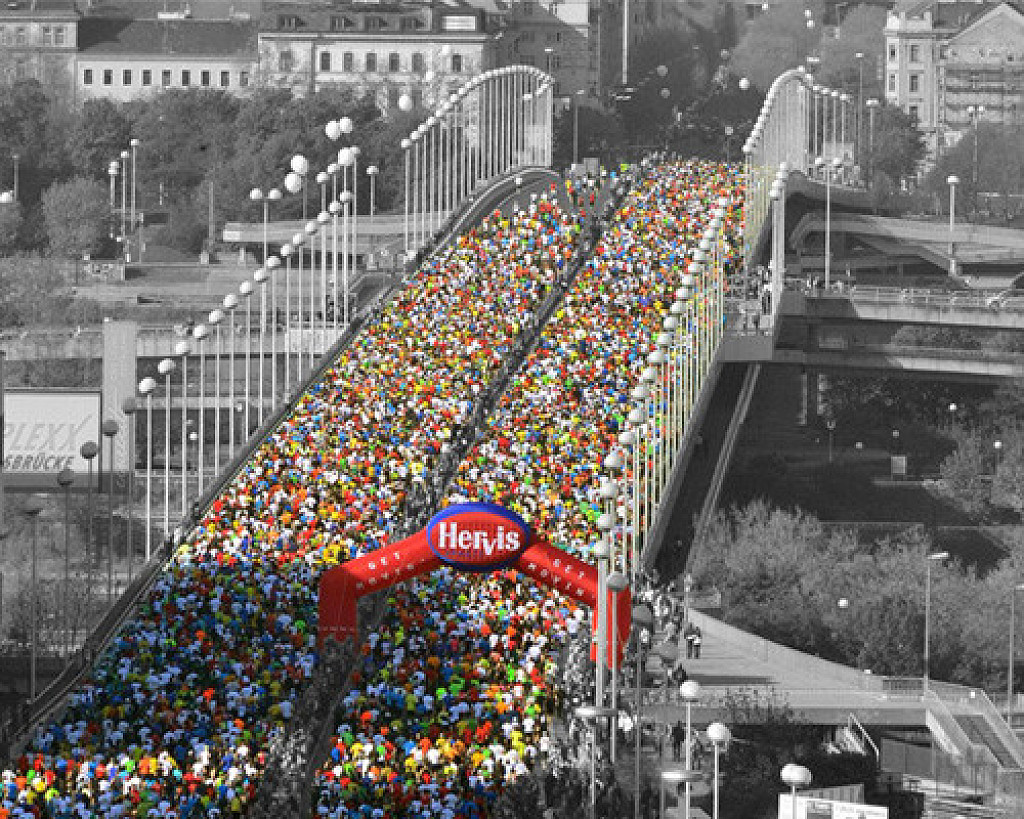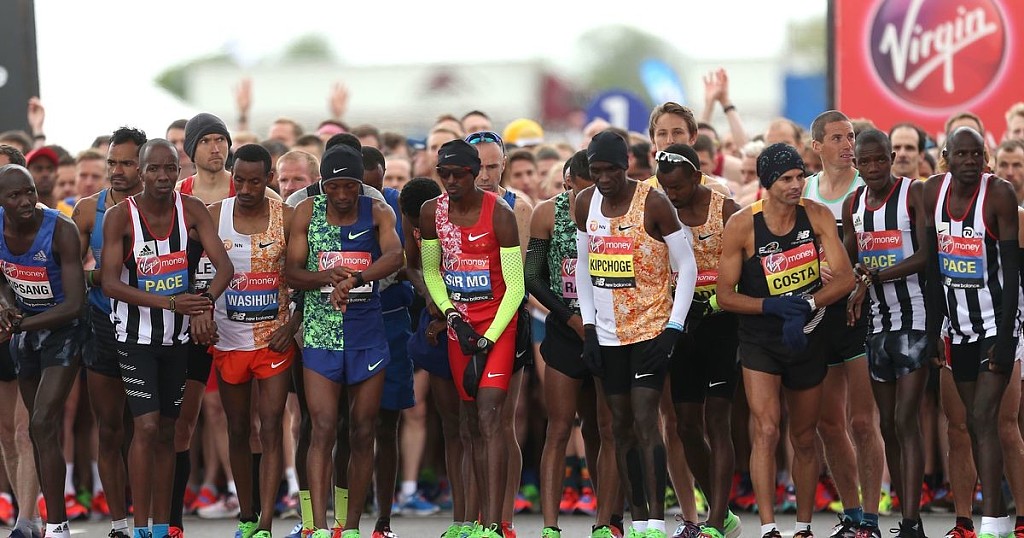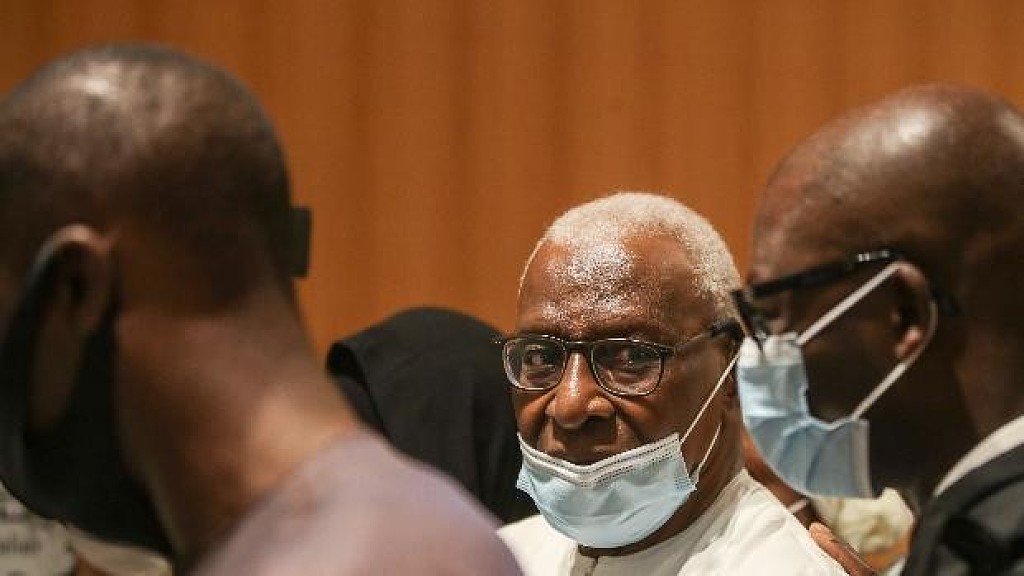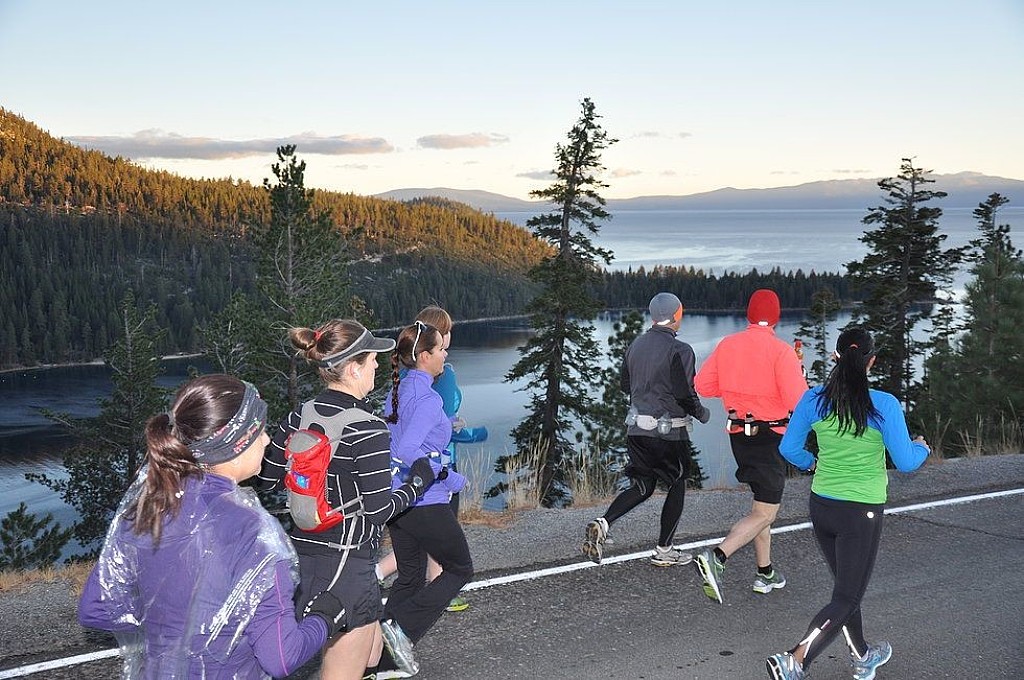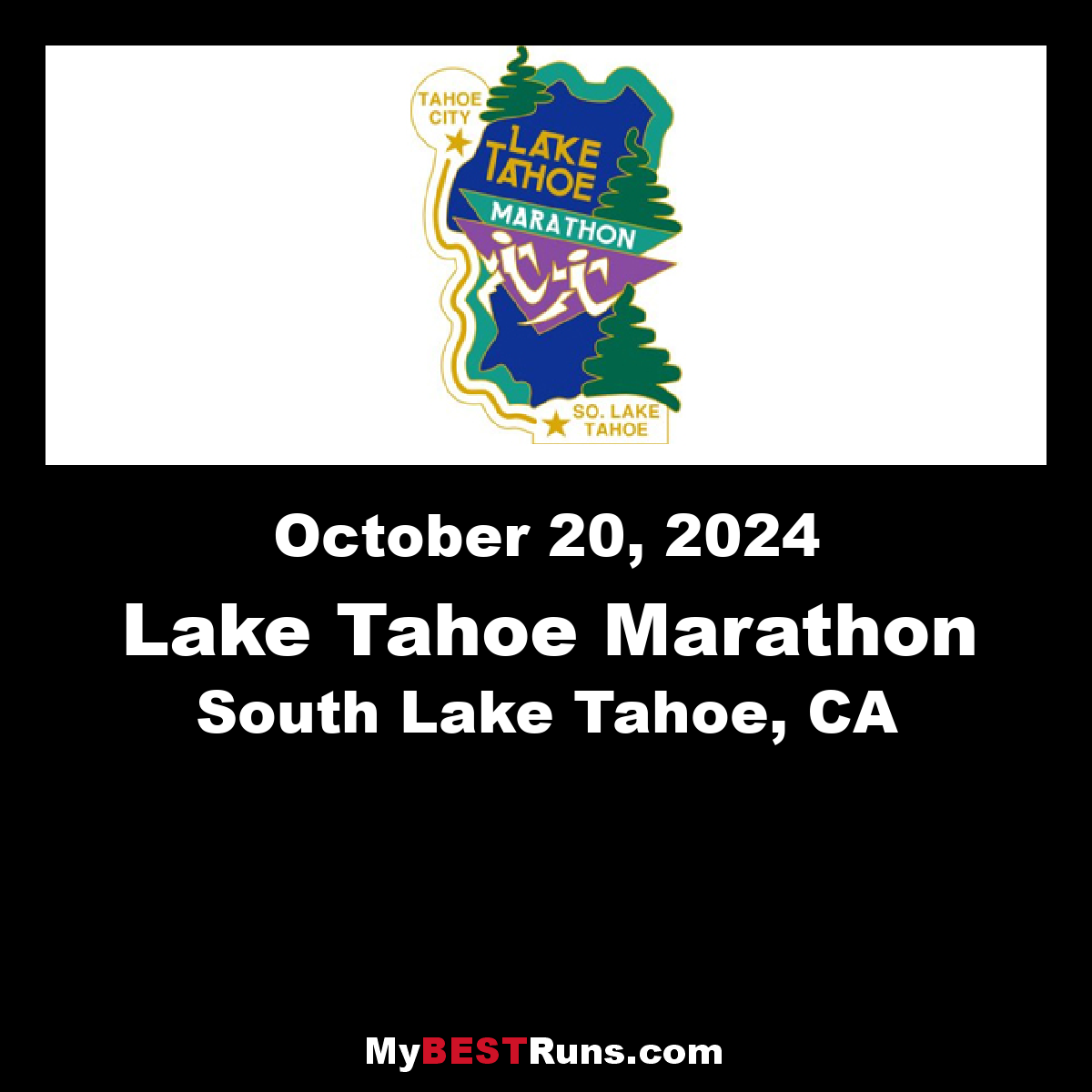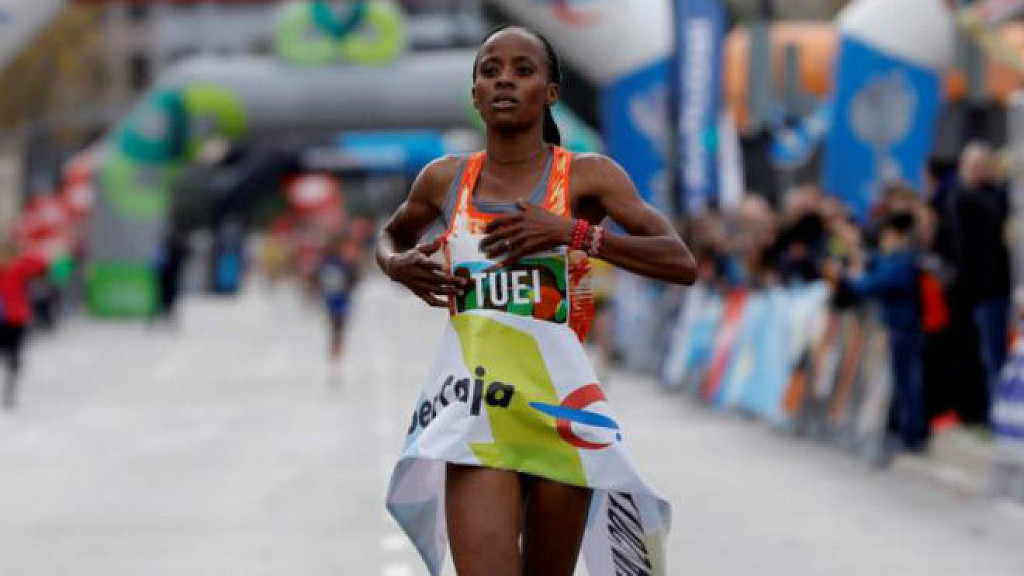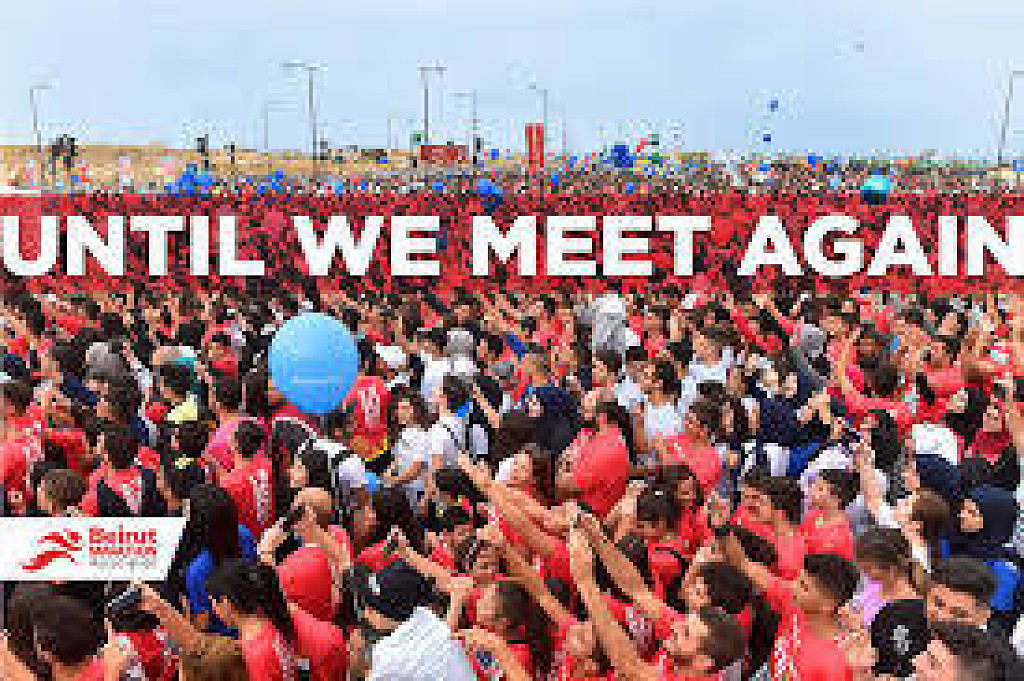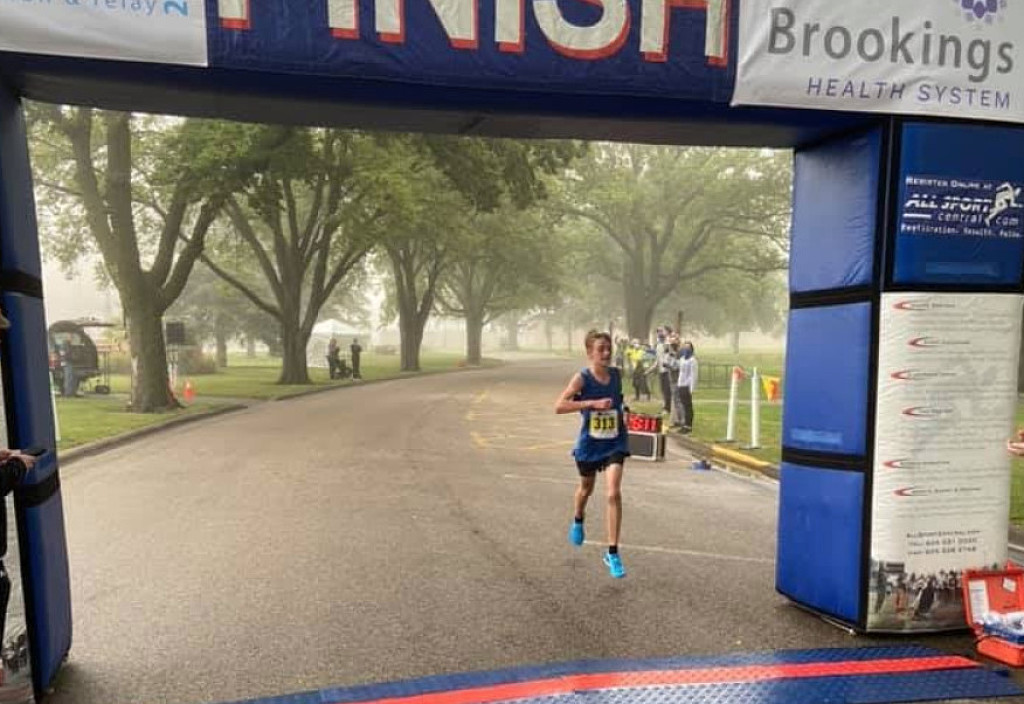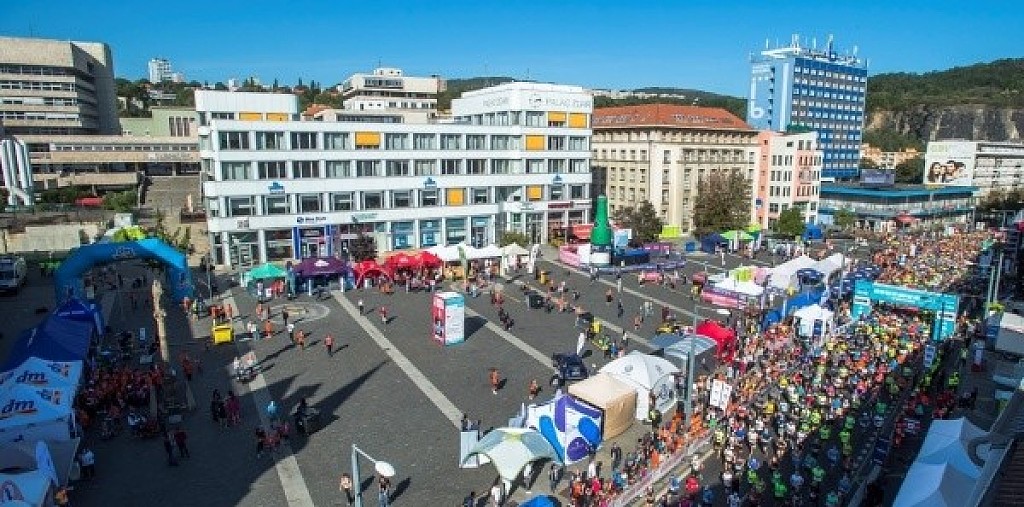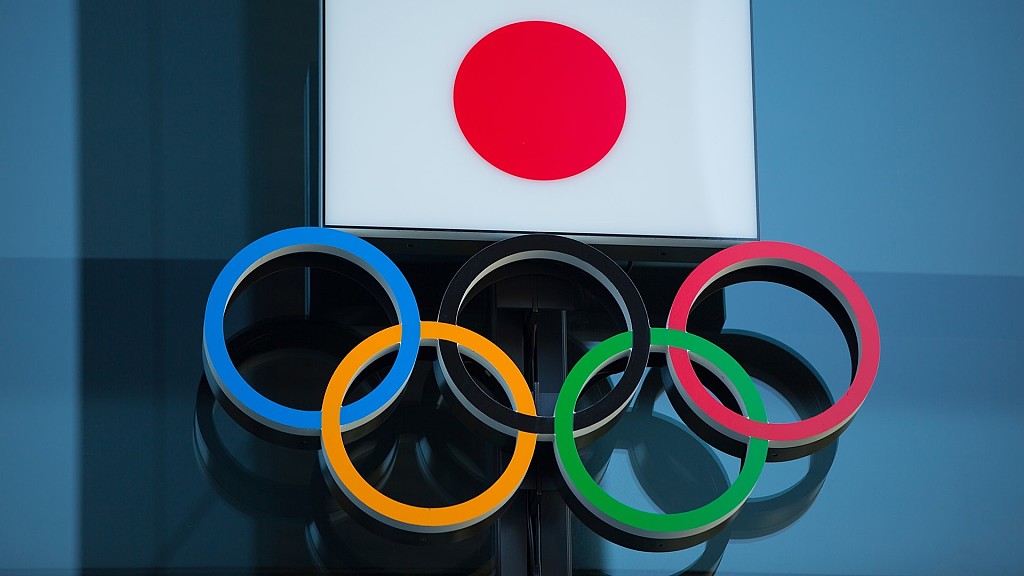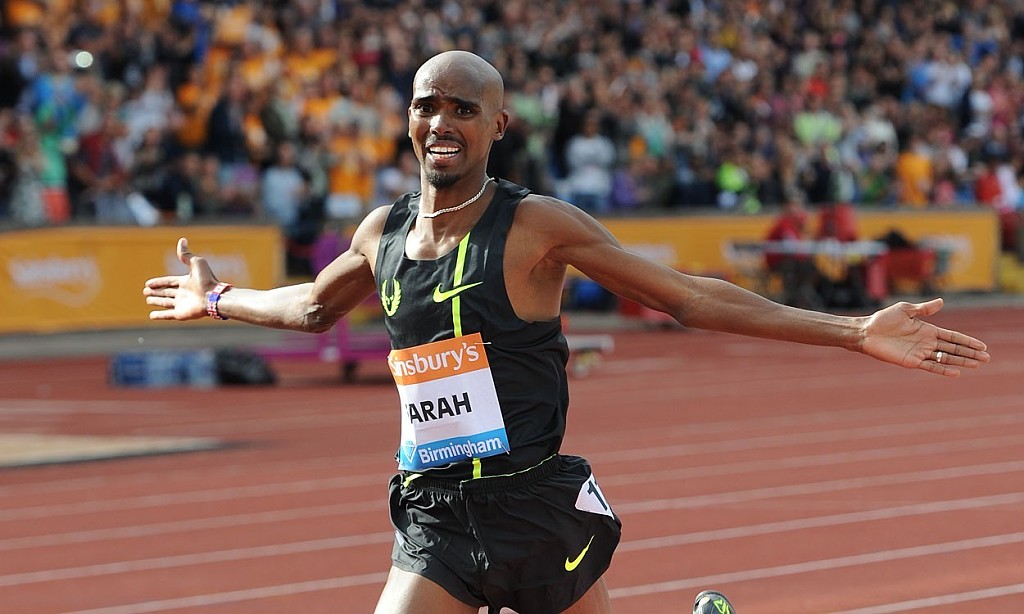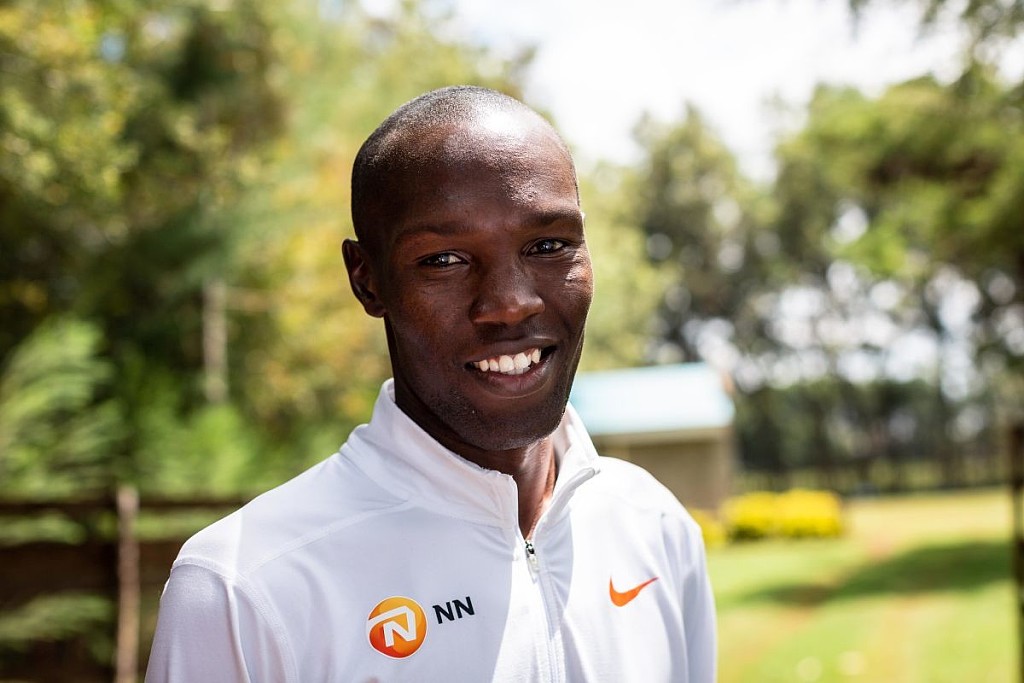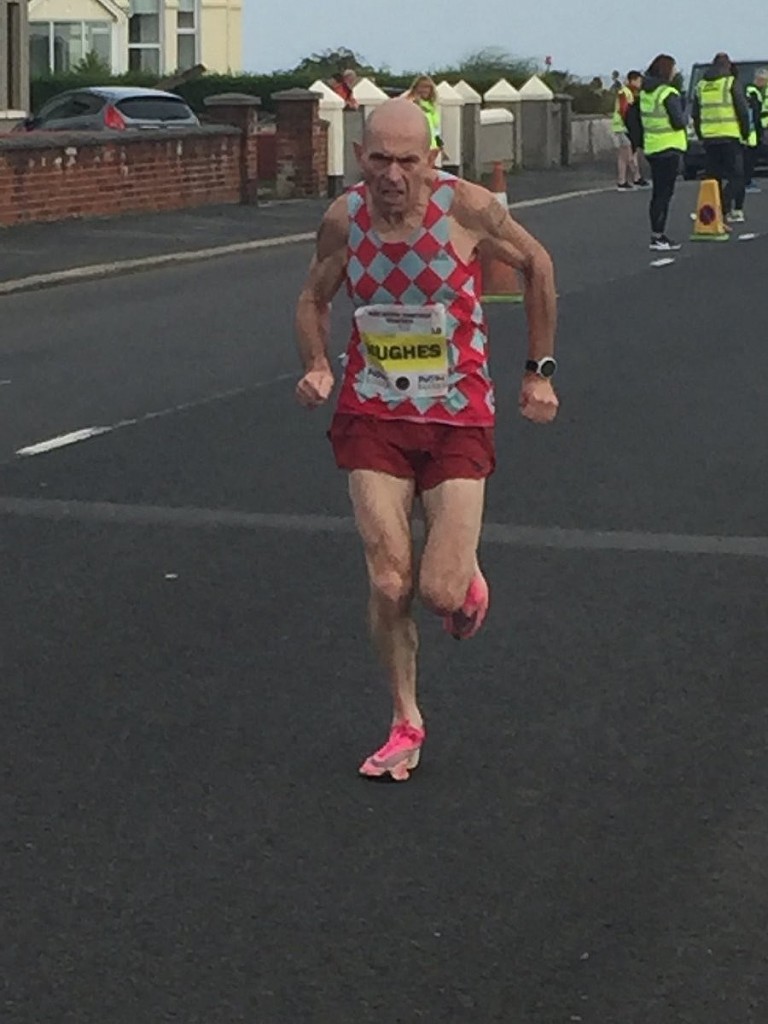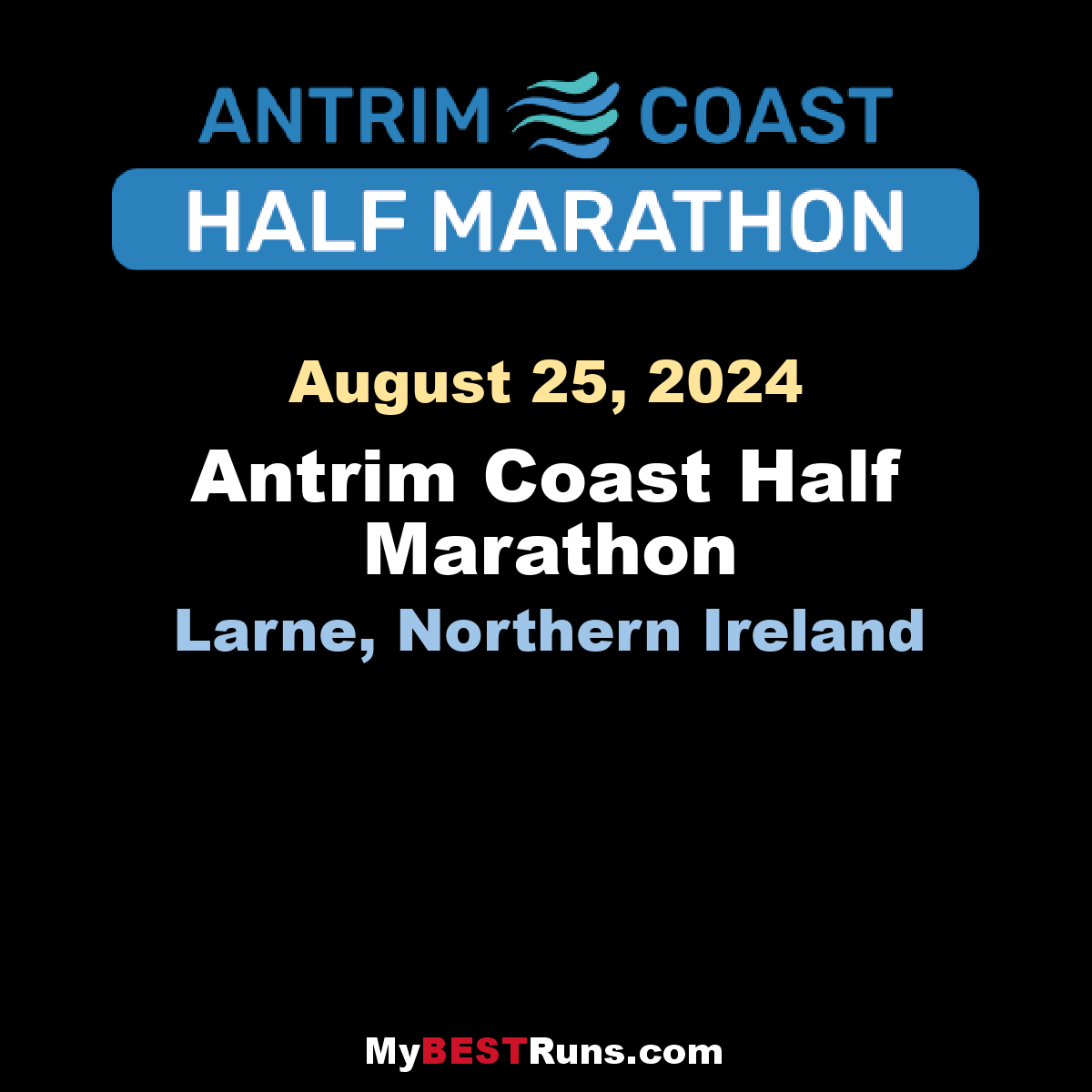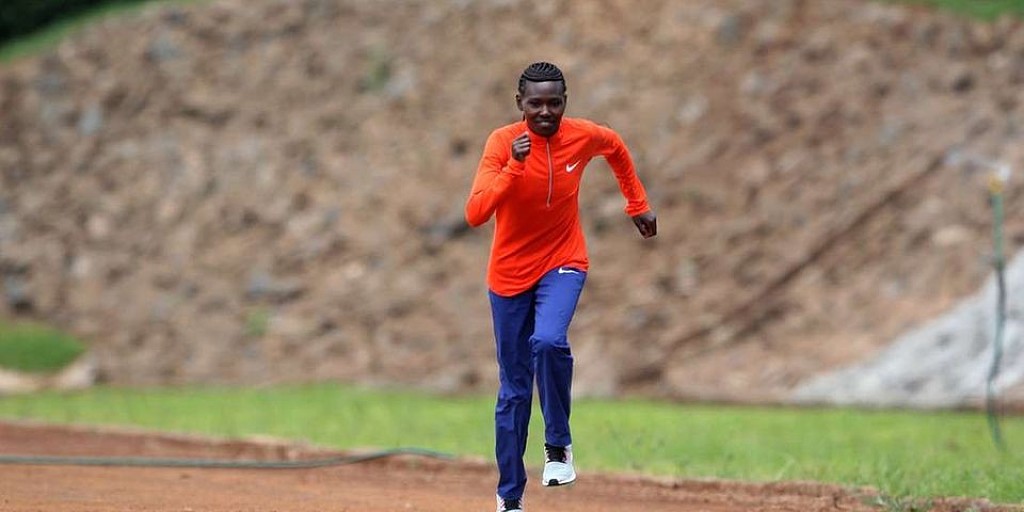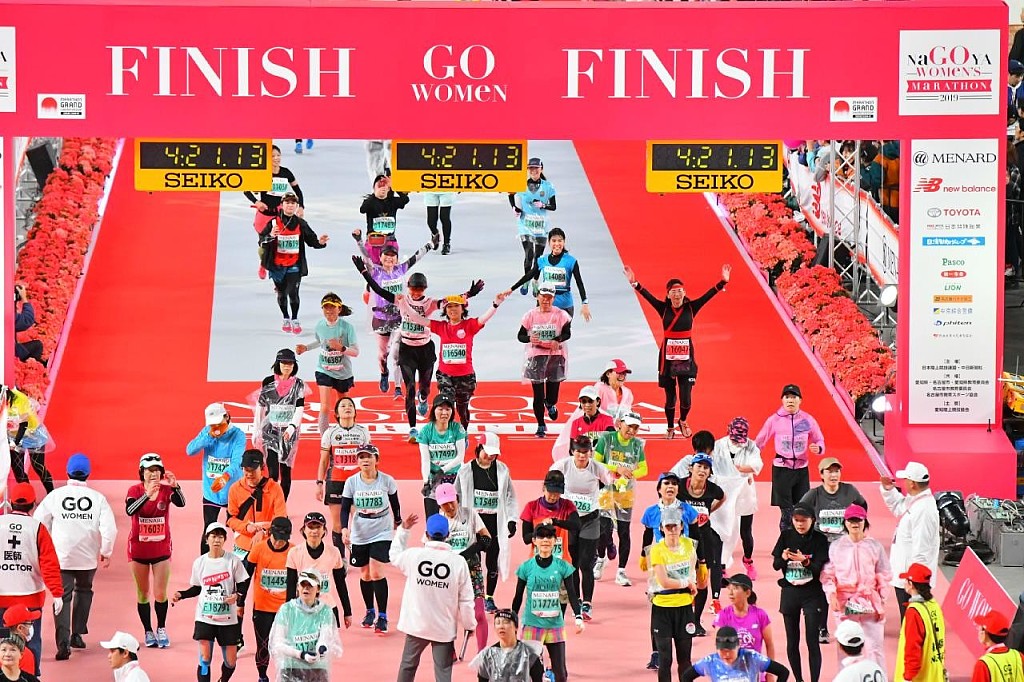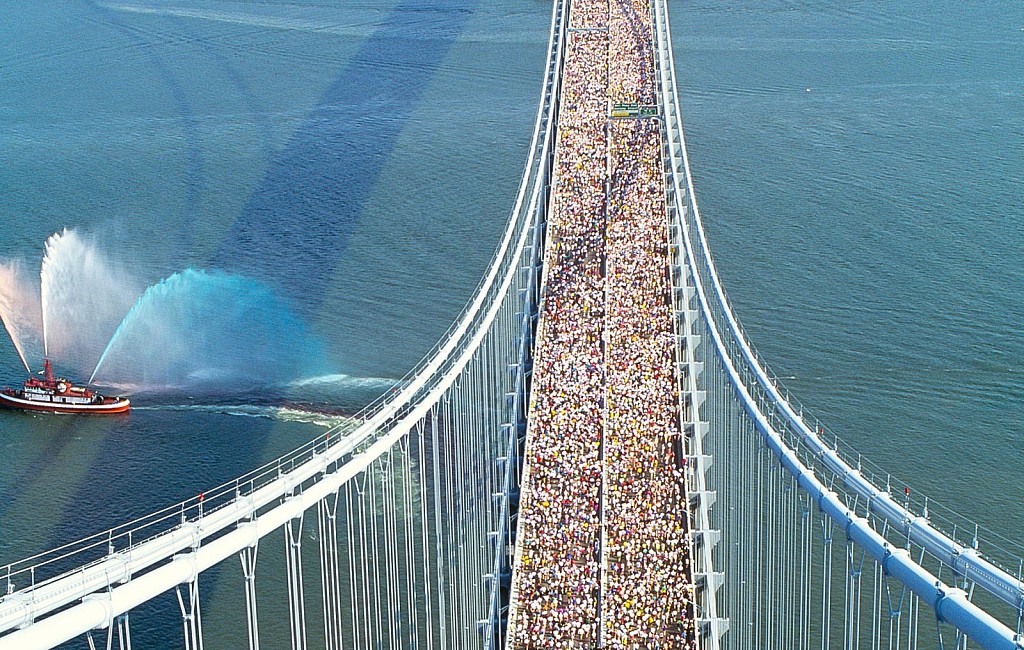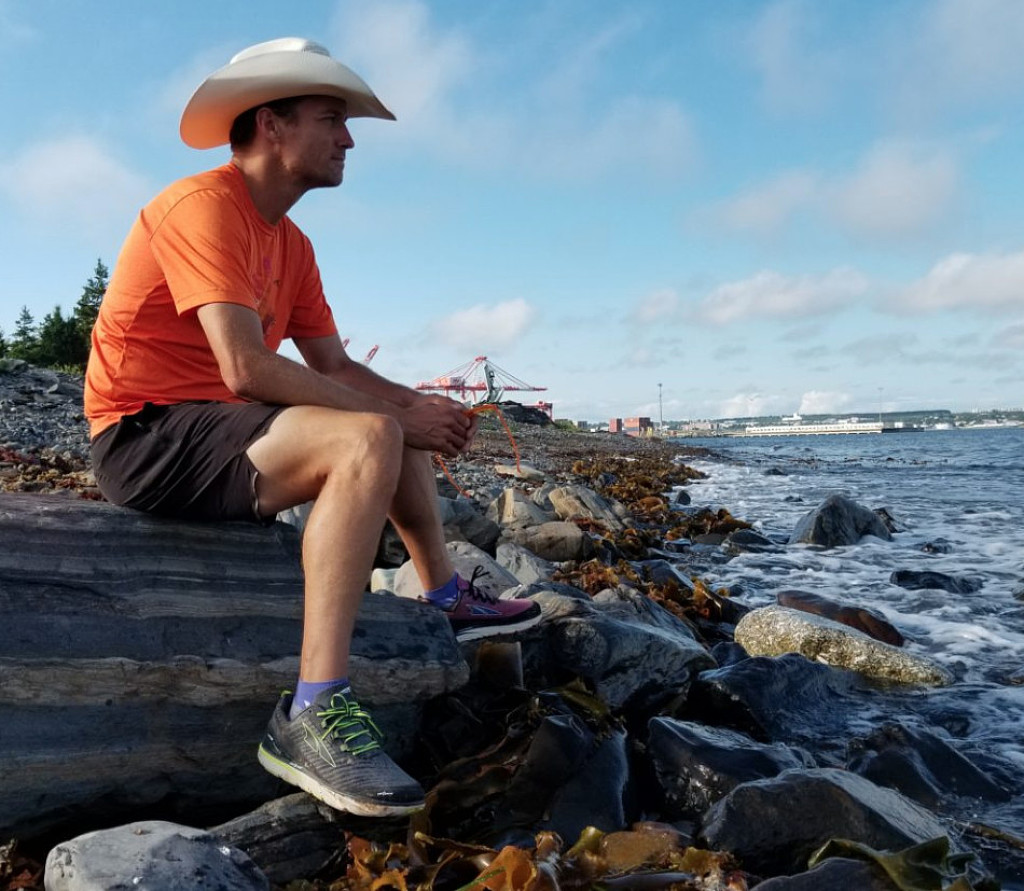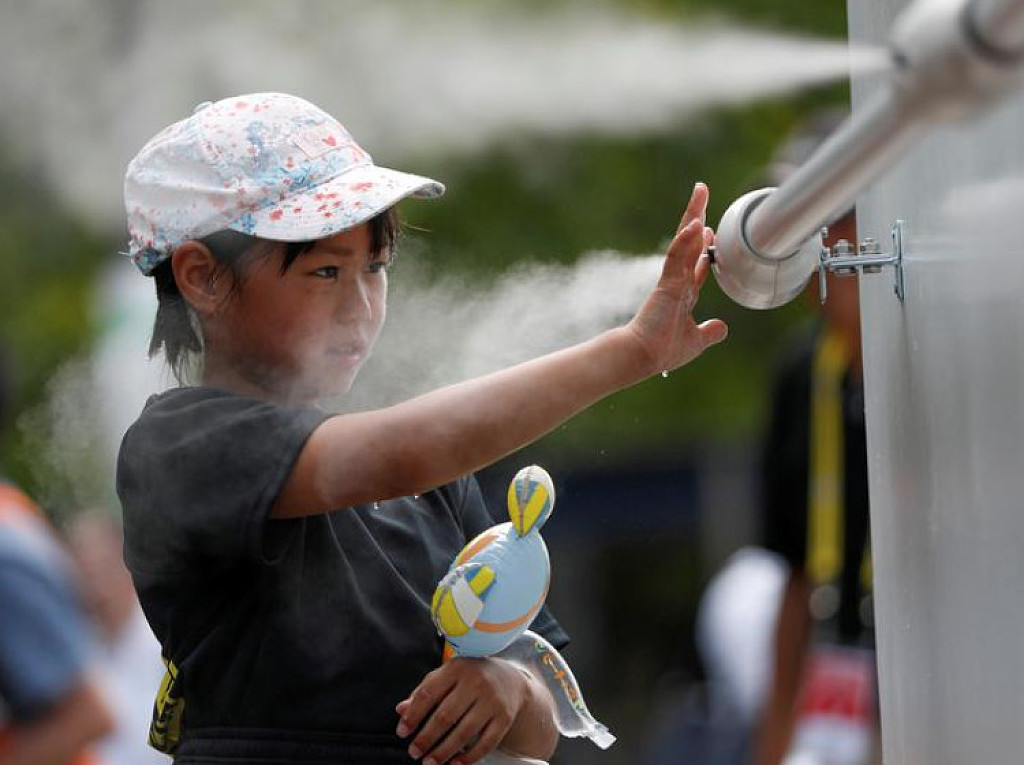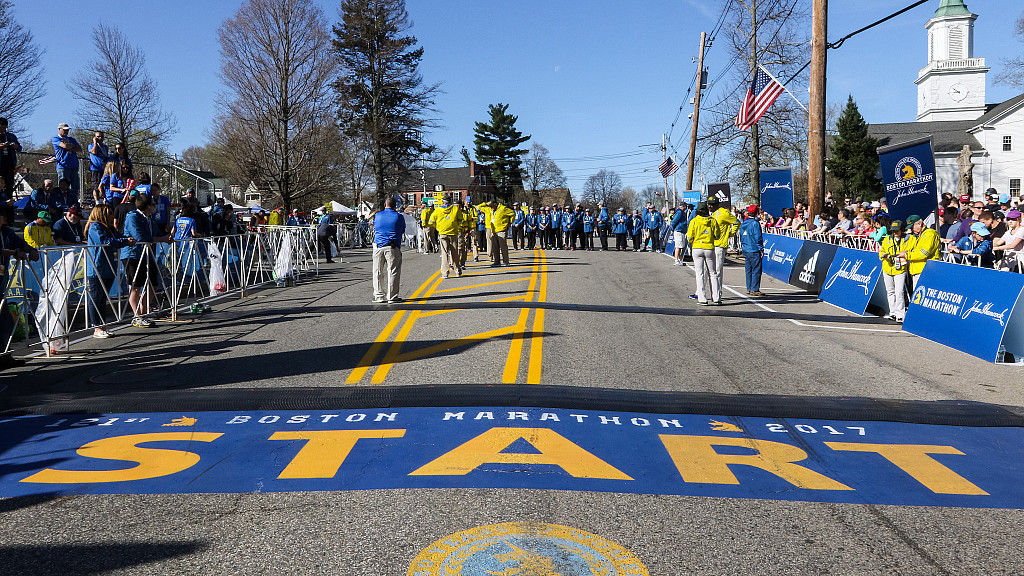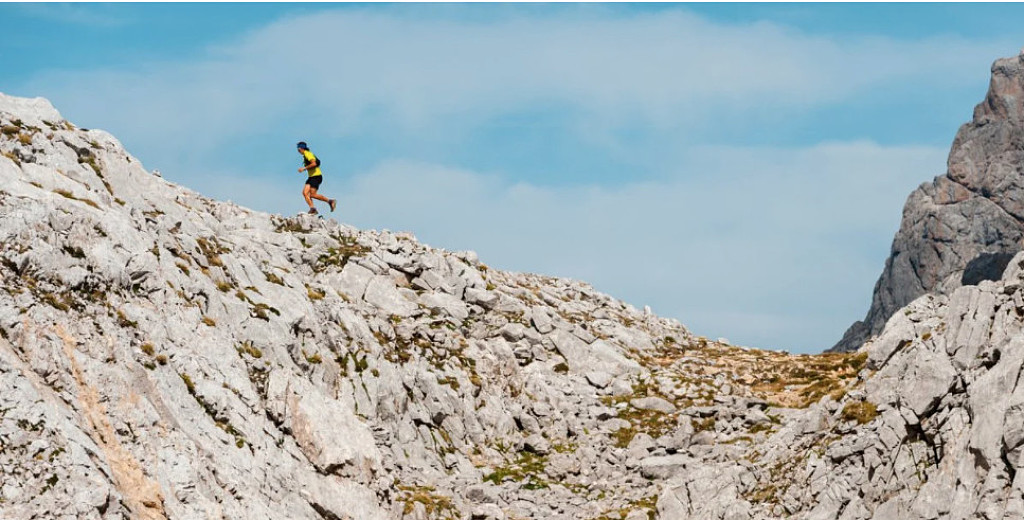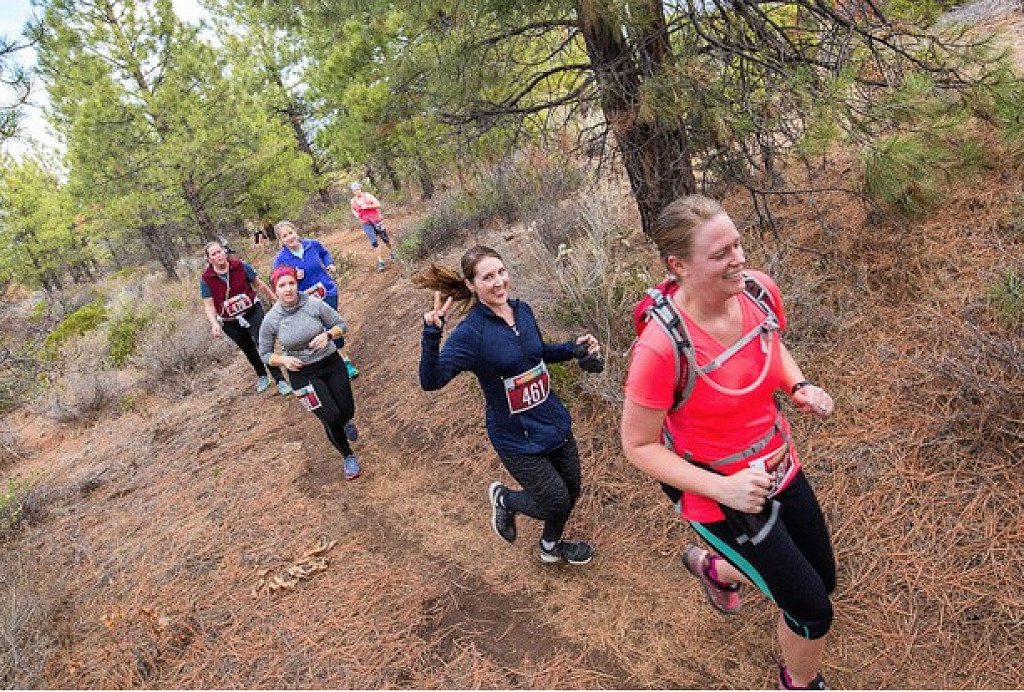Running News Daily
Running News Daily is edited by Bob Anderson in Mountain View, California USA and team in Thika Kenya, La Piedad Mexico, Bend Oregon, Chandler Arizona and Monforte da Beira Portugal. Send your news items to bob@mybestruns.com Advertising opportunities available. Over one million readers and growing. Train the Kenyan Way at KATA Running Retreat Kenya. (Kenyan Athletics Training Academy) in Thika Kenya. Opening in june 2024 KATA Running retreat Portugal. Learn more about Bob Anderson, MBR publisher and KATA director/owner, take a look at A Long Run the movie covering Bob's 50 race challenge.
Index to Daily Posts · Sign Up For Updates · Run The World Feed
Callum Hawkins and Charlotte Purdue will lead British squad for World Athletics Half Marathon Championships Gdynia 2020
Callum Hawkins and Charlotte Purdue will head the British squad for the World Athletics Half Marathon Championships Gdynia 2020 on October 17.
Hawkins, the the fourth place finisher in the marathon at last year's World Championships, clocked 1:00:01 at the Marugame Half Marathon in February, the fastest by a European this year. He'll be making his first appearance at the World Athletics Half Marathon Championships since 2016 when he finished 15th.
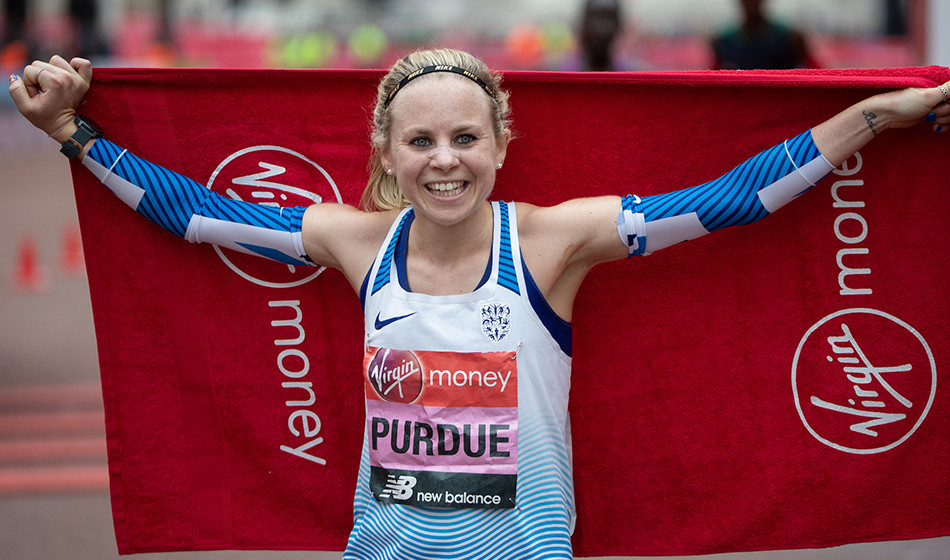
Hawkins joins British U23 half marathon record-holder Jake Smith, who was third in 1:02:00 at the Vitality Big Half, and Mohamud Aadan, who finished 36th at the 2018 World Half Marathon Championships.
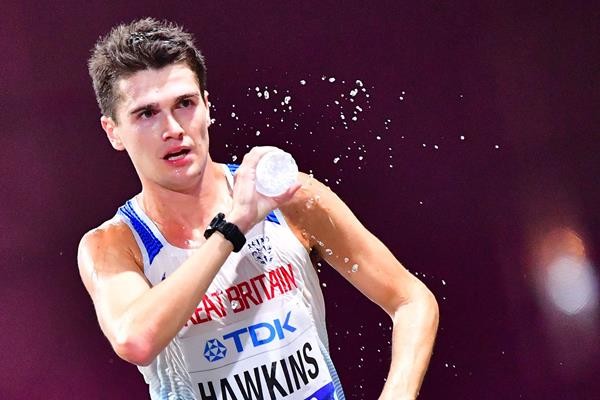
Like Hawkins, Purdue clocked her European lead of 1:08:23 in Marugame, finishing second. Purdue will be making her third World Half Marathon Championships appearance after finishing 33rd in 2016 and 21st in 2018.
Purdue is joined by Charlotte Arter, a teammate from 2018, who finished fifth at the Barcelona Half Marathon in February in a season’s best 1:10:00. She too will be making a third consecutive appearance at these championships.
Samantha Harrison and Stephanie Davis, who notched personal bests of 1:11:01 and 1:11:15 when finishing second and third place at the Big Half, join Hayley Carruthers in being handed British debuts in Poland.
Kristian Jones, who clocked a personal best of 1:03:09 at February’s Barcelona Half Marathon, and world trail bronze medallist Tom Evans, who lowered his PB to 1:03:15 in Antrim earlier this month, will also make their British debuts on the roads to round out the men's team.
"I am delighted that we are able to name such a strong team for the rescheduled World Athletics Half Marathon Championships in Gdynia, Poland, next month," said team leader Robert Hawkins.
"The team has been revised following athlete withdrawals from the original team named for March’s championship, but I feel we have been able to add a good blend of international experience to those that are making their first appearances on the roads for Great Britain & Northern Ireland."
British team for Gdynia
Men: Mohamud Aadan, Tom Evans, Callum Hawkins, Kristian Jones, Jake Smith
Women: Charlotte Arter, Hayley Carruthers, Stephanie Davis, Samantha Harrison, Charlotte Purdue
(09/24/2020) ⚡AMPby World Athletics
Hellen Obiri will experience the next-best thing when she takes to the start line for the 3000m at the Wanda Diamond League meeting in Doha on Friday
In a year without any major international championships, world 5000m champion Hellen Obiri will experience the next-best thing when she takes to the start line for the 3000m at the Wanda Diamond League meeting in Doha on Friday (25).
“It’s going to be like a championship race,” she said when asked about the quality of the field.
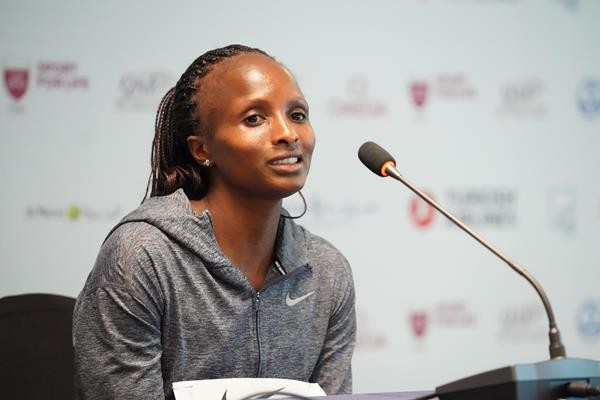
In fact, it’s arguably a higher standard than a championship race, because it brings together medalists in four different events from last year’s World Championships and isn’t limited to just three athletes per nation as would be the case at most championships.
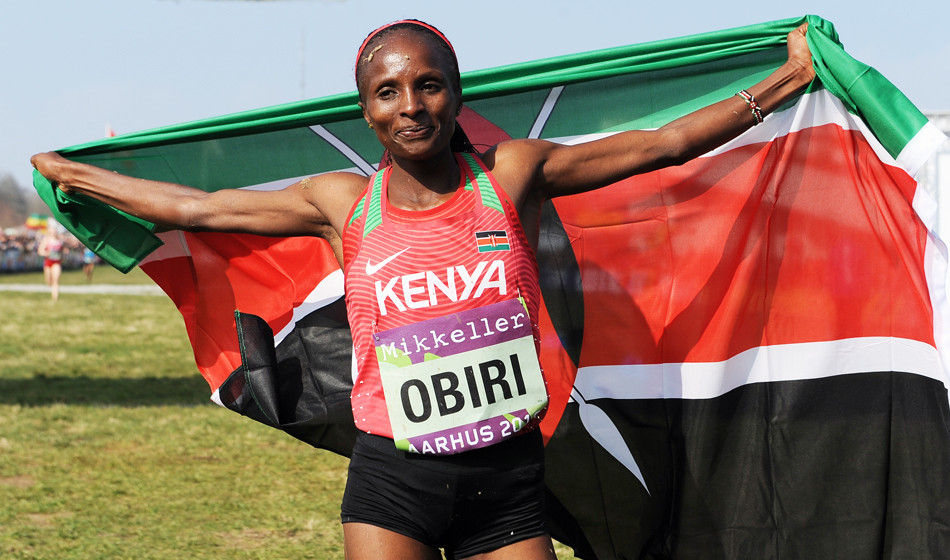
World steeplechase champion Beatrice Chepkoech, world 5000m silver medalist Margaret Chelimo Kipkemboi, world 10,000m bronze medallist Agnes Tirop and world 1500m bronze medalist Gudaf Tsegay are just some of the other standout names set to take part.
But Obiri, who won over 5000m at last month’s Wanda Diamond League meeting in Monaco, feels confident.
“I've trained well, and when I train well I have no doubts in a race,” said the world cross-country champion. “Whenever I line up for a race, I'm focused on doing my best. I don't feel the pressure. Maybe I'll do something special.
“I've always enjoyed racing in Doha,” she added. “In 2014 I set my PB over 3000m (8:20.68), and last year I won the World Championships here. I like racing here because it's favorable to me.”
(09/24/2020) ⚡AMPby World Athletics
Tokyo 2020 organizers are planning to test all foreign athletes for COVID-19 when they arrive in Japan for the Olympic Games
Tokyo 2020 organizers are planning to test all foreign athletes for COVID-19 when they arrive in Japan for the delayed Olympic Games, it was announced in draft measures on Wednesday.
Non-Japanese athletes should have tests within 72 hours before departure for Japan in their own country or region and will be tested again upon their arrival in Japan, according to the measures released after a joint meeting by Tokyo 2020, the Japanese government and the Tokyo metropolitan government.
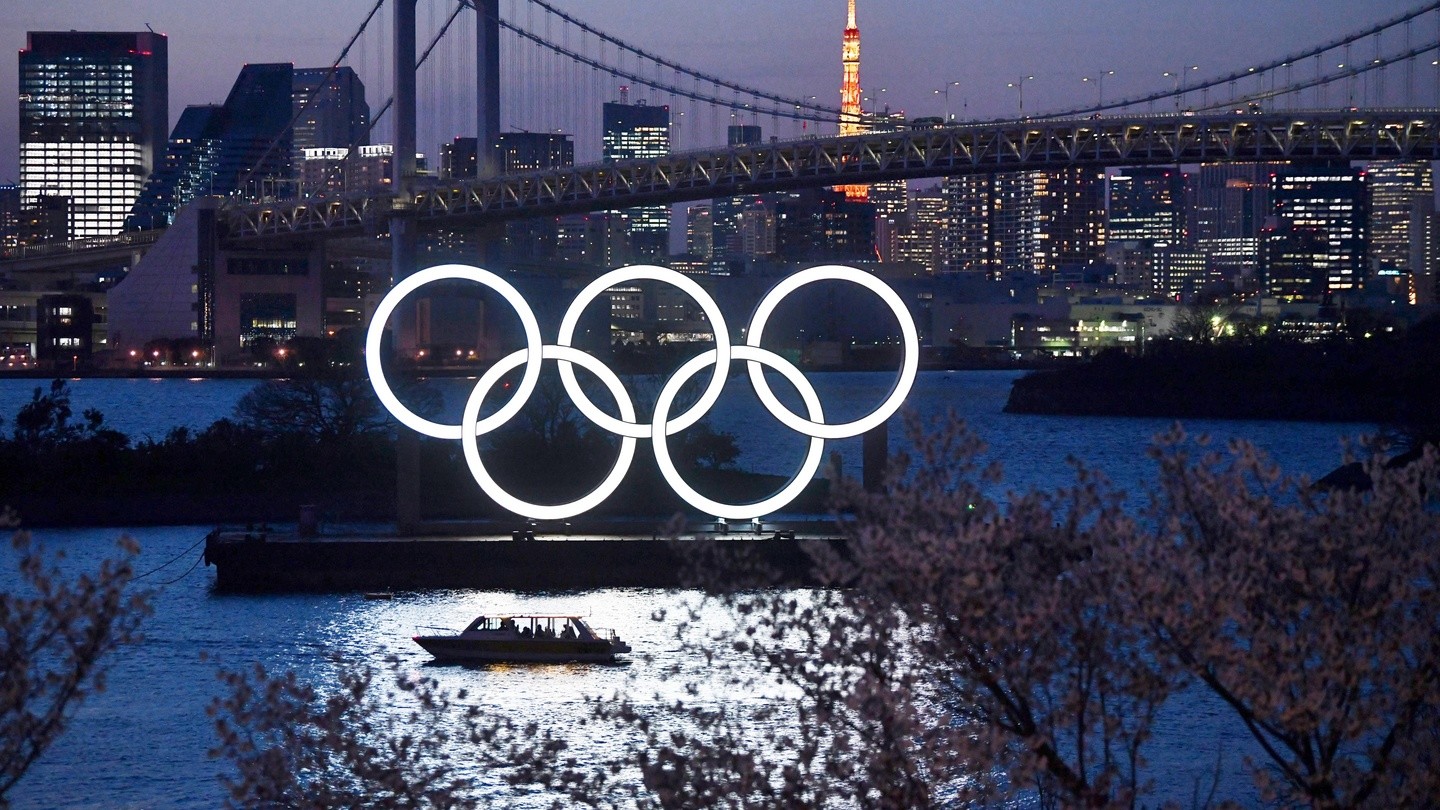
From early July 2021, all athletes, including Japanese participants living in Japan, will be tested before entering the pre-Games training camp, the Olympic Village and competition venues.
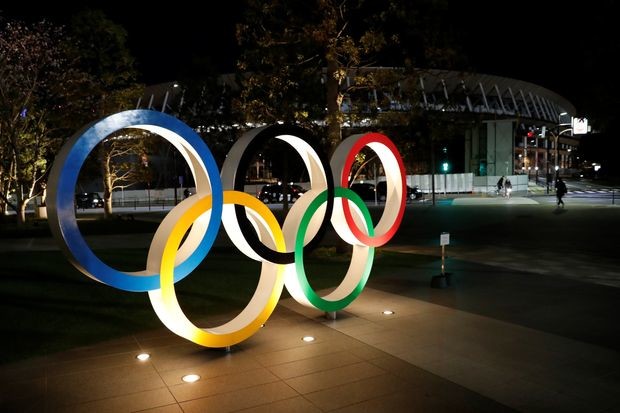
Those expected to have physical contact with athletes will also have tests during the athletes' stay, the draft measures said.
The planned measures revealed that athletes will be advised not to take public transportation and to avoid contact with local citizens.
Toshiro Muto, the CEO of the Tokyo 2020, admitted that it will be difficult to ban athletes from shopping or sightseeing in Japan.
"By contacting the public, the athletes might spread COVID-19," he said. "That is the possibility. We must protect the citizens. So there are two aspects... It should be difficult. It is not realistic for us to consider not using public transportation by athletes."
Muto said that they have not reached any conclusion on any of the countermeasures and will "continue the discussion."
(09/23/2020) ⚡AMPTokyo 2020 Olympic Games
Fifty-six years after having organized the Olympic Games, the Japanese capital will be hosting a Summer edition for the second time, originally scheduled from July 24 to August 9, 2020, the games were postponed due to coronavirus outbreak, the postponed Tokyo Olympics will be held from July 23 to August 8 in 2021, according to the International Olympic Committee decision. ...
more...2021 Beppu-Oita Mainichi Marathon has been cancelled
With no end to the coronavirus crisis in sight, the organizing committee of the Beppu-Oita Manichi Marathon has made the decision to postpone the race's 70th running from its planned date of Feb. 7, 2021 to Feb. 6, 2022 in an effort to prevent the spread of coronavirus among athletes and others involved in the event.
We look forward to holding a spectacular 70th edition that will bring together both elites and mass-participation runners to compete and celebrate together in the cities of Beppu and Oita.
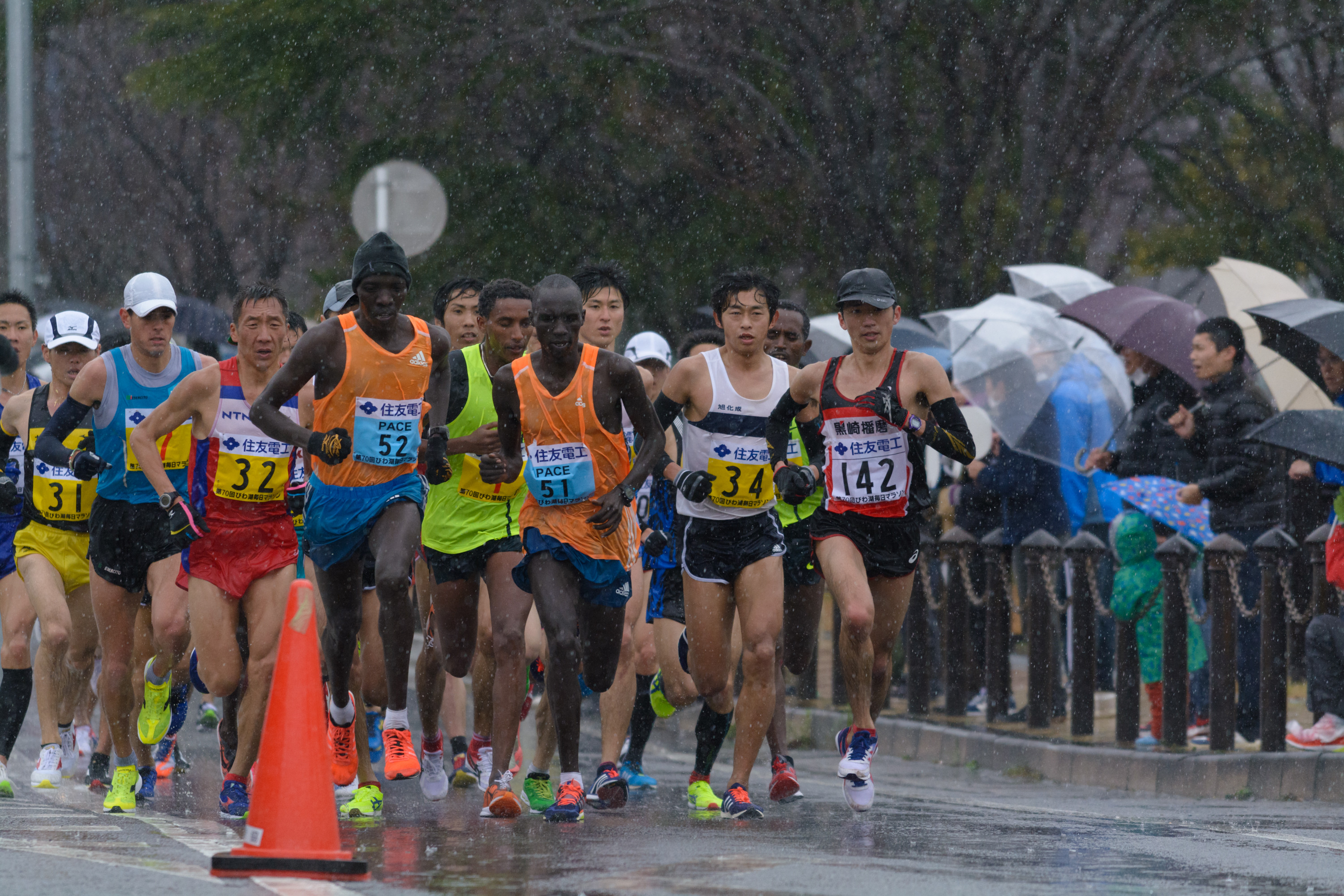
Thank you for your support and understanding.In lieu of the 2021 race we will be organizing a virtual marathon. Between Feb. 1 and Feb. 14, 2021, runners can complete a run of 42.195 km. Within the competition window, no matter where or when they run, as long as they complete 42.195 km they will be considered to have finished the race. It can be run it all at once, in two parts on the weekend, or even over the course of a week after work.Even those who don't meet Beppu-Oita's usual qualification criteria of a sub-3:30 time on a JAAF-certified course will be able to take part, enabling people in all parts of the country to get the Beppu-Oita experience.
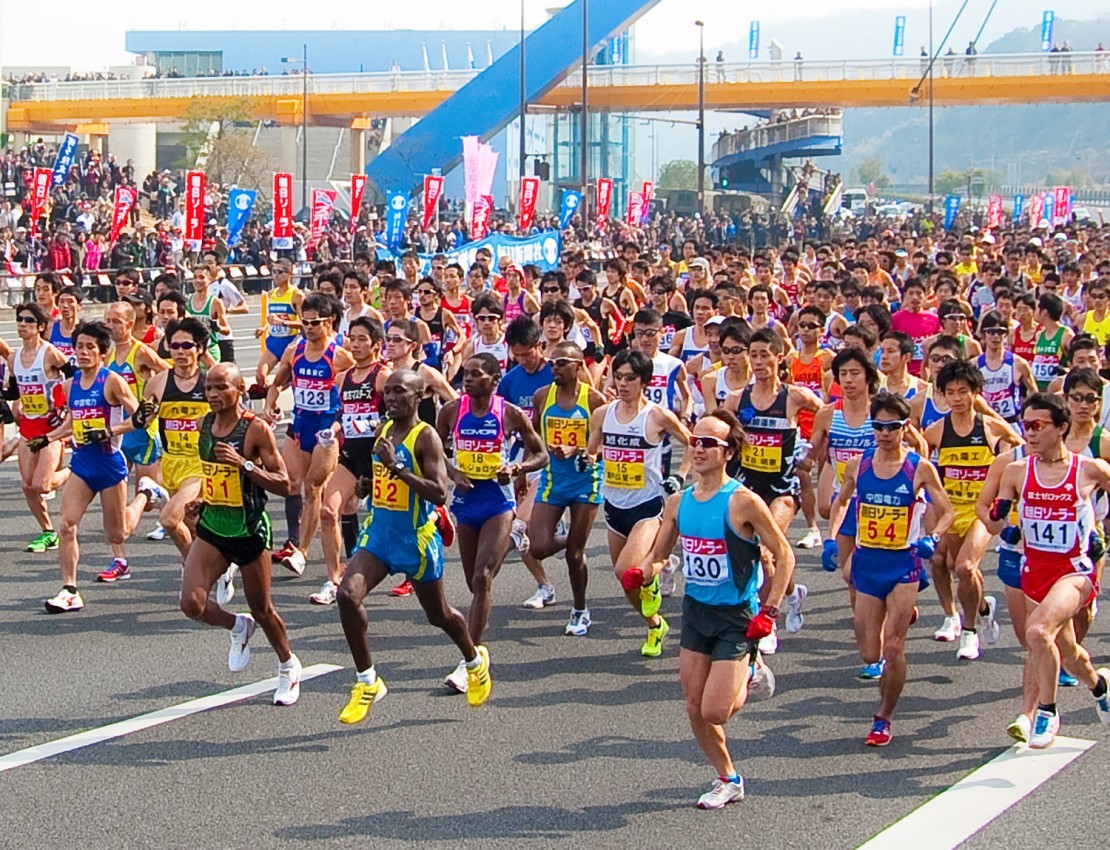
All participants will receive a bib number and race t-shirt, and finishers will receive a finisher's certificate PDF and link to a commemorative video that shows what the time they ran would look like on the actual Beppu-Oita course.Entry fees will be roughly 3,000 yen, with a field cap of 5,000 entrants.
Among entrants who have run under 3:30 on a JAAF-certified course within the last three years, 50 people will be randomly selected to receive priority entry to the 70th running in 2022. More detailed information on the virtual race will be available in October.
(09/23/2020) ⚡AMPby Brett Larner
Beppu-Oita Mainichi Marathon
The Beppu-Oita Marathon is an annual men's marathon race that takes place every February between the cities of Beppu and Oita on the island of Kyushu in Japan. First held in 1952 as a 35km race, the looped marathon course begins at the bottom of Takasaki Mountain and reaches Beppu's Kankoko International Port before turning back towards the finishing point...
more...Kenyan Nancy Jelagat will be one of the pacemakers in the London Marathon
Family Bank Half Marathon champion Nancy Jelagat, a pacemaker in the London Marathon, is looking forward to a great race and much-needed experience as she prepares to venture into full marathon running in the future.
Jelagat is tasked with pacemaking for the third set of athletes whose target time is 2hours:29minutes:00.
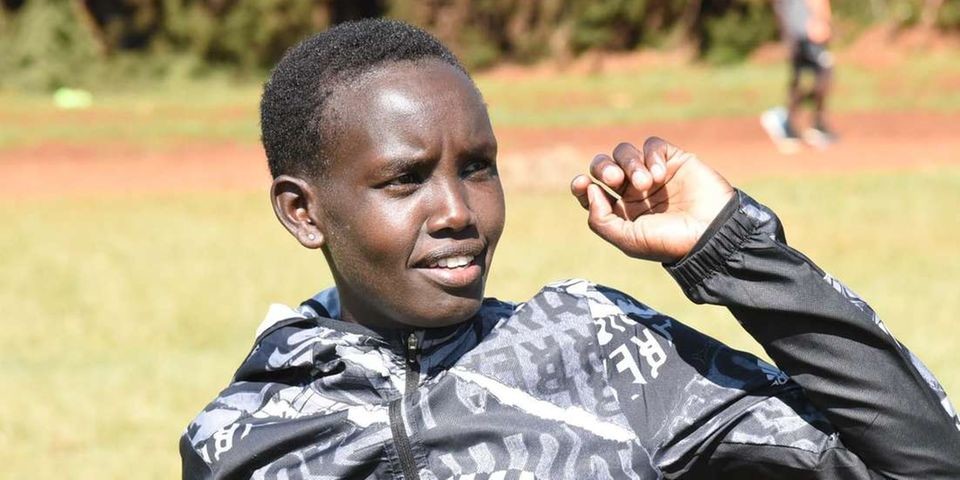
The athlete is optimistic of delivering results in her assignment, which she says is a new dawn in her career.
Jelagat, who has never been a “rabbit” before, wants to do a good job so that she can move up the ladder and set the pace for the leading set of athletes in a major marathon race.
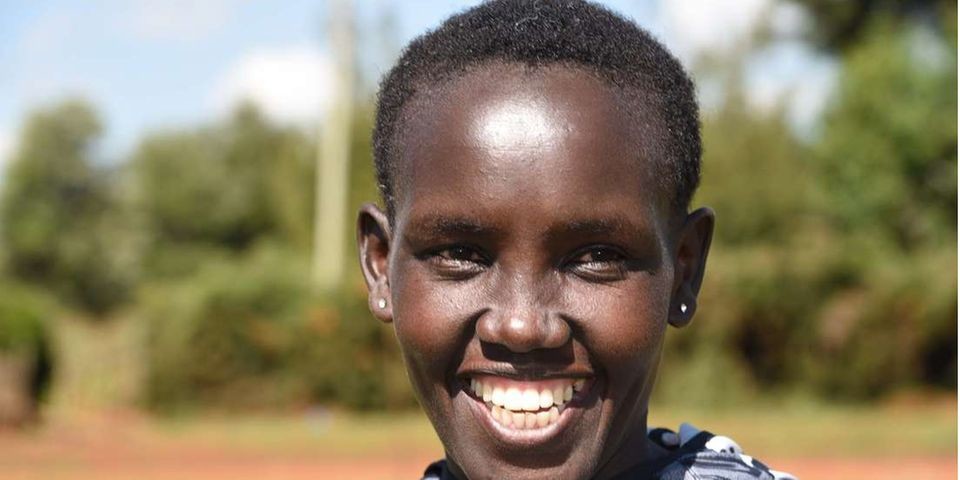
With the London Marathon less than two weeks away, Jelagat has stepped up training in the face of challenges posed by the coronavirus pandemic.
The runner, who has been training in Iten, Elgeyo Marakwet County, said she is grateful for the opportunity to feature in a major competition after several months on uncertainty owing to the virus.
The upcoming athlete is raring to go. She said: “I’m covering every area in training. This is my first time as a pacemaker, therefore, I need to be fit. The main participants in the race depend on the pacemaker. As a first timer, I am also going to learn,” Jelagat said.
She hopes to participate in many more races as she lays ground to plunge into marathon races.
“It’s an honor to be named as one of the athletes who will be participating in London Marathon. Initially, I had other plans for the two seasons, but they were ruined by coronavirus. But life is more important than competitions,” Jelagat said.
“I will use the race to weigh my performance. I don’t want to be just any other marathon runner. I want to be among the world beaters.”
After victory in the Family Bank Half Marathon last year, Jelagat competed in the Boulogne-Billancourt Half Marathon in France and won the race in 1:08:24. Ethiopia’s Beyene Medhin was second after timing 1:08:38 and another Kenyan, Deborah Samum, was third in 1:09:55.
Jelagat also won the Standard Chartered 10km road race after clocking 32:03 ahead of Delvine Meringor who timed 32:06 as Beatrice Chepkemoi sealed the podium places in 32:49.
Last year, Jelagat enjoyed good results and she looks forward to even better performance. She said: “Indeed, it has been a long journey. When the virus struck, I continued training even after I sustained a hamstring injury. I didn’t stop training so that I can heal faster. I’m happy that I healed quickly, I’m now as fit as a fiddle,” Jelagat said.
The runner said she chose to train in Iten because of the condusive environment. She said: “Despite lack of training facilities, I chose Iten. It is also a favorite for other athletes. The conditions are good to prepare for any race.”
(09/23/2020) ⚡AMPby Bernard Rotich
TCS London Marathon
The London Marathon was first run on March 29, 1981 and has been held in the spring of every year since 2010. It is sponsored by Virgin Money and was founded by the former Olympic champion and journalist Chris Brasher and Welsh athlete John Disley. It is organized by Hugh Brasher (son of Chris) as Race Director and Nick Bitel...
more...Athletics Canada has unveiled its team of four men and one woman for the World Athletics Half Marathon Championships Gdynia 2020
Pan American 10,000m bronze medalist Rachel Cliff, former national record-holder in the marathon (2:26:56), heads to Gdynia with a half marathon PB of 1:10:06, set last December in Japan. She came within a few seconds of that mark in Houston earlier this year with 1:10:13.
“After a spring and summer of race cancellations, I wasn’t sure when I would have this opportunity again,” Cliff said. “Since March, we’ve all had to make massive adaptations to our lives, and I think the World Half Marathon Championships will be a chance to get an understanding of what racing in this ‘new normal’ will look like. Competing on the world stage has never been something I’ve taken for granted, but I will appreciate it all the more this time round.”
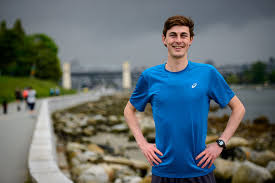
Trevor Hofbauer, who has earned early nomination for Canada’s Olympic team in the marathon, has an official half marathon PB of 1:04:30, but recently ran a 1:03:02 time trial. Ben Presiner has the fastest official PB of the field with 1:02:57, set earlier this year. Justin Kent and Thomas Toth are Canada’s other team members.
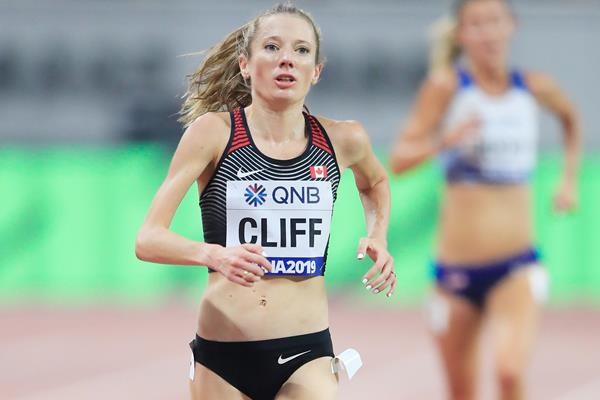
“This is obviously not your typical World Championships race,” said Athletics Canada head coach Glenroy Gilbert. “Everyone has had to adapt in a season without a lot of competitions. Our runners have put in a lot of miles to get to this race and it will be a good test of their physical and mental preparations. I’m looking forward to seeing how they manage the race and I expect to see some good results.”
Canadian team for Gdynia
Men: Trevor Hofbauer, Justin Kent, Benjamin Preisner, Thomas Toth
Women: Rachel Cliff
(09/23/2020) ⚡AMPby World Athletics
World Half Marathon Championships
The Chinese city of Yangzhou will host the 2022 World Athletics Half Marathon Championships. China, one of the fastest-growing markets in road running, had 24 World Athletics Label road races in 2019, more than any other country. It hosted the World Half Marathon Championships in 2010 in Nanning and will stage the World Athletics Indoor Championships in Nanjing in 2021. ...
more...World champions Timothy Cheruiyot and Conseslus Kipruto are planning to raise the bar in the 800m and 1,500m respectively at the Doha Diamond League meeting on Friday
The world and Olympic 3,000m steeplechase champion Kipruto, who missed the opening leg of Diamond League series in Monaco in August after testing positive for COVID-19, will return to action after shaking off the virus.
However, the 25-year-old Kipruto will be competing in an unfamiliar event in Doha, when he takes on compatriot Brimin Kipruto, Vincent Kibet and Bethwell Birgen in the men's 1,500m event.
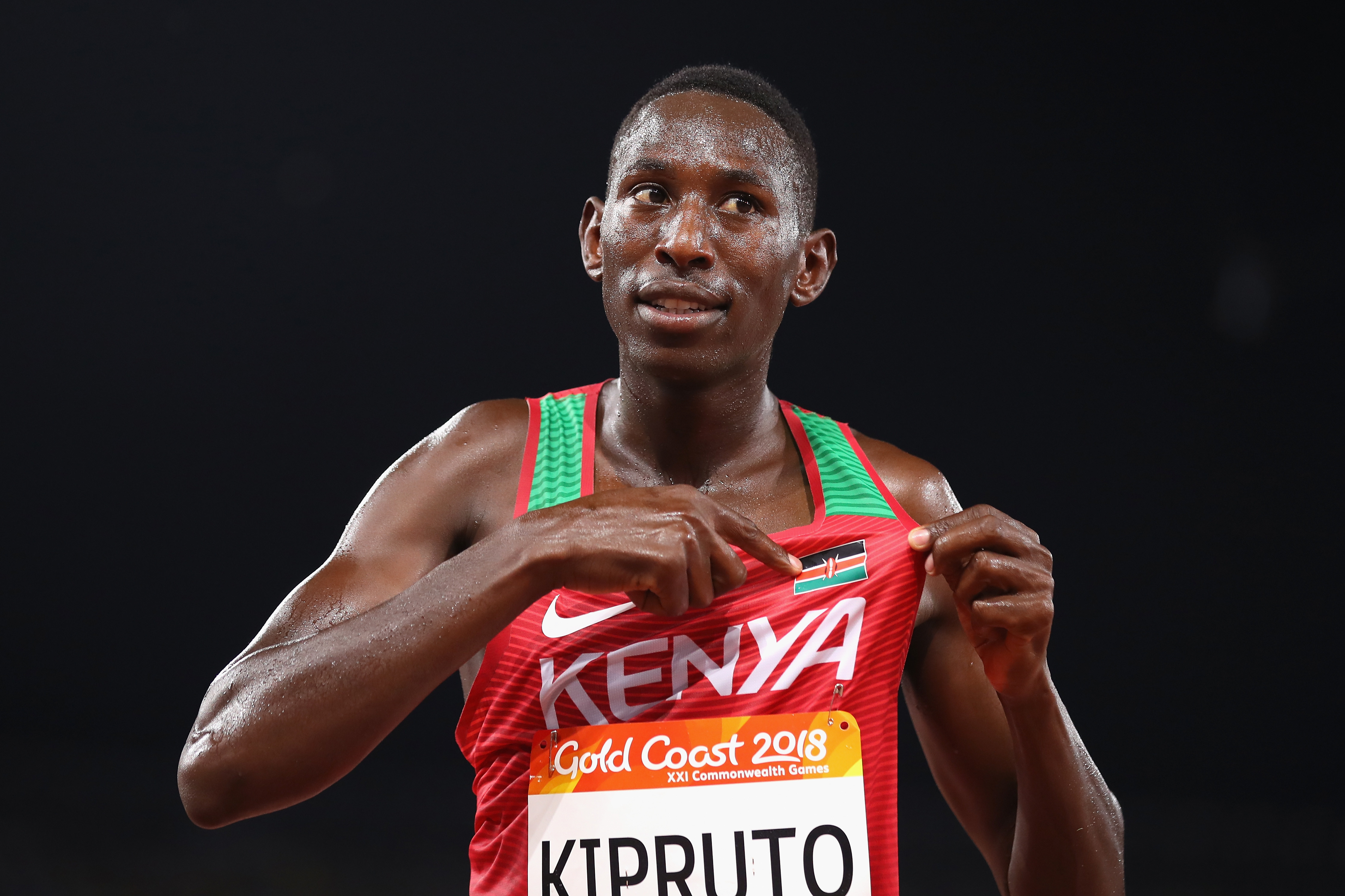
"I am glad to have been declared fit to compete after missing the opening leg of the series. I am also excited to compete in the 1,500m, I am really looking forward to running the shorter distance on Friday," Kipruto, who boasts a personal best of 3:39.57 in the 1,500m told Xinhua on Tuesday.
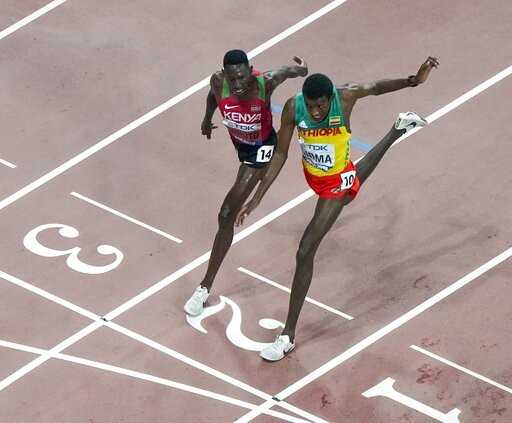
Cheruiyot, the world 1,500m champion, will race over 800m. The 24-year-old has a personal best of 1:43.11 in the event from August 2019 during the Kenyan national championships in Nairobi.
He clocked an impressive 3:28.45 to win the 1,500m in Monaco, just four one-hundredths of a second outside his lifetime best.
Cheruiyot will contest the event with fellow Kenyans including the world 800m bronze medalist Ferguson Rotich and Commonwealth Games 800m champion Wycliffe Kinyamal.
Both Kinyamal and Rotich boast personal bests of 1:43.12 and 1:42.54 respectively in the 800m.
"It's good to try other events, but I haven't run an 800m event outside Kenya and I will be happy to register good times and compete against the events specialist," Cheruiyot told Xinhua.
There will be an exciting lineup in the women's 3,000m. The event will consist of Kenyan quartet Hellen Obiri and Beatrice Chepkoech, 2019 world champions over 5,000m and 3,000m steeplechase respectively, in addition to Olympic 3,000m steeplechase silver medalist Hyvin Kiyeng, and world 5,000m runner-up Margaret Chelimo.
The world 10,000m bronze medalist Agnes Tirop of Kenya will also spice up the 3,000m event.
After running 2:29.15 for the 1,000m in Monaco, narrowly missing the world record in the process, Kenyan Faith Kipyegon, the Olympic 1,500m champion will return to her specialty, the 1,500m.
(09/22/2020) ⚡AMPby Xinhua News
Running Shoes for Plantar Fasciitis
Running and foot pain don’t mix well. And plantar fasciitis might be one of the more dreaded ailments to plague runners.
The pain from plantar fasciitis can defeat the purpose of running and make it an awful experience. Heel pain is one of the more common foot pains, and plantar fasciitis is the most common cause of heel pain.
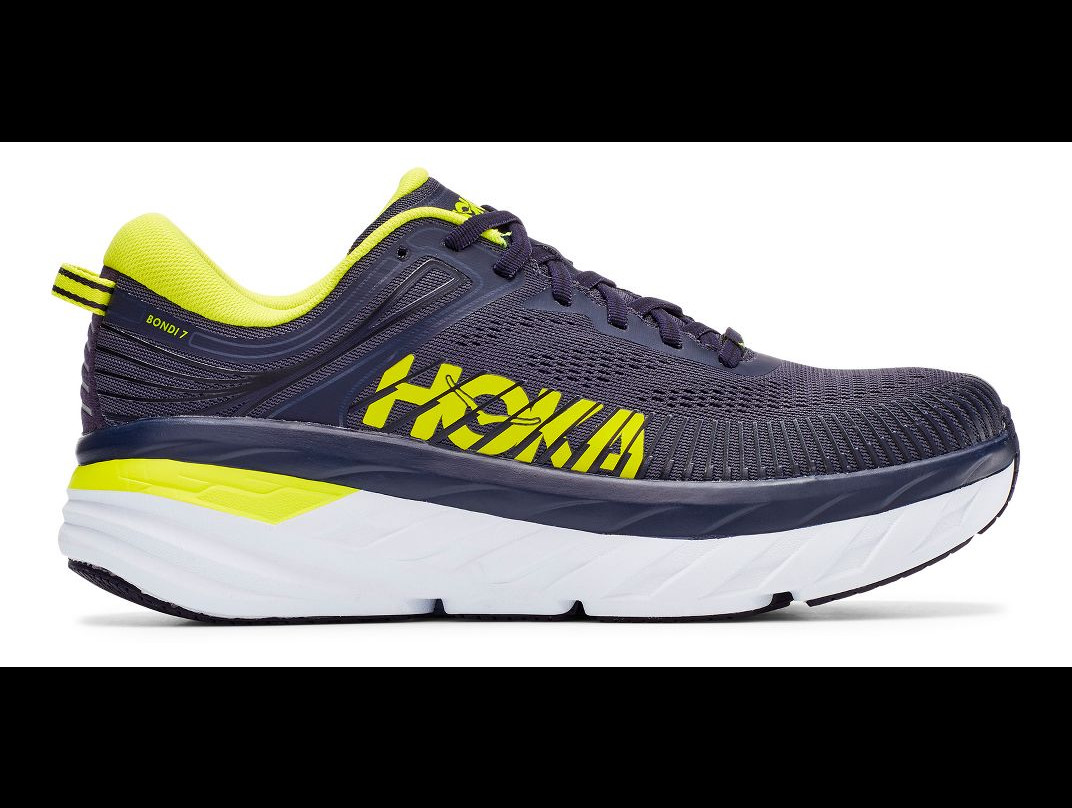
Typically, people with plantar fasciitis should wear shoes with support, cushion, and stability. This is especially important for running shoes. If you’re struggling with plantar fasciitis, getting the right running shoes can help you get on track to start enjoying running again.
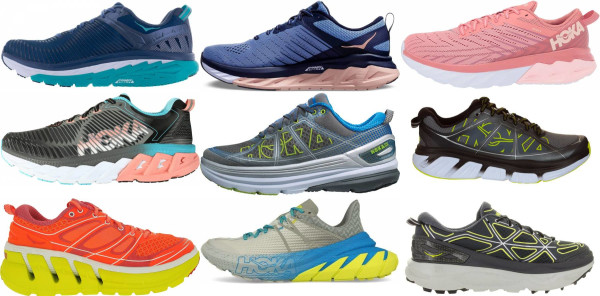
What Is Plantar Fasciitis?
In the simplest terms, according to the Mayo Clinic, plantar fasciitis is basically a torn or inflamed plantar fascia. The plantar fascia is the tissue band that goes across the bottom of your foot connecting your heel bones to your toes. The tearing or inflammation is usually caused by repeated stress and tension on the fascia.
There’s not one clear-cut reason for why the fascia tears. It can happen from daily wear and tear over several years. Or you might have a genetic predisposition.
But there are some risk factors involved, and, unfortunately, running is one of those risk factors. Some others are age, foot mechanics, obesity, or repeatedly standing on your feet for long periods of time. Basically, plantar fasciitis can be caused by anything that adds undue stress to your feet.
Letting your plantar fasciitis go unchecked can result in chronic heel pain that will eventually affect every aspect of your life. There is no clear cure for plantar fasciitis, but there are different treatments you can try. Some of them include physical therapy, stretches, steroid injections, and shoe inserts. These all help you manage the pain.
As always, it’s best to consult with a doctor or physical therapist to establish the best treatment plan for you.
Running Shoes for Plantar Fasciitis
One way you can help manage your plantar fasciitis pain is through the shoes you wear. This is especially important for running shoes. A great place to start is with a trip to your local specialty running store.
Many specialty run shops have sales associates trained to help you to find the right type of running shoes for you. My go-to is Runner’s Corner in Orem, Utah. They have been in operation since the early ’90s and have helped tons of runners — including me — find the right running shoe.
I called and spoke with a sales associate at Runner’s Corner to ask him what shoes he would recommend for runners with plantar fasciitis. Following his recommendations up with some additional research, I landed on these five shoes as the best starting point for runners with plantar fasciitis.
It’s worth noting that there’s no perfect shoe that will help every single runner with plantar fasciitis. While these shoes have helped many runners with plantar fasciitis, they may not work for everyone. When picking out your next pair of running shoes, remember to make sure they work for you.
(09/22/2020) ⚡AMPby Colorado Runner
The world’s fastest half marathon is making a return to the UAE
Slip on your runners and prepare to train, as the world’s fastest half marathon is making a return to the UAE.
The 15th editions of the Ras Al Khaimah Half Marathon is gearing up to host world-renowned athletes, amateurs and UAE residents, with registration opening this October.
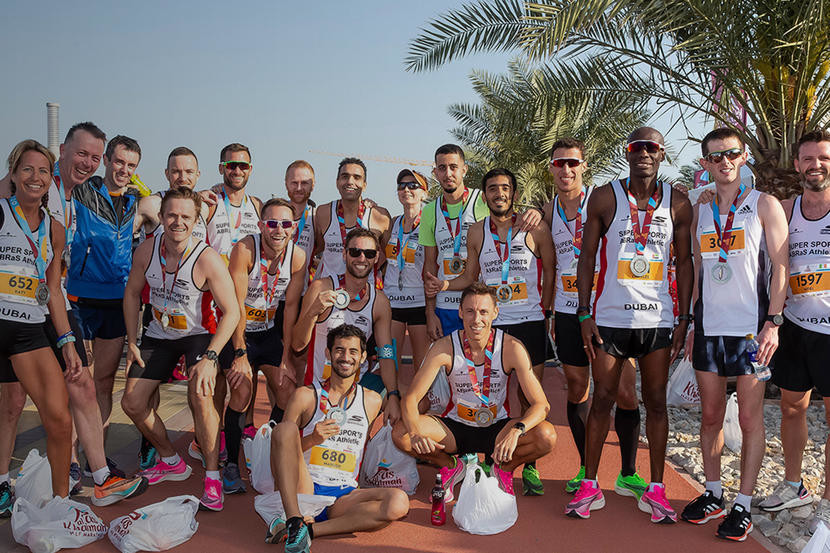
Taking place on Friday February 19, 2021, it’s officially known as the world’s fastest half marathon thanks to its record-breaking times by top athletes.
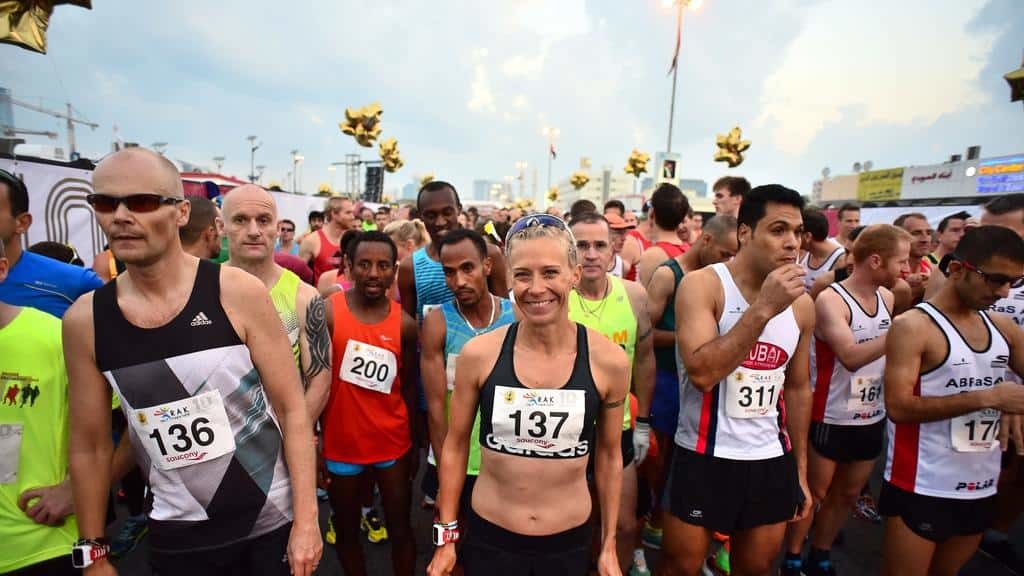
The event saw Ababel Yeshaneh from Ethiopia breaking the world record, covering a distance of 21.0975km with a time of 64 minutes and 31 seconds, an achievement now ratified by World Athletics.
The race will take place on Al Marjan Island in Ras Al Khaimah, known for its flat surface and views of its white beaches. Not a bad way to take on a half marathon.
“Aligned with the strong upturn in the Emirate’s tourism and hospitality performance, we are delighted to announce that the Ras Al Khaimah Half Marathon will be returning to the Emirate,” said CEO of Ras Al Khaimah Tourism Development Authority Raki Phillips.
CEO of RCS Sports and Events Enrico Fili’ added: We witnessed fantastic results in the 2020 race, with Ababel Yeshaneh from Ethiopia smashing the women’s World Record by 20 seconds.
This result has recently been ratified by World Athletics and we look forward to having another unforgettable elite line-up in 2021 that will ensure the event remains the fastest half marathon in the world.”
(09/22/2020) ⚡AMPby Darragh Murphy
Rak Half Marathon
The Ras Al Khaimah Half Marathon is the 'world's fastest half marathon' because if you take the top 10 fastest times recorded in RAK for men (and the same for women) and find the average (for each) and then do the same with the top ten fastest recorded times across all races (you can reference the IAAF for this), the...
more...Belgian distance runner Koen Naert sets sights on Gdynia for return to competitive action
Luckily, Koen Naert has the habit of writing things down.
As he sat – socially distanced, naturally – outside the meeting hotel for the Brussels Wanda Diamond League meeting in September, he smiled ruefully as he reflected on just how valuable this quirk is to him.
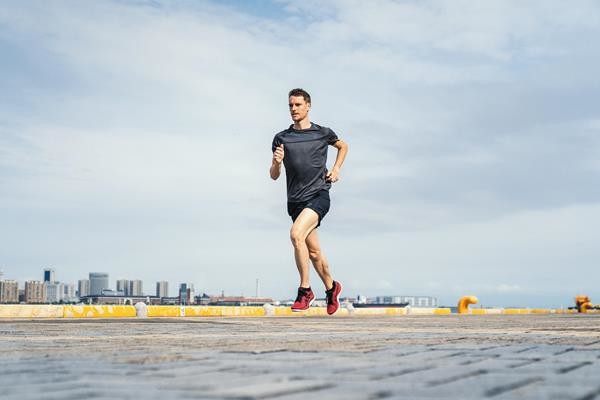
Fingers crossed, and further Covid-19 complications permitting, Belgium’s 31-year-old European marathon champion will have the opportunity to take part in his first race in almost a year when he participates at the World Athletics Half Marathon Championships Gdynia 2020 on 17 October.
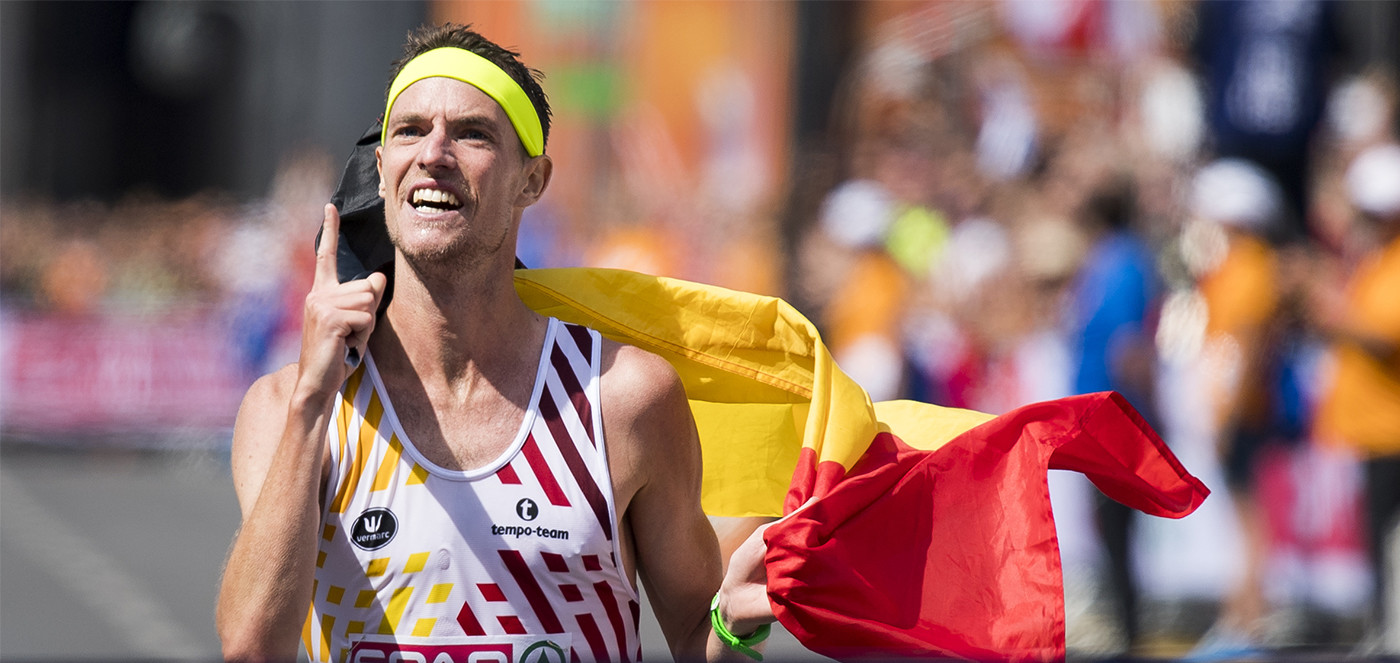
“Luckily I am always writing everything down so if something goes good I write it down, for you will never know if you forget, so I am glad I wrote everything down,” he said. “So I have to read everything again because after 11 months it’s started fading away! So I am happy I can find it…
“These championships will be very important. I think it will be difficult for me to be in 100% optimal condition, because I need some other races to race a fast half marathon, so I need some 10km races to really hit the wall, and then I really can dig deep in a half marathon.
“And so I miss those other competitions, I think physically, but also mentally because, in the beginning you say ‘Oh, we will train base, because there are no competitions. A good base level is enough’.
“But if you have base level for four months, maybe you want to start to dig a little deeper, so I think the World Half Marathon Championships are perfect mid-goal for that.
“It will be good mentally for me, too, because I think that when I race in Gdynia it will be 11 months without competition, so when I was thinking about racing I really got excited and I really had to think deep like, ‘Oh, how did I do it again?’”
Naert, whose unexpected victory at the 2018 European Championships in Berlin was followed by a personal best of 2:07:39 at the following year’s Rotterdam Marathon, admits that preparations for the championships, which were shifted from their original date of 29 March because of the impact of the coronavirus pandemic, have been “very difficult”.
Originally, he explained, he had targeted the Valencia Half Marathon, set on a course conducive to fast times. But when that was cancelled he went back to the Belgian Athletics Federation – which helps fund his support team along with his kit sponsor, Asics – and asked them: “Is it too late to run in Gdynia?”
It wasn’t. So Naert now has a focus, albeit one for which he has prepared in a way he would never have envisaged a year ago. Earlier in 2020, Naert had spoken of running 200 kilometres a week, but that target was soon modified.
“Not in Covid-19 times,” he said. “I think I was actually doing 140, 150km a week, because I knew there weren’t any competitions in the near future. If you are in April or May, I can’t remember when the European Championships got cancelled, but if you know they will be cancelled for August, and you are three months away from that, you don’t have to peak in that period.
“So I decided with my coach, Raymond Van Paemel, that I would work on other points and take another shot next year for the Olympics. I didn’t take a rest or anything, but I took it a little bit easier so that the body had more time to recover because since 2017 all the marathons and races I did were great, but my body was glad it had a few months to reload actually.
“It wouldn’t be ideal for 2020, but I think that 2020 is already lost for us on the road. So we gambled and we are aiming for a fantastic 2021.”
(09/22/2020) ⚡AMPby World Athletics
World Half Marathon Championships
The Chinese city of Yangzhou will host the 2022 World Athletics Half Marathon Championships. China, one of the fastest-growing markets in road running, had 24 World Athletics Label road races in 2019, more than any other country. It hosted the World Half Marathon Championships in 2010 in Nanning and will stage the World Athletics Indoor Championships in Nanjing in 2021. ...
more...Kenenisa Bekele and his thoughts about Eliud Kipchoge
The coronavirus lockdown has been a bitter-sweet experience to Kenenisa Bekele, the world’s most decorated distance runner of all time.
The 38-year-old superstar from Bekoji in the Ethiopian Rift Valley has experienced the ebb and flow of an elite career, a regular customer on and off the injury list, worst of which was a calf rupture in 2010.
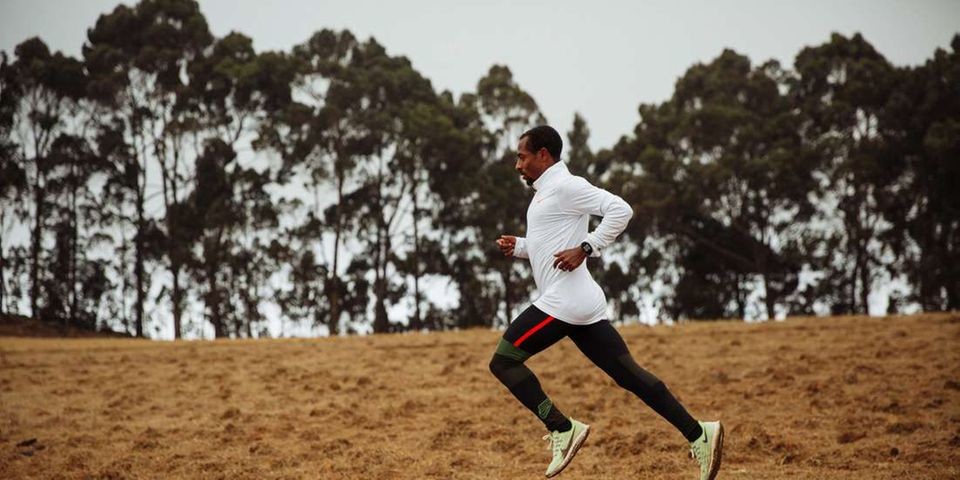
That’s why he brushes aside the fact that the pandemic subjected athletes to training in isolation.
This is a situation that he’s accustomed to, having endured various injuries in his stellar career that forced him to retreat, knock himself into shape before rejoining the fray.
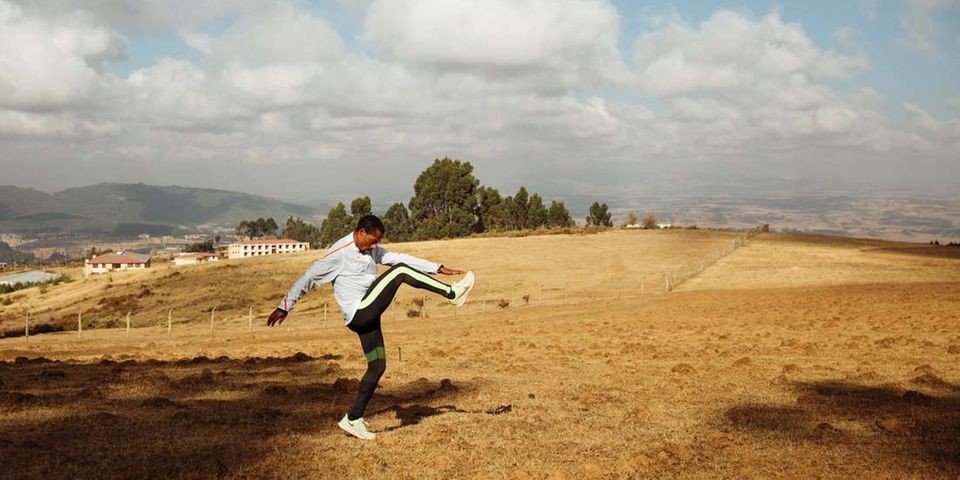
NN Running Team:
“This (training alone during the coronavirus lockdown) was not new to me. I had some bad injuries in my career and during those times I had to train alone to come back to good performance,” he told Nation Sport in an exclusive interview.
Bekele, who owns a resort and private, synthetic track in Sululta on the outskirts of Addis Ababa, along with various other real estate investments, is in the same management as his Kenyan rival Eliud Kipchoge.
Both run in the NN Running Team colours under the Global Sports Management camp, the branchild of former Dutch distance running record holder, Jos Hermens.
Managed out of Nijmegen in The Netherlands, the NN Running Team is also home of Kenya’s half marathon world record holder Geoffrey Kamworor and a galaxy of other wold beaters.
On October 4, Hermens will be in an awkward position when Bekele and Kipchoge clash at the London Marathon, at a time both are enjoying a stellar career on the roads, and are separated by just two seconds, in terms of personal best times over the 42-kilometer distance.
World record:
In 2018, Eliud Kipchoge shattered the world marathon record in winning the Berlin Marathon in Two hours, one minute and 39 seconds.
Just 12 months later, Bekele responded by completing the distance in 2:01:41, on the same Berlin streets, despite struggling with discomfort in the first half of the race.
Bekele’s brilliant second half (negative splits) convinced many that he could, perhaps, upstage Kipchoge.
Their eagerly-awaited duel was plotted for April 26, but the London Marathon was shelved as Covid-19 struck, prompting organizers to postpone the duel to October 4.
A great ambassador:
Now with the new big day just 14 days away, Bekele has nothing but respect for Kipchoge, appreciating the Kenyan’s contribution to athletics.
“I have great respect for Eliud,” he said during the interview from Addis Ababa.
“We have been competitors for a long time. He is a great ambassador for our sport and I respect him a lot.”
The October 4 London Marathon will be an elites-only race with no mass runners or spectators due to precautions over the coronavirus.
The 40th anniversary race will also see the elite races take part on a closed-loop circuit around St James’s Park, with the athletes staying in a hotel outside of London which has been chosen for its 40 acres of grounds where athletes will be able to train during race week.
Bekele says racing against Kipchoge and other top elites on October 4 gives him added motivation.
“It gives me great motivation, to run in one of the greatest marathons in the world against the greatest athletes. I give myself pressure, I want to run my best race.”
“Running world records is not easy and difficult to predict what is possible. But seeing Kipchoge’s sub-two performances, we know anything is possible,” he said.
“I had to adapt my training programme with some more alternative training, like on the bike and gym training to remain fit with my team supporting me as usual,” said Bekele who loves spending time with his family when free.
The shifting of the big race from April to October is the least of his worries.
“I was well prepared for the London Marathon in April but as an athlete you need to be ready and flexible, so I focused on October and went on with my training.
(09/21/2020) ⚡AMPby Bernard Rotich
TCS London Marathon
The London Marathon was first run on March 29, 1981 and has been held in the spring of every year since 2010. It is sponsored by Virgin Money and was founded by the former Olympic champion and journalist Chris Brasher and Welsh athlete John Disley. It is organized by Hugh Brasher (son of Chris) as Race Director and Nick Bitel...
more...Organizers Ask Public Not to Come Watch Hakone Ekiden
On Sept. 20 the Inter-University Athletics Union of Kanto (KGRR), organizers of January's Hakone Ekiden, announced that all of its remaining competitions this academic year will be held without spectators in order to help minimize the spread of coronavirus infection.
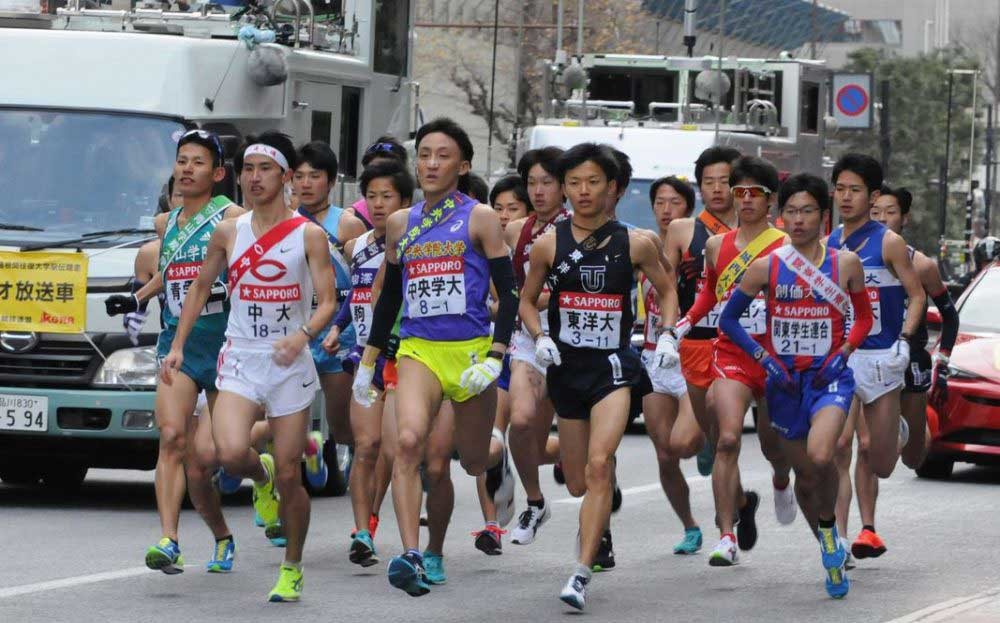
The KGRR asked for the public's cooperation in not turning out to cheer. A statement released by the KGRR said, "Our major events will be live streamed and broadcast live or recorded by NTV.
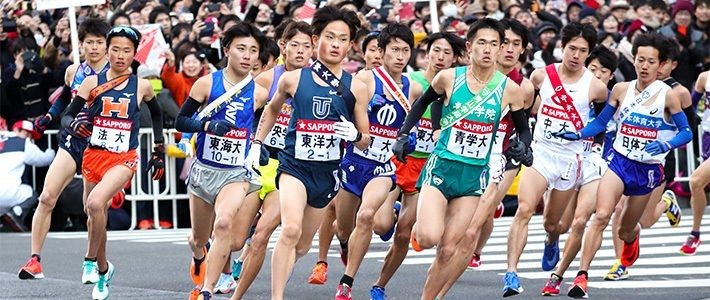
Please do not come to the race venues or the areas around them. Even if we go ahead with the ekiden, it cannot be put on without the agreement and cooperation of the local residents who live along the course.
Courseside crowd support has always been one of the things that has helped our ekiden thrive. We want to ensure that it continues to have a long future as a beloved event and ask for your understanding and cooperation this time.
"The extremely popular Hakone Ekiden is run every Jan. 2 and 3, attracting over a million spectators along its course every year.
(09/21/2020) ⚡AMPby Brett Larner
hakone ekiden
Hakone Ekiden, which is officially called Tokyo-Hakone Round-Trip College Ekiden Race, is one of the most prominent university ekiden (relay marathon) races of the year held between Tokyo and Hakone in Japan on 2 and 3 January. The race is telecast on Nippon Television. Only men take part in the competition, meaning there is greater investment in the men's ekiden...
more...Kenya’s Nicolas Kimeli won the men’s 10,000m at the Gouden Spike meeting in Leiden
Kenya’s world 5000m finalist Nicolas Kimeli won the men’s 10,000m at the Gouden Spike meeting in Leiden, clocking a world-leading PB of 26:58.97.
The 21-year-old, contesting his first 10,000m race in three years, ran alongside compatriot Solomon Kiplimo Boit during the early stages, passing through 3000m just inside 8:12. Kimeli broke away from Boit just a couple of laps later and set off in pursuit of a sub-27-minute time.
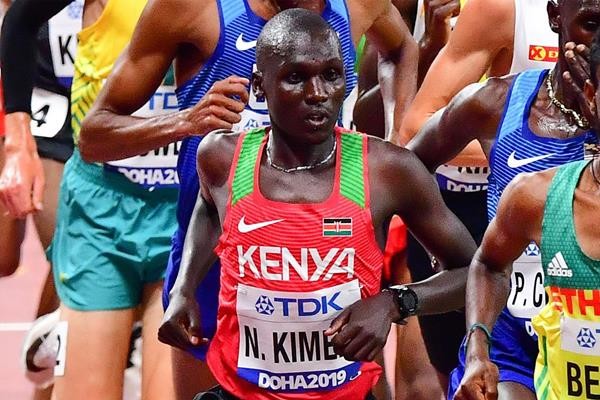
Kimeli’s lead grew with each lap, while Boit continued running in no-man’s land. Further behind, Dutch runner Mike Foppen, making his debut over 10,000m, gradually detached himself from the main chase pack.
Kimeli forged on and started to sprint on the final lap when he realised a sub-27-minute performance was a possibility. He crossed the line in 26:58.97 to smash the meeting record by almost half a minute.
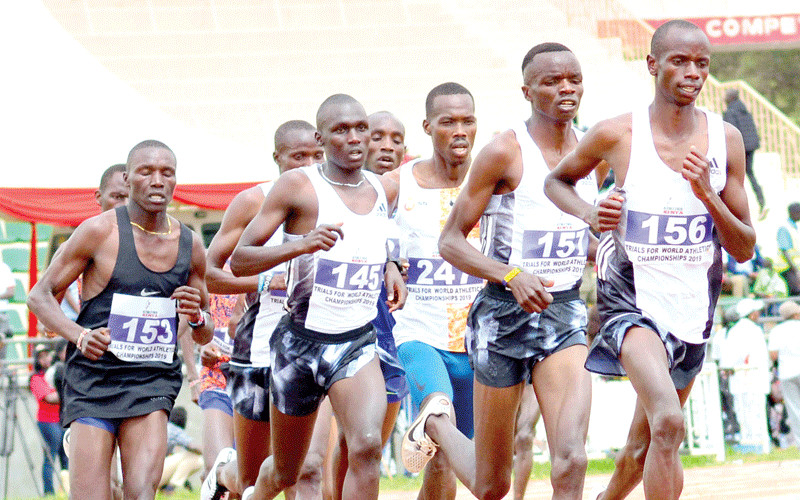
Boit finished second in 27:41.10, while Foppen placed third in 27:59.10. It was Foppen’s eighth PB of the year, having set two at 1500m, one at 2000m, two at 3000m, plus national records for 5000m and 5km.
As is tradition at this meeting, a golden spike trophy is presented to the top performer of the night. Unsurprisingly, Kimeli scooped that accolade.
Meanwhile, Menno Vloon won the pole vault with 5.76m, the second-best clearance of his career after his 5.85m national record in 2017. World champion Toshikazu Yamanishi stepped down in distance at the Japanese Inter-Corporate Championships in Kumagaya and won the 5000m race walk with an Asian record of 18:34.88.
Yamanishi had Eiki Takahashi, Tomohiro Noda and Satoshi Maruo for company in the early stages, but he gradually dropped them one by one before going on to win by almost 17 seconds. Takahashi finished second in 18:51.25.
Yamanishi’s winning time took four seconds off the previous Asian record set by Yusuke Suzuki back in 2015, just three months after he set a world record over 20km.
In a high-quality men’s 10,000m race in Netherlands, 2015 world U18 champion Richard Kimunyan emerged the winner in 27:01.42, finishing just one second ahead of Bernard Koech (27:02.39) with Bedan Karoki a close third (27:02.80). Kimunyan’s time was a world lead but lasted just eight hours at the top of the world list before it was bettered in Leiden.
(09/21/2020) ⚡AMPby World Athletics
Joshua Cheptegei and Jacob Kiplimo lead Ugandan team for World Athletics Half Marathon Championships Gdynia 2020
World 10,000m champion Joshua Cheptegei and world 3000m leader Jacob Kiplimo are among the athletes selected to represent Uganda at the World Athletics Half Marathon Championships Gdynia 2020 on 17 October.
Cheptegei, the world cross-country champion, broke the world 5000m record at the Wanda Diamond League meeting in Monaco last month with 12:35.36 and is targeting a tilt on the 10,000m mark on 7 October before heading to Poland.
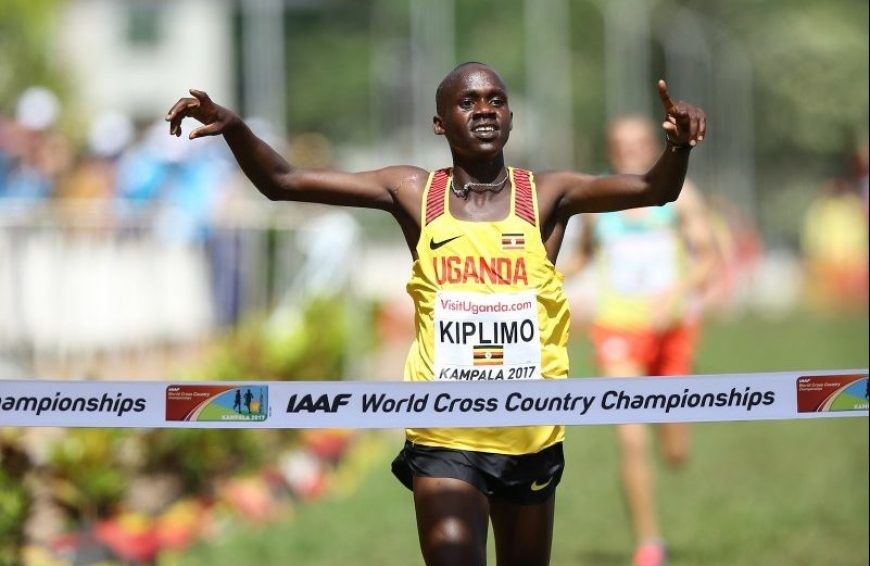
Kiplimo, meanwhile, won the 5000m at the World Athletics Continental Tour meeting in Ostrava with a PB of 12:48.63 and then went on to triumph over 3000m at the Wanda Diamond League meeting in Rome in a world-leading 7:26.64, breaking the Ugandan record and becoming the fastest teenager in history for the distance.
Given their exploits on the track in recent months, Cheptegei and Kiplimo will be among the medal favourites when they take to the startline in Gdynia – despite the fact that both men will be making their half marathon debut.
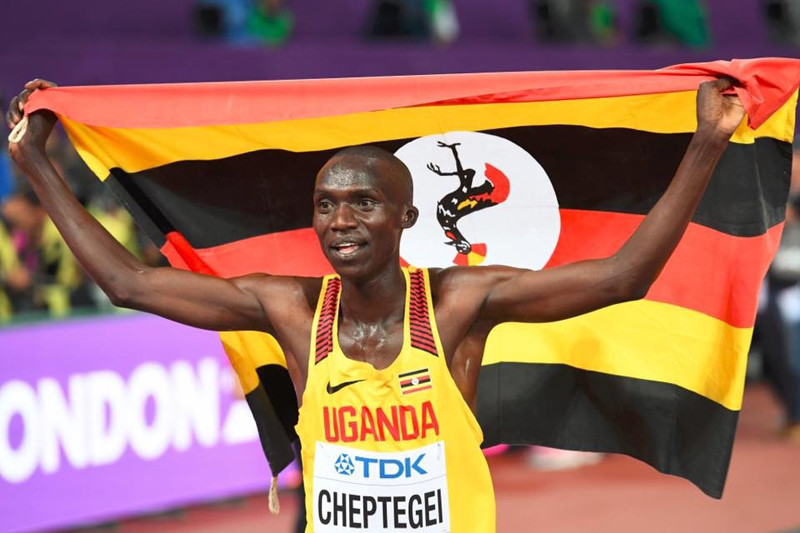
They are joined on the team by 2009 world U20 cross-country bronze medallist Moses Kibet, Stephen Kissa and Abel Chebet.
Juliet Chekwel, who holds the Ugandan records for 10,000m (31:37.99), half marathon (1:09:45) and the marathon (2:23:13), leads the women’s team.
Doreen Chemutai, Doreen Chesang, Rachael Zena Chebet make up the rest of the Ugandan women’s roster.
Ugandan team for Gdynia
Men: Abel Chebet, Joshua Cheptegei, Moses Kibet, Jacob Kiplimo, Stephen Kissa
Women: Juliet Chekwel, Doreen Chemutai, Doreen Chesang, Rachael Zena Chebet
(09/21/2020) ⚡AMPby World Athletics
World Half Marathon Championships
The Chinese city of Yangzhou will host the 2022 World Athletics Half Marathon Championships. China, one of the fastest-growing markets in road running, had 24 World Athletics Label road races in 2019, more than any other country. It hosted the World Half Marathon Championships in 2010 in Nanning and will stage the World Athletics Indoor Championships in Nanjing in 2021. ...
more...Western States site name to be changed
After researching the etymology of the racist and sexist term "squaw," officials of the California ski resort have decided to change its name
The famed Western States 100 ultramarathon starts in Squaw Valley, Calif., near a river, some roads and several ski lodges of the same name, which many have found troubling for its racist and sexist roots. The area is also known as Olympic Valley, as it was the site of the 1960 Olympics, but for years, locals and tourists have all called it by its other name. It was recently announced that this will soon change, as owners of the Squaw Valley Alpine Meadows ski resort have finally decided to drop that title.
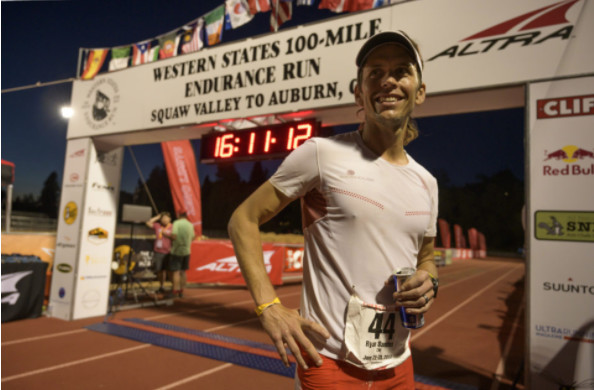
“With the momentum of recognition and accountability we are seeing around the country, we have reached the conclusion that now is the right time to acknowledge a change needs to happen,” said Ron Cohen, the president and COO of Squaw Valley Alpine Meadows. “We have to accept that as much as we cherish the memories we associate with our resort name, that love does not justify continuing to use a term that is widely accepted to be a racist and sexist slur.” Cohen went on to say the resort will find a new name to “reflect our core values, storied past and respect for all those who have enjoyed this land.”
The Western States 100 starts right at the ski resort and travels 100 miles southwest to Auburn, Calif. Race director Craig Thornley tweeted the statement from Cohen and his team, adding, “It’s really gonna happen.” Thornley’s tweet received mixed reviews from his followers, with some people saying the name should have been changed long ago, while others seem to think it’s fine the way it is. As a member of the Washoe Tribe (a Native American tribe with origins near Lake Tahoe), Helen Fillmore, told a local radio station in July, when she is around people discussing the local resort, all she hears are racial slurs.
“All of a sudden people are asking if you ski and telling you about how they’re going to go ski, racial slur. ‘Let’s go ski, racial slur,’” Fillmore said. “People don’t even think twice about how that word is impacting the person they’re talking to.” The dropping of the resort name will be welcome news to Fillmore and other members of the Washoe Tribe, although they have had to wait a long time for this change. The resort’s new name will be released in early 2021, and officials say it will begin to be implemented after the 2020/2021 ski season, meaning that by June, when the Western States 100 is set to be held, the race’s start should be at a newly-named location.
(09/20/2020) ⚡AMPby Running Magazine
According to recent statistics, around 165 million 60 kg. (122 lb.) bags of coffee are consumed worldwide annually
That's a lot of coffee – and that doesn't take into consideration all the other forms of caffeine we're taking in: soda, chocolate, energy drinks, tea, and many other niche products.
We all know the cognitive benefits of caffeine, plus its ability to fight off fatigue and tiredness. But did you know that there are extensive athletic benefits as well? Across a wide-ranging mix of sports, and for all manner of athletes: caffeine works.
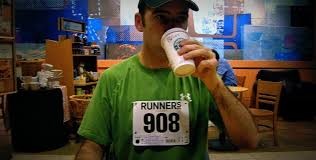
When people hear the word "caffeine," the first thing that comes to mind is its effects on stimulation, attentiveness, and tiredness. And it's true – caffeine and coffee have a wide range of health effects – many related to attention and fatigue.
Caffeine is a natural psychoactive stimulant that stimulates your central nervous system and brain by helping keep you alert and remain active. It's naturally found in leaves, nuts, and some plants' seeds – somewhere around 60 plants have been identified which produce caffeine.

According to a study conducted by a Western Michigan scientist, at least 30 plants (out of ~ 300,000 flowering plants of different species) produce caffeine. Others put the number closer to 30. The reason plants have caffeine isn't known for 100% certain – but it may be as a pollinator attractor or perhaps a defense mechanism against insects.
The caffeine in some plants can poison plant pests and herbivores. This ends up discouraging them from attacking the plant again... if they survive the caffeine intake. Since caffeine is also toxic to the plant's cell, it's stored in individual cell compartments to keep it at distance from other cells.
Plenty of studies have found that drinking caffeine regularly can help improve your mental performance, especially your concentration, alertness, and attention. This is because caffeine suppresses the effects of adenosine, the neurotransmitter associated with sleepiness.
Scientists also discovered that there's a direct relation to the dose of caffeine you consume and your mental performance. There's just more caffeine around then to interfere with adenosine uptake.
For example, higher caffeine doses – up to a point – can aid in improving your cognitive speed, improve accuracy and alertness, and decrease fatigue. Going too high has its downsides, though, which we'll discuss a bit later.
Improving Heart Health
Another positive effect of drinking caffeine is improving heart health. Research studies show that consuming coffee in reasonable doses can aid in decreasing heart failure and strokes.
Caffeine and Exercise: What Does Science Say?
Many times, caffeine is more interesting as a performance-enhancing supplement – beyond staying up late and being more productive, it can help you lift more, jump further, run faster, cut your times, and otherwise make you a better athlete.
Why Might Caffeine Help Exercise Performance?
According to the International Society of Sports Nutrition, caffeine is an effective way of enhancing different types of exercise performance when consumed in moderate amounts. A meta-analysis showed caffeine positively affects muscle strength, aerobic endurance, muscle endurance, exercise speed, and jumping performance.
The results showed that caffeine affects your exercise performance by reducing fatigue, blocking the aforementioned neurotransmitter adenosine, and increasing your alertness and precision.
More relevant for athletes, it also increases the stimulation of your central nervous system, making physical exertion feel like it involves less pain and effort. This helps you become more effective and productive with each workout. Consider lifting, for example – much of your strength comes from CNS adaptation, and caffeine enables you to get the most out of what you can already lift.
For high-intensity exercises like strength sports, swimming, and sprinting, caffeine increases the number of fibers recruited in muscle contractions. This enables you to make forceful – and frequent – movements. Other studies have found that athletes or active adults who consume caffeine before working out have improved concentration.
Studies show that caffeine consumption in coffee or as a supplement taken one hour before exercise can boost endurance. More studies found that the use of coffee could help improve performance in running and cycling.
A 2017 study that involved male runners suggested that the consumption of caffeinated coffee an hour before a 1-mile event enhanced their performance. Their performance increased by 1.9 percent and 1.3 percent compared to runners who took a placebo or decaffeinated coffee.
All these studies prove that consuming coffee before aerobic exercise helps enhance overall performance. And if you're looking to incorporate caffeine into your endurance training, most of these studies looked at a dose of roughly 200 milligrams.
(09/20/2020) ⚡AMPby Gerard Paul
Teacher runs for the love of running
You’re never too young, or too old, to get into the sport of running. Kathy Rose of Scottsbluff will turn 69 next month, but she will be among the half-marathon field for her 9th Monument Marathon, coming up Sept. 26.
Rose teaches in the Gering schools and hasn’t missed a year of the Monument Marathon. She’s even won her age division six times.
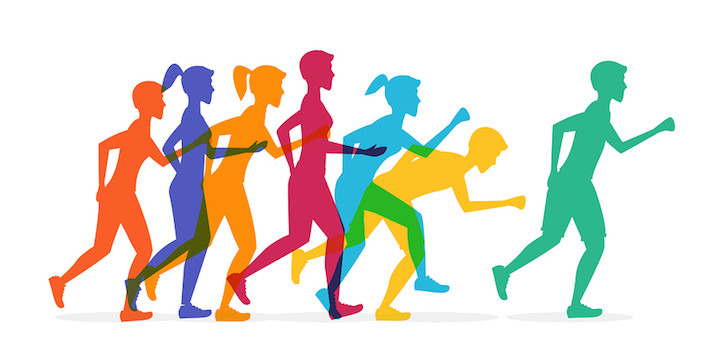
“Jen Schwartz, one of my co-teachers at the time, was my mentor and coach when I decided to try my first Monument Marathon,” she said. “It was the local marathon that later got me into running longer distances.”
While she didn’t commit to a running schedule until later life, Rose said it’s always been an unofficial part of her life.
“Even as a kid, I couldn’t walk,” she said. “Everywhere I went, I had to run. I got away from that when I started a family and got busy with them. But when the kids were in junior high and high school, I got back into running.”
When Rose got started again, she admitted she was pushing it to cover just a half mile. But she gradually built up her distances over time and last year, at the age of 67, ran her first full marathon — 26.2 miles in Colorado.
Rose grew up on a farm and still lives in the country. Being outside has always been a part of her life, so running is a great outlet to keep her out in the countryside.
“I love to exercise to stay fit, which is important now to keep up with the grandkids,” she said. “Running fits into my lifestyle because it clears my mind and relieves stress.”
She added many of her ideas for teaching come while she’s running.
“I run year round and my goal for the winter months is 50 miles a month so I’ll usually do four-mile runs, which is standard for me,” she said. “But that’s getting harder as I grow older.”
In preparation for the Monument Marathon, Rose has been putting in longer runs on Saturdays for the last two months.
In addition to half-marathon runs in the Monument Marathon and a full-marathon in Colorado, Rose has run in several events in South Dakota, including the Crazy Horse and Deadwood Mickelson Trail Marathons.
“I’m at the age where thoughts of improving my time have pretty much gone by the wayside,” Rose said. “I just keep running, even if I have to walk part of it. The fact that I’m still running is enough for me.”
She added the key to running is to have a goal. “Go with whatever you’re comfortable with but also push yourself out of your comfort zone,” she said. “Find a place to run that spurs you on and makes you feel like running.”
(09/20/2020) ⚡AMPTrail running after 50: “I’m not an ageâ€
Karen Craigie began trail running when she was 59 years old, and her adventures are just getting started
Karen Craigie, 68, had always played soccer. But she considered trail running a different beast. It wasn’t until she finished her first 15K trail race that things began to click. Once the switch went off, there was no turning back. A retired nurse, Craigie was hooked on exploring trails over bigger and bigger distances. From there, she began tackling 20K to 50K adventures in the mountains and on the trails, and beyond.

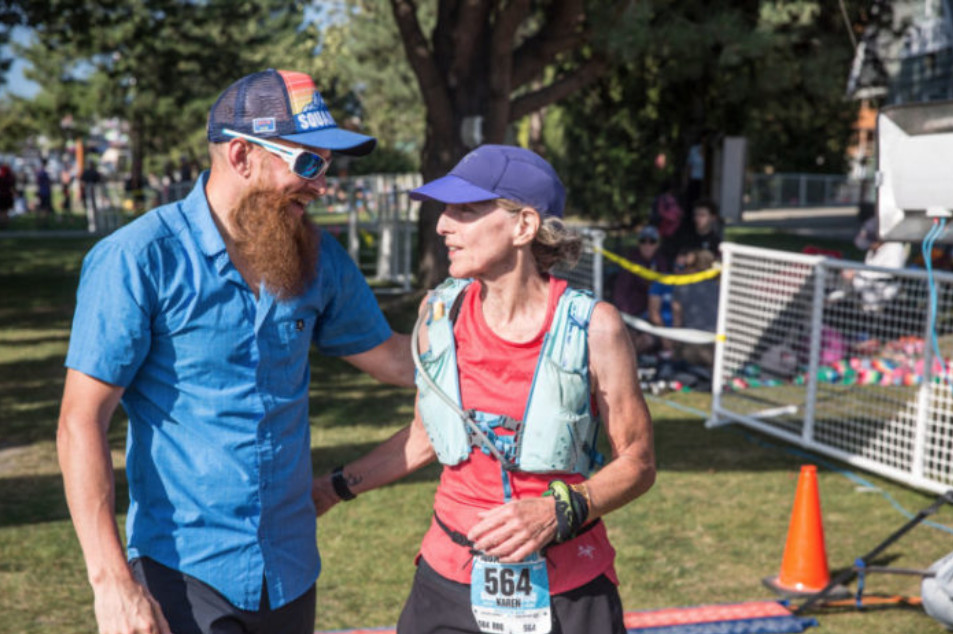
The beginning
It all began when Craigie was 59 years old. She signed up for a trail running clinic in North Vancouver, and three months later she finished her first 15K trail race, The Dirty Duo. Motivated by her partner Linda, who is 11 years younger, Craigie never knew what the trails would offer. She was amazed at what it did for her mind, body, and spirit. Despite living in North Vancouver, it wasn’t until she began participating in trail running clinics that she started exploring the trails in her backyard.
Craigie and Linda decided to sign up for the next clinic to train for a 25K trail race. Nowadays, her favourite distance is 50K. “What I love most about trail running though, are the adventure runs. There is no stress or pressure about meeting cutoff times and one can just really enjoy the scenery.”
Next steps
Craigie has always had the mental toughness to get through tough times on the trail. But as her running goals continued to grow, she hired a coach. “When I retired, my goals got loftier, so I decided I needed a coach. Gary Robbins kindly agreed without hesitation. I completely attribute my successes to having two great coaches,” she says. Robbins and Eric Carter continue to coach her to this day.
Running resume
Just as Craigie is not defined by her age, the distances she loves have no limits. Her ultrarunning and trail running resume is stacked for someone of any age. Once she toes the line, there’s no turning back. She has completed every race she’s started and has yet to come in DFL. “I usually win my age group. However, at times, I am the only one in their 60s.”
So far, Craigie has raced the notorious Knee Knacker 48K race twice, Mount Hood 50K, Sun Mountain 50K, The Golden Ultra 60K, Survival of the Fittest 35K, Squamish 50K, WAM 55K, and over seven races 23-25K in distance. In 2014 she did the Vancouver BMO Marathon, and was reminded how much she truly loves the trails.
In October 2015, Craigie ran across the Grand Canyon with friends. They found themselves under the desert stars in the middle of the night in the canyon, which was a definite highlight. In July 2018, she created her own adventure run in Ireland. Craigie and friends ran 208K over seven days. Each day ranged from 20-42K covering north, west, and southeast coasts. Next year, she plans on running somewhere in the Alps, continuing to abide by the notion she is “not an age.”
(09/20/2020) ⚡AMPby Running Magazine
In-person race set for September 26 in Peterborough, Ont.
The 2020 Ankle Breaker XC Run will see 200 participants run 2.5K and 5K races
As track season fades into cross-country season, we will hopefully see some in-person races pop up around Canada for the general public to enter. The bulk of the cross-country season is still a few weeks away, but a race that’s coming up quickly is the Ankle Breaker XC Run Peterborough, Ont. The event will take place at Peterborough’s Nicholls Oval Park on September 26, and 200 people will be permitted to race in either 2.5K or 5K options. The groups will be split into waves to comply with provincial health and safety guidelines, and there will be other COVID-19 protocols in effect on race day as well. Registration is now open for the run, and with limited spots in the field, it’s apt to fill up quickly.
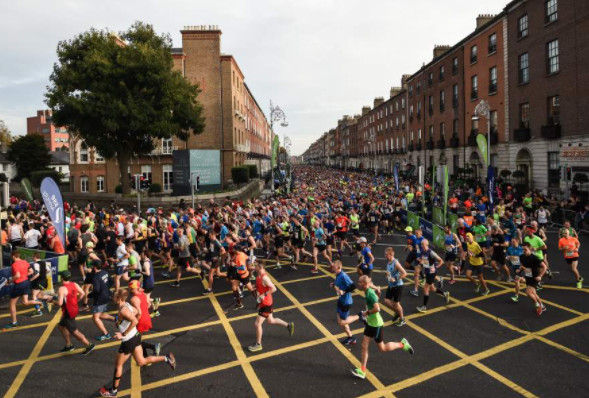
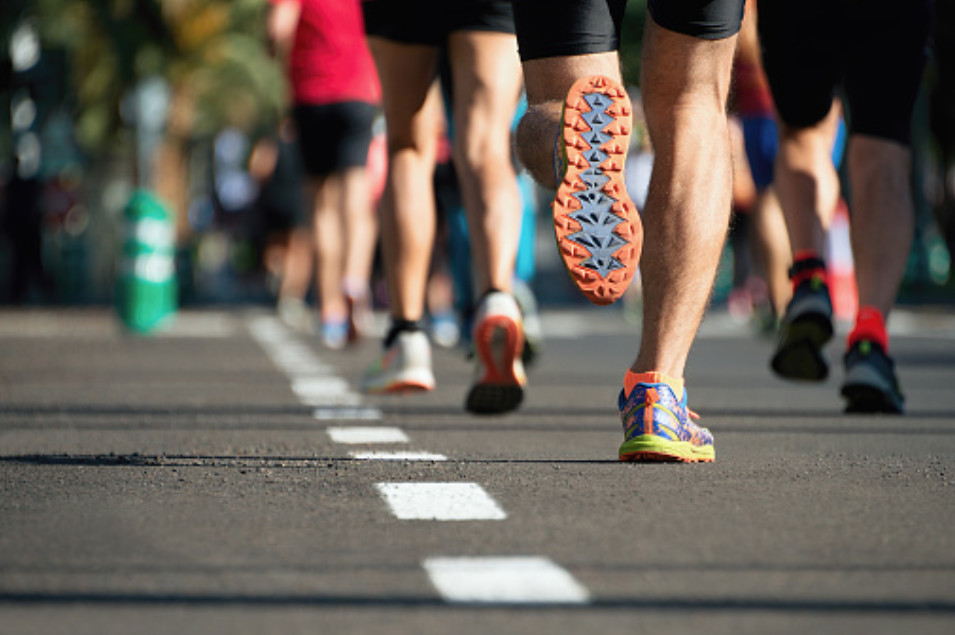
Race organizers have worked closely with Peterborough Public Health and the City of Peterborough to set the event’s COVID-19 protocols. A key element of this is of course social distancing. The provincial government has a 100-person limit on social gatherings, which is why there will be two waves of 100 people run three hours apart. The first wave actually consists of two races: a 5K for runners who can run sub-23 minutes for the distance and a 2.5K run for kids. The 5K will kick off at 9:30 a.m. and be limited to 60 people, and 40 people (including kids and any parents who want to run with their children) will be permitted to start the 2.5K.
At 12:30 p.m., well after those races are finished, the second 5K of the day will begin. This race is reserved for runners with expected 5K times of 23 minutes or more. Since this will be the only race held in the afternoon, this field is open to 100 runners. For the two 5K races, no spectators will be allowed, and only one parent or guardian is allowed onsite per child in the 2.5K.
The races will be very basic, with no aid stations in the registration area or on the course, no post-race food or refreshments and no awards. Racers will receive ankle timing chips, which will be the only interaction (conducted two metres apart) that runners can expect to have with event staff and volunteers.
A lot of thought and care was always required when organizing races, but even more is needed for any in-person events in the world of COVID-19. Running in limited fields with next to no spectators present isn’t what we’re all used to, but any in-person race is better than none, and this will likely be the way things remain for the foreseeable future.
To learn more about the Ankle Breaker XC Run, click here.
(09/20/2020) ⚡AMPby Running Magazine
The 10th Mattoni Ústà nad Labem Half Marathon succeeded the pandemic challenge
Over two thousand runners flooded the streets of Ústí nad Labem during the jubilee 10th year of the Mattoni Half 10th year of the Mattoni Half Marathon. The event showed that even in difficult times caused by the coronavirus pandemic, it is worth fighting. The race was won by the Ukrainian runner Ivan-Bohdan Horodyskyi in men’s category, and dominated by a German in women’s. Kristina Hendel. Vít Pavlišta and Marcela Joglová confirmed this year's half-marathon dominance among the Czechs.
The 10th Mattoni Ústí nad Labem Half Marathon was organized in difficult conditions. Masks were worn everywhere except on the course itself; runners had to deal with limited refreshment stations. "It was not easy at all, but thanks to the cooperation with the region, the city, hygiene offices and everyone else, we succeeded. I am proud that Ústí could see a great race and I hope that we have inspired organizers of mass participation races in our country and in the world“, says Carlo Capalbo, President of the RunCzech Organizing Committee.
Ukrainian runner Ivan-Bohdan Horodyskyi finished in first place with a time of 1:03:54, Italian Said El Otmani (1:04:00) finished second, and Emmanuel Roudolff-Levisse (1:04:35) third. The best Czech Vít Pavlišta finished close behind him in a personal record of 1:04:48.
Thanks to Marcela Joglová and Eva Vrabcová Nývltová, the Czech flag appeared at the head of the women's race until halfway through, but in the end the European rivals were stronger. Gold is taken by Kristina Hendel from Germany (1:13:29), silver by Nuria Lugueros Diaz from Spain (1:14:17) and bronze by Italian Fatna Maraqui (1:14:34).
The fastest Czech woman Marcela Joglová finished in the overall fourth position in the time of 1:15:12. Eva Vrabcová Nývltová took second place during the big half marathon return. "Five kilometers of run, then next fifteen a struggle, and last two almost a walk. It was really hard," Eva evaluated her time 1:18:21 and added: "Some speed remained there, I have to pick up the pace again and not burn it next time. It is difficult with breastfeeding, my heartbeats jump a lot, and it’s like up and down.”
Part of the Saturday event was the traditional Spolchemie Czech Championship in Handbike and also a dm Family Run with 1113 participants. “Organizing an event seems to be a small miracle these days. Due to the special circumstances, we feel we are doing double more work in double less time. Practically, we are adding whole one more chapter of Covid 19 prevention in our organizing manuals”, says tiredly but obviously satisfied Tomaš Coufal, the director of this race.
However, even in this difficult times, RunCzech celebrated the 10th anniversary of the race with a beautiful present for all runners. A 10th anniversary jubillee high quality adidas running t-shirt.
Women
Women ranking | Name | Result | Nationality
1 | Hendel Kristina | 1:13:29 | GER
2 | Lugueros Diaz Nuria | 1:14:17 | ESP
3 | Maraoui Fatna | 1:14:34 | ITA
4 | Joglová Marcela | 1:15:12 | CZE
5 | Korneenko Ekaterina | 1:16:35 | BLR
6 | Vrabcová Nývltová Eva | 1:18:21 | CZE
7 | Hrochová Tereza | 1:19:45 | CZE
8 | Sekyrová Ivana | 1:21:42 | CZE
9 | Jíšová Barbora | 1:23:06 | CZE
10 | Davidová Lucie | 1:25:04 | CZE
Men
Men ranking | Name | Result | Nationality
1 | Horodyskyi Bohdan-Ivan | 1:03:54 | UKR
2 | El Otmani Said | 1:04:00 | ITA
3 | Roudolff-Levisse Emmanuel | 1:04:35 | FRA
4 | Pavlišta Vít | 1:04:48 | CZE
5 | Habz Azeddine | 1:04:53 | FRA
6 | Jimenez Alejandro | 1:05:06 | ESP
7 | Zemaník Jakub | 1:07:27 | CZE
8 | Vejmelka Daniel | 1:09:56 | CZE
9 | Sansom Ruben | 1:10:00 | NED
10 | HomoláÄ JiÅ™í | 1:11:47 | CZE
(09/19/2020) ⚡AMPPresident Uhuru Kenyatta's gift, Kipchoge library project
With the London Marathon just over two weeks away, defending champion and world record holder Eliud Kipchoge maintained his tight programme on Wednesday, making time for the ground-breaking ceremony for a library project that he inspired.
He was joined at the ceremony at Kapsisiywa Secondary School in his home Nandi County by Education Cabinet Secretary George Magoha.
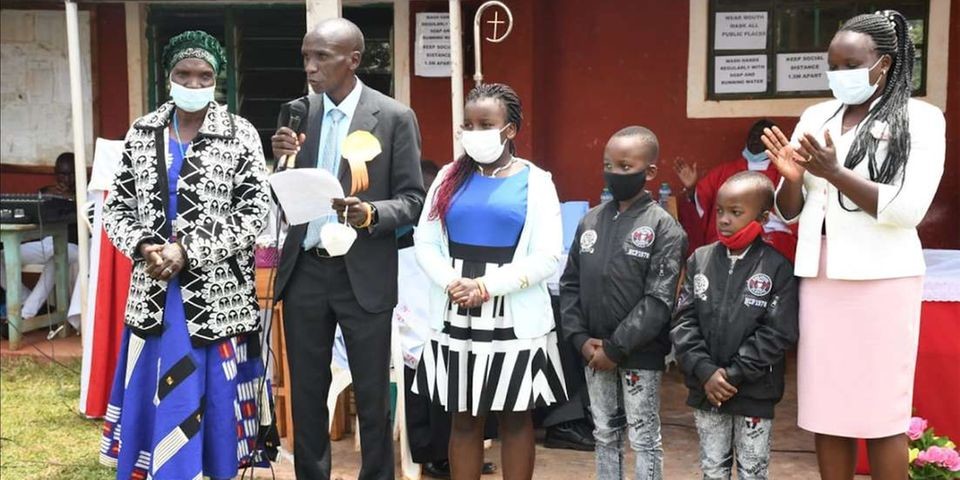
The project has been funded by President Uhuru Kenyatta.
The marathon great narrated that at a meeting in Mombasa last year President Kenyatta asked him what gift he wanted after his exploits on the world stage, and he settled for a communal library.

“I'm here to witness one of my dreams come true. My vision to transform my community has come true courtesy of the President.
“I appreciate the President's gesture which confirms to me that, indeed, no human is limited," said an elated Kipchoge who was accompanied by his family.
Kipchoge said it came as a big surprise to him when the President made the offer.
“The answer is what we have here today,” Kipchoge said, noting that a library is crucial and that reading had expanded his thinking and outlook in life.
“Books have been my loyal friend. Books are the perfect mode to travel out of any locality through. Books have helped me navigate through many challenges in life. I'm happy the President will be with us in every step of the way in this project,” added Kipchoge, with his usual touch of philosophy.
President Kenyatta last year issued a directive for the construction of a multi-million library at Kipchoge’s home village of Kapsisiywa.
“Eliud Kipchoge who is alive and here with us has also inspired the world that no human effort is futile, that we can dream and make our dreams a possibility. He has demonstrated that through integrity, hard work and commitment to excellence nothing is out of reach,” said the President when he honoured the athlete last year after his successful exploits in Austria when he broke the two-hour barrier for the marathon.
President Kenyatta decorated Kipchoge with the Elder of the Order of the Golden Heart (E.G.H) award, lauding his work in inspiring future generations to achieve the seemingly impossible.
Magoha, accompanied by Ministry officials, on November 22 last year delivered the offer letter from the President to the famous athlete as well as the Kapsisiywa Secondary School principal.
Kipchoge made history last year after becoming the first man to run a marathon in under two hours – clocking one hour, 59 minutes and 40 seconds at the “Ineos 1:59 Challenge” staged in Vienna, Austria.
(09/19/2020) ⚡AMPby Wycliff Kipsang & Tom Matoke
Registration is now open for local and international participants in this year’s Virtual Reggae Marathon, Half Marathon and 10K
Participants are invited to register via www.reggaemarathon.com and choose their virtual event. Registration remains open until November 30 and runners/walkers can complete their choice of event between November 14 to December 6.
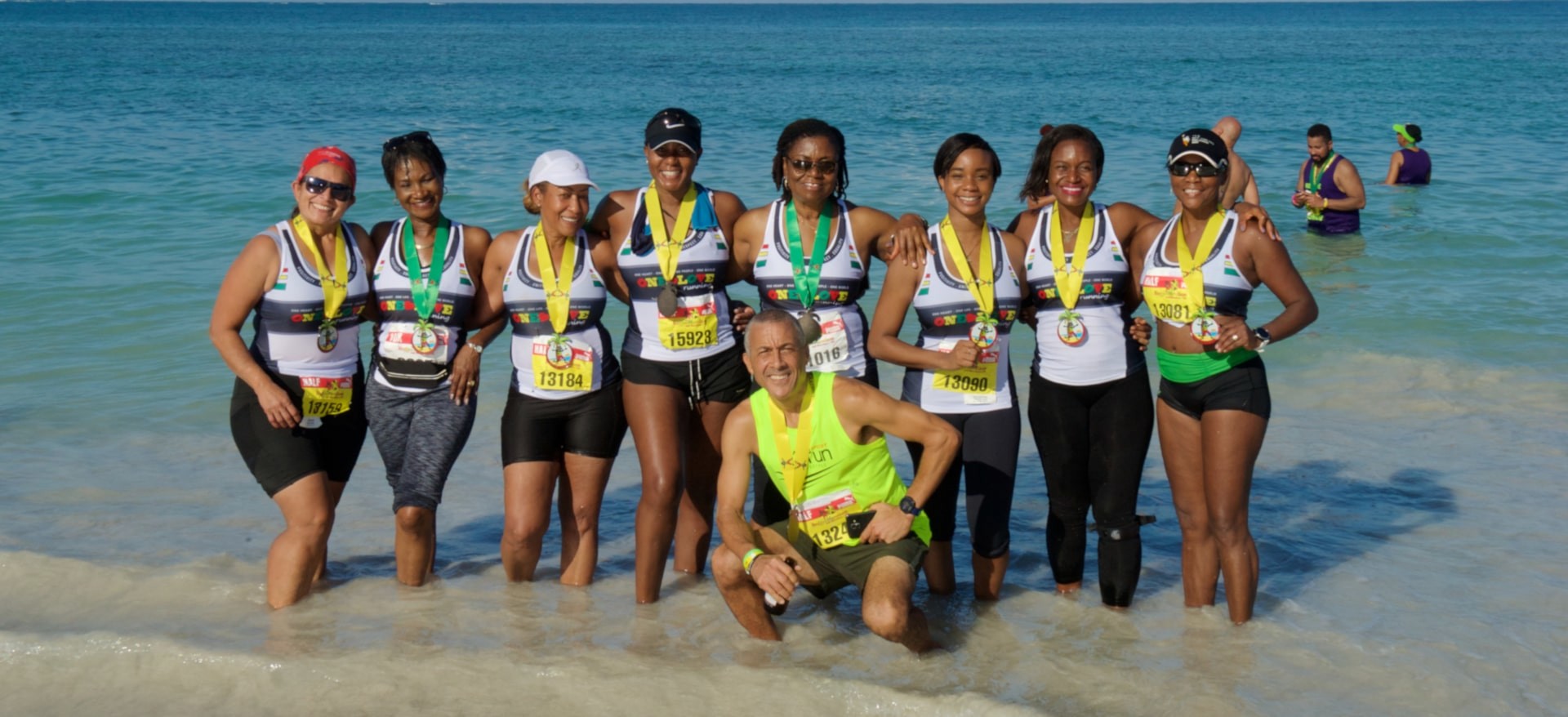
“The virtual event is a first for Reggae Marathon, Half Marathon and 10K now in its 20th year. We decided to go virtual so as not to disappoint the thousands of local and international participants who were looking forward to arriving in Negril for the event this year,” said race director Alfred Francis.
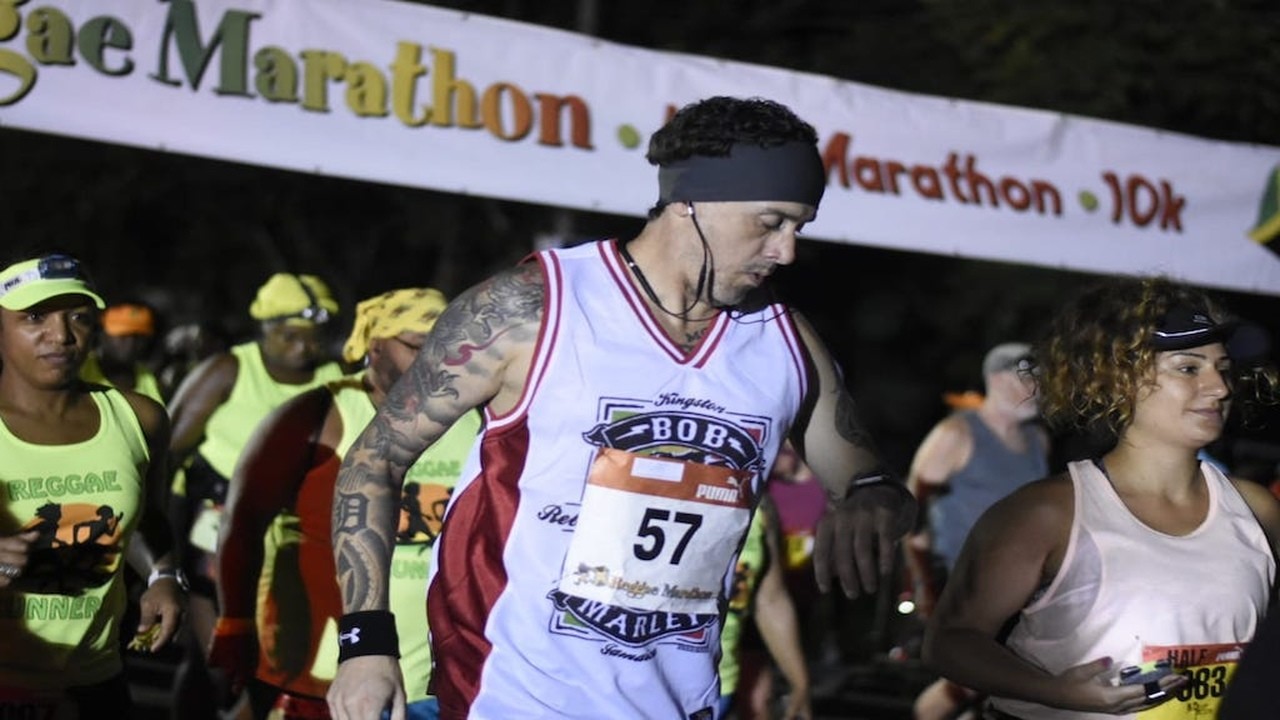
Under the new arrangement, each participant anywhere in the world will be able to run their own individual race between November 14 and December 6 and submit their times. Each runner or walker will receive a digital finisher certificate and runner’s bib, while post-race, each will get a medal, signature Reggae Marathon T-shirt and branded tote bag.
Francis also disclosed that going forward the Virtual Reggae Marathon will be held along with the physical race. “We are excited about this new feature and the possibilities in store for our charity partner, the Heart Foundation of Jamaica,” he noted.
Organisers say that since its inception in 2001, the Reggae Marathon has had 24,890 participants, with 13,169, or 53 per cent, being entries from over 40 countries.
(09/19/2020) ⚡AMPReggae Marathon
The Reggae Marathon & Half Marathon is Jamaica’s premier International Marathon Event. Marathoners, sports enthusiasts as well as beginners, converge in Negril, Jamaica’s capital of casual, for a fun event characterized by good vibes and lots of Reggae music. Enthusiastic supporters come out along the looped, internationally certified course to support participants. Meanwhile, hard working volunteers offer uniquely packaged water...
more...Runners sponsored by smaller companies might be in a better position than those who are signed by major brands
Earlier this week, the Swiss running shoe company On announced that it was starting an elite training group in Boulder, Colorado, called the On Athletics Club. It’s safe to say that this doesn’t seem like the most auspicious time to invest in professional running. Even though the Diamond League—the world’s premier track and field competition circuit—is scheduled to begin an abridged summer season on Friday, this year has seen an unprecedented number of race cancellations and it’s difficult to predict when the bleeding will stop.
International Olympic Committee President Thomas Bach has already gone on record saying that the Tokyo Games, which have been postponed to summer 2021, will not be delayed a second time. If they can’t be staged next August, the Olympics will be canceled outright, thus depriving track athletes of their quadrennial moment in the sun.
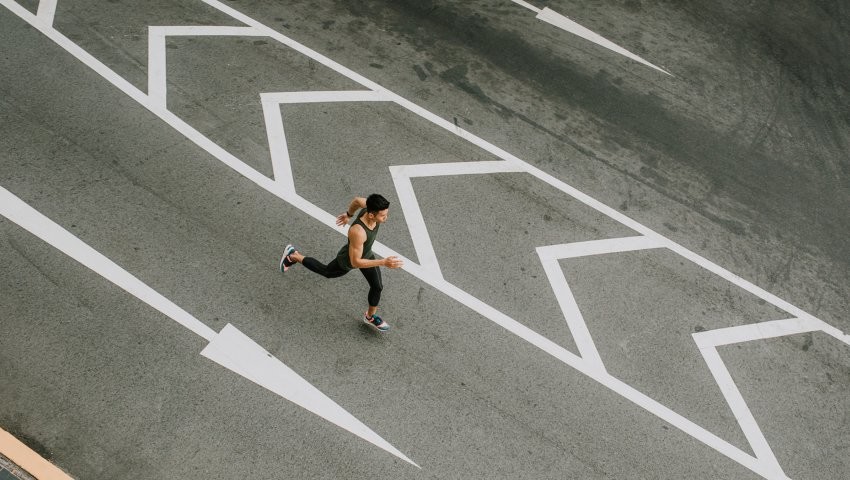
According to Steve DeKoker, On’s Global Sports Marketing Manager, the company has long been looking to develop an elite running team and the Boulder-based group represents the most significant move in that direction to date. For now, the On Athletics Club consists of eight runners, all of whom are in their 20s and were standout NCAA athletes (the University of Colorado’s Joe Klecker and the University of Wisconsin’s Alicia Monson are the headliners).
Recently retired Olympian Dathan Ritzenhein will act as coach. It has been disclosed that these athletes will be signing multi-year deals with no reduction clauses (i.e. performance quotas)—a risky move, perhaps, but one that On might currently be well-positioned to make thanks to a potential pandemic-inspired uptick in recreational running.
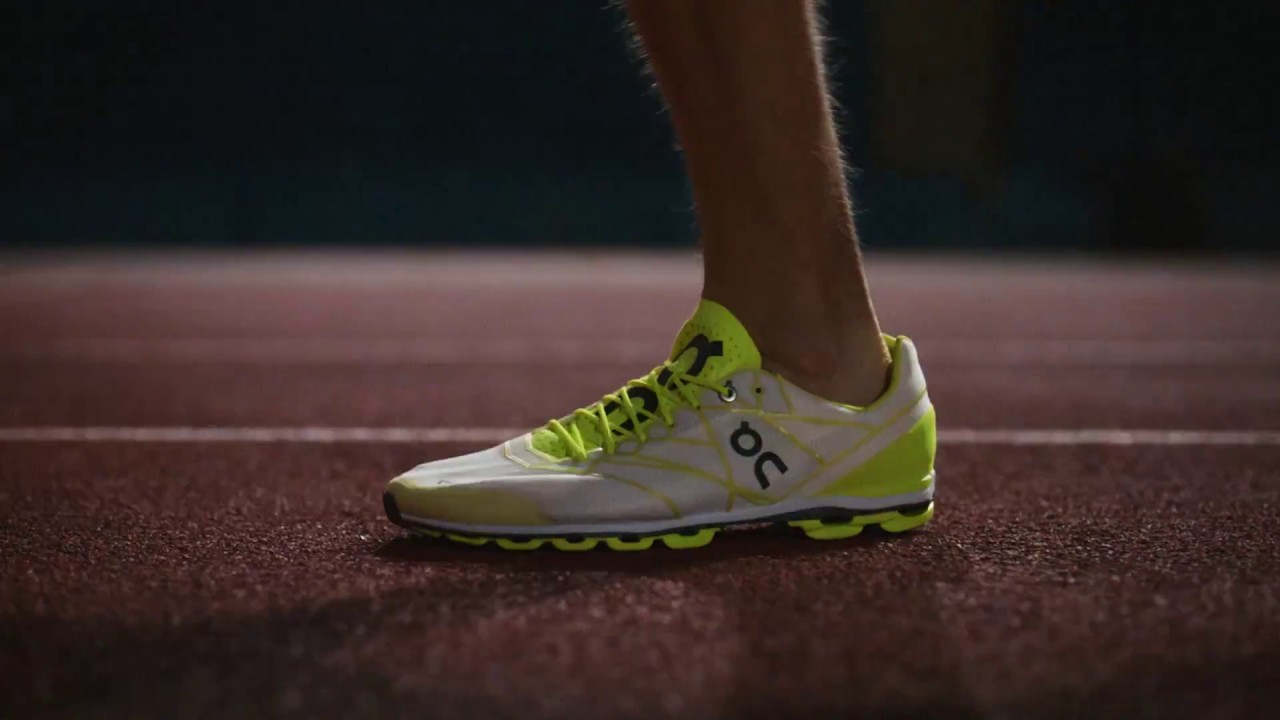
“Running is kind of experiencing this second boom,” DeKoker told Letsrun.com. “We’ve got all these folks at home who are struggling with different issues, but running is a viable activity for them. Whereas if you’re Nike, and you’re in 50 different verticals, running might be a positive one, but you’ve got a bunch of other sports that are hemorrhaging right now.”
There has been some evidence to bear this out. Nike has reported a 38 percent decline in total revenue through May 31. More specifically, last week, the market research company NPD published an article noting that prominent brands (Nike, Adidas, Under Armour) had an overall sales decline in athletic footwear in the first half of 2020, while several running-focused shoe companies had fared conspicuously well.
Hoka One One and On, in particular, saw year-over-year sales increases of 75 and over 50 percent, respectively. (An On representative has confirmed this, and added that the brand had recorded its highest ever sales month in June 2020.) Matt Taylor, the co-founder and CEO of the independent running apparel brand Tracksmith, told me that “there’s been a noticeable uptick in people running over the last few months,” and that Tracksmith was “seeing this trend reflected” in its business.
While the running industry will never be entirely insulated from the state of the overall economy, there is some logic to the notion that the sport is well-suited to weather a financial downturn. To use DeKoker’s term, running is a “viable activity” for many people because it is relatively cheap, accessible, and offers both physical and mental health benefits during times of uncertainty.
The most recent running boom occurred during the years immediately following the Great Recession; starting around 2008, there was a continual increase in running event participation, culminating in 2013, when a record 19 million runners took part in U.S. road races.
Of course, from a running perspective, one of the uniquely cruel aspects of the COVID-19 recession is that the pandemic has precluded the staging of most mass participation events. The New York Road Runners, the largest non-profit running events company in the United States, laid off eleven percent of its employees and furloughed an additional 28 percent in July. Hence, any discussion about how the pandemic might end up “benefiting” the running industry in shoe or apparel sales must be weighed against this freeze of running events.
For professional runners, meanwhile, the cancellation of big-ticket races signifies a loss in prospective appearance fees and prize money. Some athletes might also be contractually obligated to run a pre-set number of races, which, needless to say, has not been so easy in 2020. That’s why this has been the summer of intrasquad competitions, in which training partners take part in de facto time trials that have been spruced up just enough to qualify as official meets. While some of these events have yielded impressive performances—most notably Shelby Houlihan, of the Bowerman Track Club, breaking her own American record in the 5,000-meters—there have also been farcical scenarios where world-class athletes phoned it in, presumably so that they can reach their race quotas. (Last week, reigning Olympic 1,500-meter champion Matthew Centrowitz “raced” an 800... and ran 3:08. His personal best in the event is 1:44.)
It’s not a coincidence that the most prominent examples of these sham races have involved Nike athletes. After all, the Oregon-based company sponsors far more runners than any other brand. They have the funds to do it, but casting a wide net might also make it more difficult for Nike to offer elite runners the contractual perks of smaller, running-focused companies like Oiselle, On, and, recently, Tracksmith. For now, reduction clauses still seem to be the norm for the typical Nike track athlete. (A Nike spokesperson told me that the company does not comment on athlete contracts.)
Hawi Keflezighi, an agent whose clients include his brother Meb Keflezighi and recent U.S. Olympic Trials Marathon champion Aliphine Tuliamuk, agreed that this was likely to be the case. “I think Nike deserves credit for all the athletes and events that they sponsor, but at the same time, within that business model, if you have a lot of athletes, you can’t be as flexible as when you only have five or ten athletes on your roster,” Keflezighi, whose brother was a Nike athlete for years before signing with Skechers in 2011, told me. He added that, while it’s typical for companies to reassess which athletes they want to sponsor at the end of an Olympic cycle, the current uncertainty surrounding the fate of the Games, and looming recession, mean that conditions for athletes are even more cutthroat than usual.
“I think the bigger brands definitely have tougher decisions to make, just because they have a bigger investment overall,” Keflezighi says. “The athletes with those brands, especially if they are not medal contenders or in a great position to make the US Olympic team—under this environment, those athletes’ contracts are a little bit more vulnerable. If you have a smaller roster of athletes, you might be able to say, ‘Hey, you know what? Let me give that athlete an extra year or two.”
DeKoker echoed this sentiment. “Obviously, performance is going to be a key element, but it’s not the only element with On,” he says. “I do think that, at some of these other companies, it’s much more of a numbers game and unfortunately some athletes are going to be on the losing end of that.”
What will the “numbers game” look like in a worst case scenario where next year’s Olympics ultimately do get canceled? With any luck, we won’t get to find out.
(09/19/2020) ⚡AMPby Outside Online
The Enduring Appeal of the Fastest Known Time
Race cancellations have produced an uptick in FKTs, but the obsession predates the pandemic
Last week, there was big news in the world of “fell running,” a sport that can perhaps be described as the soggier, hillier, and more misery-inducing cousin of cross-country. Great Britain’s Beth Pascall set a new women’s record for the Bob Graham Round, the legendary 66-mile loop in England’s Lake District, which includes roughly 27,000 feet of elevation gain. Pascall completed the route in a remarkable 14 hours and 34 minutes. When she returned to Moot Hall, the Round’s start and finish point in the village of Keswick, a waiter emerged from a local pub to present her with a celebratory pint. Three cheers for Cumbrian hospitality.
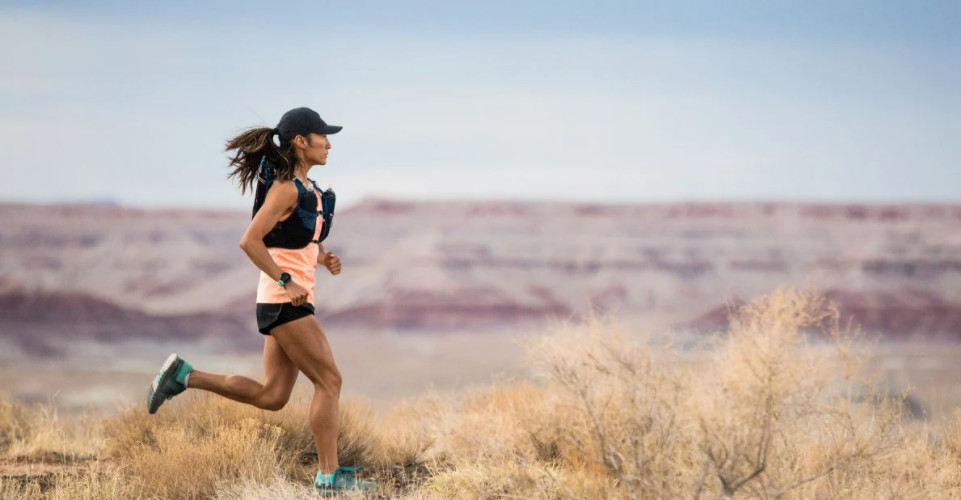
Like the rest of humanity, Pascall had originally intended to spend the summer of 2020 doing something else. In her case, she’d planned on contesting several high-profile races on the ultra circuit, including UTMB and Western States—events where she’d previously finished in the top five. That was before the coronavirus pandemic led to the cancellation of every major race under the sun.
“When all the races were canceled back in March, I was like, right, I’m going to do it,” Pascall says. “It didn’t cross my mind to do anything else, to be honest—just because the Bob Graham record is the most prestigious fell running record that exists.”
Needless to say, such solitary bids for glory have seen a rise in popularity in recent months. In a story for FiveThirtyEight, Anna Wiederkehr reported that the website FastestKnownTime.com had recorded nearly four times as many FKTs from runners through the first half of 2020, compared to the same time period in 2019. Last week, Wiederkehr appeared on NPR’s All Things Considered to explain the FKT phenomenon to the program’s slightly incredulous host, Ari Shapiro. “Why do people do it if they don’t get the bibs and the crowds and the glory and all the other things that go along with most sports?” Shapiro asked.
Why do people do it? It’s a reasonable question—especially since the FKT boom has been ongoing for years. One answer is that hardcore FKTers are primarily seeking the respect of their fellow endurance junkies. After all, even the mother of all (American) FKTs—the rim-to-rim-to-rim traverse of the Grand Canyon—is, for the most part, meaningful only within the insular world of ultrarunning.
“It’s a lot easier for someone who isn’t into ultrarunning to know what a good 10K or marathon time is, but with some of these FKTs, it’s kind of in the weeds as far as what the standards are,” says Pete Kostelnick, who set a new FKT for running across the United States after trekking from San Francisco to New York in the summer of 2016. (The mark stands at 42 days, six hours, and 30 minutes, in case you’re looking for ideas on how to spend the rest of your summer.)
“I definitely think that most people who do these FKTs are looking for recognition from their peers, certainly more than from people who don’t really understand the sport,” Kostelnick adds.
For an FKT to be accepted by FastestKnownTime.com, a run has to be verified with a GPS data file and the route has to be significant enough to warrant inclusion. Regarding the latter point, the website states that an FKT should be “notable and distinct enough so that others will be interested in repeating it.” Such phrasing leaves things open to interpretation. One recent entry on the website is Joey Campanelli’s new mark for the northbound route of Nolan’s 14, which involves bagging fourteen 14,000-foot peaks in Colorado’s Sawatch Range in 60 hours or less. (I suppose some people might be interested in repeating that.)
Of course, the sheer number of FKTs (there have already been more than 1,700 new additions to FastestKnownTime.com this year) means the majority of these efforts are probably only going to be significant on a hyperlocal level—think Strava CRs for trailheads. Hence, even for top athletes, the pursuit can sometimes be more of a personal challenge, as opposed to a bid for wider recognition.
“For me, it starts as a private goal,” says ultrarunner YiOu Wang, who recently set an FKT for the 40-mile stretch in the Sierra Nevada known as the Rae Lakes Loop. “I enjoy the process of working towards it, achieving it, and then sharing that achievement with the community.”
This private/public dichotomy suggests a sort of paradox at the heart of FKT culture, one that feels appropriate to our social media–saturated age. On the one hand, part of the appeal of these undertakings is that they project an air of spontaneity and wholesome solitude. At its most idealized, the pursuit of an FKT is a way to commune with nature while testing your physical limits. In theory, you can go out and set an FKT whenever the mood strikes or when the weather is favorable. You don’t need anyone’s approval. Unlike in races, where you’re taking part in a prepackaged, carefully regulated event, the hunt for an FKT can feel refreshingly removed from all the noise.
Sign up for our 10-day email challenge to get moving every single day and kickstart a more active lifestyle.
Enter your email address
This site is protected by reCAPTCHA and the Google Privacy Policy and Terms of Service apply.
But for an FKT to become “official,” the feat ultimately still requires external validation, and here the standards are becoming ever more stringent. FastestKnownTime now requests that runners who are attempting FKTs on famous routes state their intentions in advance, provide real-time tracking, and submit photographic evidence. Pics or it didn’t happen.
In the same way that the process of documenting an experience inevitably changes the nature of that experience, having an FKT as the main impetus for an extended traverse will impose certain constraints. (Right now, some intrepid souls are attempting FKTs on both the Appalachian and Pacific Crest Trails. Power to them. But if you were going to spend weeks trekking in the Sierra or the mountains of Appalachia, wouldn’t you want to take your time?)
When I brought this up to Kostelnick, who averaged 72 miles a day on his cross-country run and hence didn’t have much time to stop and smell the sagebrush, he admitted that, looking back, there was a sense of missed opportunity. “I had a lot of regrets,” he says. “I didn’t really soak in any sights, because I was always either moving, eating, or sleeping.” Such was the extent of his retrospective FOMO that, two years after completing his record-setting run, Kostelnick made another trip on foot, this time from Kenai, Alaska, to Key West, Florida, where he made a point of lingering when he felt so inclined. (The pace was a leisurely 50 miles a day.)
For her part, Wang says this was also a concern during her recent FKT attempt in the Sierra Nevada.
“I thought about that a lot, because it was my first time doing the Rae Lakes Loop and I actually wanted to enjoy it,” Wang says. “But a lot of times when you do an FKT, you don’t really enjoy the trail, because you have to be so focused on beating these times—it’s a difficult balance.” Despite such potential caveats, however, Wang feels that allure of the FKT is likely to persist.
As she told me: “If there’s a route out there, someone is going to try to do it as fast as they can.”
(09/19/2020) ⚡AMPby Outside Online
Does apple cider vinegar actually do anything for your body or gut?
Apple cider vinegar (ACV) has been touted as a holistic cure-all for decades, and it’s as popular as ever in the wellness world. Proponents claim the pantry staple has all sorts of positive benefits: reducing inflammation, slowing down aging, and promoting weight loss, to name a few. And in theory, certain properties of ACV suggest that these claims may have some truth to them. For example, ACV contains B-complex vitamins, which do have anti-inflammatory effects in the body. But the anti-inflammatory properties of these vitamins haven’t been studied in the context of vinegar consumption. That’s the problem with most of the claims people make about ACV—they just haven’t been proven, one way or the other.
ACV also has plenty of antioxidants, and researchers think antioxidants may help reduce chronic disease burden as we age. However, scientific studies on antioxidants have been inconclusive, and there isn’t really any research about ACV’s antioxidants and their effects. When it comes to the gut, it’s possible that the acetic acid in ACV could aid our digestion and thus ease gut issues, particularly as we age and produce less of our own stomach acids. In theory, adding another acid may help achieve the same thing, but whether it actually works is also, as yet, unproven.

However, there are a few evidence-backed, measurable physiological effects, including increased satiety: in a small study from the European Journal of Clinical Nutrition in 2005, participants who supplemented a standard meal with ACV reported feeling more full than those who didn’t. Another randomized controlled trial, in the Journal of Functional Foods from 2018, found that regular supplementation of two tablespoons of ACV daily for three months contributed to modest weight loss of a few pounds when compared to controls. So it seems apple cider might offer a small boost for those interested in weight loss—but that’s not necessarily a health benefit, unless you’re working toward a specific goal that you and your doctor have agreed would be beneficial for you.
ACV has also been shown to offer a small amount of help modulating blood sugar and insulin levels after you eat a meal, but not so reliably that it could replace traditional treatments and medications. A recent meta-analysis in the Journal of Advanced Nursing reported that in studies that collectively evaluated over 300 Type 2 diabetics, ACV supplementation did have beneficial effects on blood-sugar levels. However, most of the individual studies used small sample sizes, and while the results were promising, they were still pretty minimal.
If you’re interested in experimenting with supplementation, it’s safe to take ACV in small doses. Recommendations vary, but an ounce a day diluted in water is a safe place to start. The only notable side effects of overconsumption are an upset stomach and, if you take it undiluted, a sore throat or weaker tooth enamel over time. Just don’t expect a miracle, and remember that if something sounds too good to be true, it probably is.
I’m obsessed with my Theragun and generally any type of self-myofascial release, like vibrating foam rollers. Is it possible to overuse tools like this? The Theragun feels fantastic, but it’s also pretty aggressive.
From Theraguns to Hypervolts, it seems like everyone (including myself) nowadays is raving about the benefits of self-percussion therapy devices. Manufacturers claim that these devices accelerate recovery and muscle repair, improve blood and lymphatic flow, and relieve stiffness when regularly used before and after exercise. While some of these claims are likely overblown, there is some evidence that these devices can alleviate delayed onset muscle soreness—and as long as you aren’t finding that the tool is leaving you achier than you were when you started, you’re probably fine. The key here is to listen to your body, and stop if it starts to feel painful.
Most of the benefits listed above are anecdotal; of the above claims, the only one with scientific evidence behind it is that these devices can reduce soreness following vigorous exercise. A 2014 study in the Journal of Clinical and Diagnostic Research examined delayed onset muscle soreness. One group received vibration therapy after exercise, and another group had regular massage therapy. Those who received vibration therapy had a greater reduction in pain 48 hours after an intense workout compared to the massage-therapy group.
When using a percussive device, you can expect to feel some transient, mild soreness over the area being massaged, but you should use common sense. If you are percussing over areas that result in significant and increasing pain of a different character than simple muscle soreness, back off. These devices should only be used on muscle—other sensitive areas, such as an inflamed tendon or bursa, may benefit from a mild manual massage but should not be aggressively percussed. Percussing bone, in addition to being extremely painful, has no benefit. With these considerations in mind, using a Theragun on tired muscles may fast-track your post-workout recovery, and as long as you pay attention to your body, there is no real risk of overuse or injury.
(09/19/2020) ⚡AMPby Outside On Line
After more than two decades, John Capriotti is stepping down as leader of Nike’s track and field sports marketing group
“John is going into the consulting business,” said Steve Miller, a former Nike executive and the man who hired Capriotti at the company.
The fiery former track coach still worked for the sneaker giant as of Friday. But he is leaning toward a consulting deal that would make Nike one of his clients, according to a second source close to Capriotti.
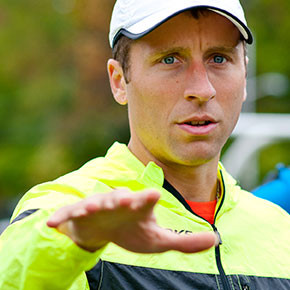
News of the change had the track and field world buzzing on Friday.
“It’s kind of unbelievable,” said a third source, a prominent sports agent. “He’s been in that position for the entire 21 years I’ve been around track and field. He’s been the single most influential person in the sport.”
Neither Capriotti nor Nike could immediately be reached for comment.
Capriotti’s decision comes as Nike is cutting costs and laying off employees. The company lost about $790 million last quarter.
Since Nike brought in John Donahoe as its new CEO and chairman in January, there has been speculation about the ramifications for the company’s sports marketing arm, and for its track and field operations in particular. Donahoe’s athletic background is unknown. But outsiders speculate that the longtime technology executive does not share the passion for track and field of his predecessors Phil Knight and Mark Parker.
Under Capriotti’s watch, Nike solidified its position as the sport’s superpower. It hired more track athletes to endorsement contracts than any other sponsor. It also bankrolled USA Track & Field, the sport’s governing body in this country, signing a sponsorship in 2014 worth more than $400 million.
Nike sponsored three different teams of elite runners, all of them based in Oregon. Its audacious goal was to make American runners once again competitive with the rest of the world.
Capriotti and Nike also helped secure Eugene’s position as one of the world capitals of the sport. He was such a fixture at Hayward Field that his customary spot in the grandstands became known as Cap’s Corner.
The stunning decision to award the 2021 track and field world championships to Eugene came in part because of the enthusiastic support of Knight and Nike. The coronavirus pandemic has delayed the running of those championships in Eugene until 2022.
There was also plenty of controversy. Alberto Salazar was Nike’s superstar coach for the Nike Oregon Project. But Salazar was dogged for years by allegations that he encouraged his athletes to use banned substances. He was banned from the sport for four years “for orchestrating and facilitating prohibited doping conduct.”
Nike sided with Salazar and continued to back him even after the ban, which Salazar is appealing.
(09/19/2020) ⚡AMPby Oregon Live
Strong European Field for Mattoni Ústà nad Labem Half-Marathon, celebrating its tenth edition on Saturday
This weekend's Mattoni Ústí Half-Marathon in the north of the Czech Republic near the German border will feature a strong European elite field, organizers announced today. The race celebrates its tenth edition on Saturday.
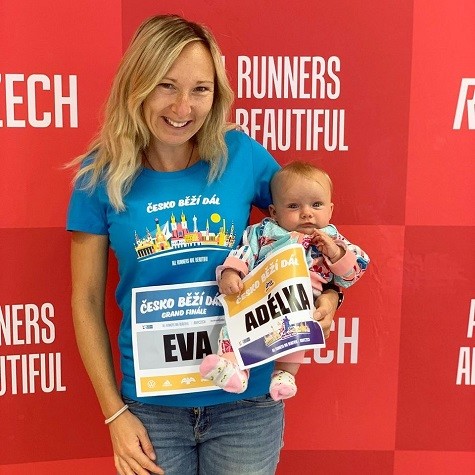
The women's field includes Eva Vrabcová Nývltová, the 2018 European Championships bronze medalist in the marathon, who is coming back to competition after giving birth to a baby girl, Adela, in 2019.
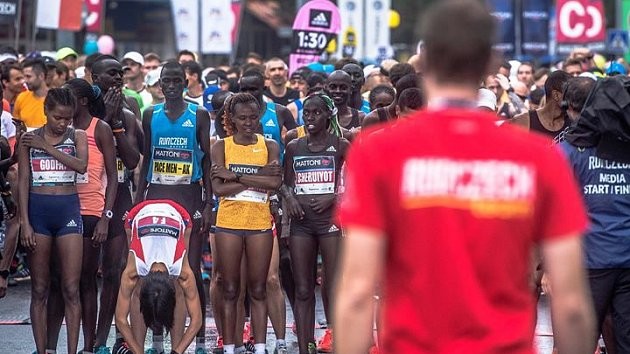
Unlike many road races which were postponed this year, the Mattoni Ústí nad Labem Half-Marathon is being held on its normal date. Last year's race had 2351 finishers, but this year should have fewer finishers due to COVID restrictions. The course records are Men, 59:14, by Kenya's Barselius Kipyego in 2017 and 1:07:17 by Peres Jepchirchir, also from Kenya, in 2015.
The elite start lists are as follows.
MEN -Said El Otmani (ITA) 1:01:31 (Verbania, 2019) Alejandro Jimenez (ESP) 1:03:05 (Valencia, 2019) Jirí Homolác (CZE) 1:03:23 (Prague, 2017) Alberto Sanchez Pinilla (ESP) 1:03:39 (Puerto de Sagunto, 2020) Bohdan-Ivan Horodyskyi (UKR) 1:04:43 (Kovel, 2019) Vít Pavlišta (CZE) 1:05:09 (Prague, 2016) Emmanuel Roudolff-Levisse (FRA) 1:05:22 (Lille, 2019) Robert Míc (CZE) 1:07:23 (Ústí nad Labem, 2017) Azeddine Habz (FRA) debut Jakub Zemaník (CZE) debut Sebastian Hendel (GER) pacemaker for women’s race
WOMEN -Fatma Maraoui (ITA) 1:10:08 (Cremona, 2011) Eva Vrabcová Nývltová (CZE) 1:11:01 (Prague, 2018) Ekaterina Korneenko (BLR) 1:12:45 (Poznan, 2019) Marcela Joglová (CZE) 1:13:46 (Kostenice, 2020) Kristina Hendel (GER) 1:14:02 (Berlín, 2019) Ivana Sekyrová (CZE) 1:14:06 (Pardubice, 2013) Cecilia Mobuchon (FRA) 1:14:16 (Sevilla, 2020) Nuria Lugueros Diaz (ESP) 1:15:11 (Madrid, 2019) Tereza Hrochová (CZE) 1:15:59 (Kostenice, 2020) Barbora Jíšová (CZE) 1:18:51 (Prague, 2018) Tereza Jagošová (CZE) 1:25:08 (Olomouc, 2018)
(09/18/2020) ⚡AMPMattoni Usti nad Labem Half Marathon
Enjoy the urban run at the Ústí Half Marathon. The course leads alongside the river Elbe opening a view to impressive rock formations, Strekov castle and then crossing the area of a chemical factory which is a perfect example of industrial architecture of the First Republic. The Ústí nad Labem Half Marathon is an annual half marathon race which takes...
more...Lydia Njeri Mathathi is among the pace-makers for next month’s London Marathon
First Lady’s Half Marathon champion Lydia Njeri Mathathi is among the pace-makers for next month’s London Marathon.
Yes, you guessed it! She is a sister of the famous distance running star, Martin Irungu Mathathi, bronze medallist at both the 2006 World Cross Country Championships (Fukuoka) and in the 10,000 metres at the 2007 World Championships (Osaka).
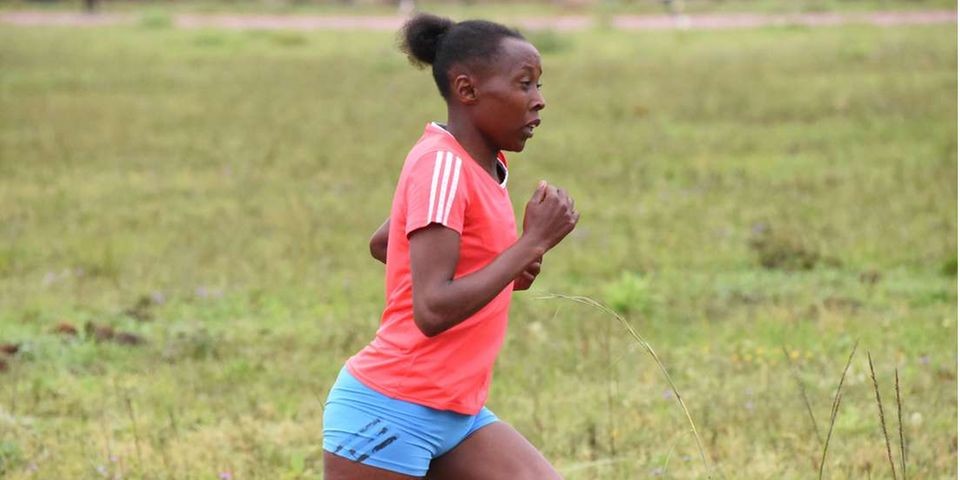
Lydia will be playing “rabbit” in a major race for the second time and has been delegated the responsibility to pace for the second group of athletes.
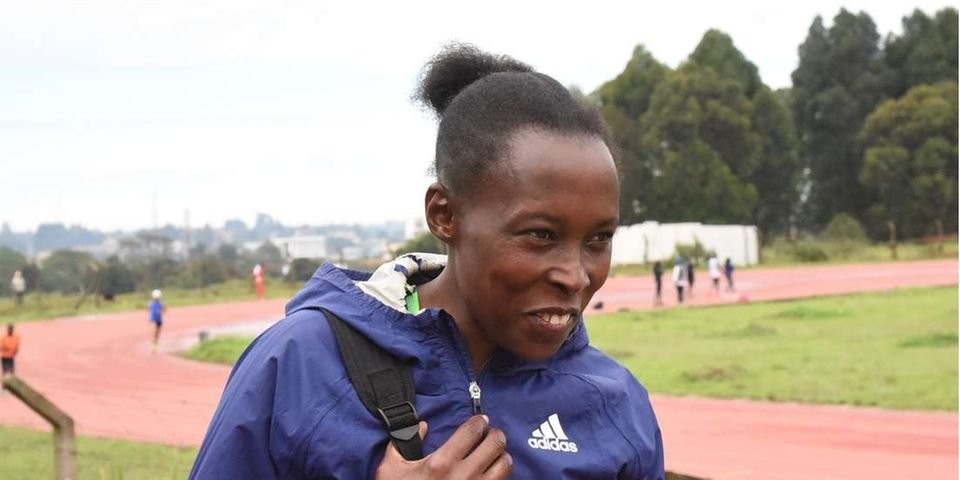
The time target for this group is two hours and 23 minutes.
Apart from pacing various athletes, Lydia is also an accomplished athlete in her own right, and has competed in various races on the road, catching the eye of race directors.We caught up with her at Kipchoge Keino Stadium in Eldoret, Uasin Gishu County, last week where she was sharpening her skills in a speed work session.
Just like other athletes across the country, Lydia was forced to retreat from serious training when the coronavirus struck forcing the government to ban group training.
She said, that forced her to continue training alone due to the rules from the government but she is happy the country is slowly opening up and she is up to the task ahead.
“It has been a long journey in training because of the virus which sent us back to the drawing board where we missed the whole season of athletics,” said the younger Mathathi.
Lydia bagged victory in First Lady’s Half Marathon in Nairobi (one hour, 12 minutes and three seconds) with Londiani-based Emily Chebet coming in second in1:12:30 and Pacifica Jeptoo closing the podium in 1:12:44.
This was after disappointment from the Paris Half Marathon where they were forced to fly back home after the race was cancelled due to coronavirus.
"We flew all the way to Paris only for the organisers to cancel the race in the last minute due to the coronavirus pandemic which had started spreading across the world. I’m happy because I managed to bag victory in the First Lady’s Half Marathon and since then we have just been training at home,” she said.
“I used to participate in various races in school and this was because my brother was an athlete and I wanted to be like him. I’m happy because my brother has been of great help in my career and I will be going for nothing but the best,” said Lydia, who has a personal best of 67:51 in the half marathon.
(09/18/2020) ⚡AMPby Bernard Rotich
TCS London Marathon
The London Marathon was first run on March 29, 1981 and has been held in the spring of every year since 2010. It is sponsored by Virgin Money and was founded by the former Olympic champion and journalist Chris Brasher and Welsh athlete John Disley. It is organized by Hugh Brasher (son of Chris) as Race Director and Nick Bitel...
more...2021 Vienna City Marathon moves from April into September
The Vienna City Marathon is the second major international marathon which has been moved from a spring date of 2021 into the second half of the year. The race is now scheduled for 12 September. This spring organizers had to cancel Austria’s biggest one day sporting event due to the corona virus pandemic. Because of the ongoing uncertainties during the pandemic there was too much risk continuing to plan with a race on 18 April 2021, organizers explained. The first major race that was moved from spring into the autumn in 2021 was the London Marathon. The Vienna City Marathon is a World Athletics Gold Label Road Race.
The world is still in a state of upheaval and constant change due to the corona virus pandemic. This especially applies to organizers of major events. That led to the decision to postpone the upcoming Vienna City Marathon from April to 12 September 2021. "In accordance with health experts and those in charge for the City of Vienna, we are convinced that on this date in September we will find an improved overall Covid-19 situation and be able to organize a major marathon in Vienna. We want to hold an event that offers a thrilling experience and inspires the participants and spectators - a race like the one we staged in 2019 or in the years before. Moving it to the second half of 2021 is the more honest answer to the difficult situation and brings more reliability and planning security, also for the participants", reads a statement of the organizers.

"Our goal is to organize the Vienna City Marathon safely but also with a great atmosphere. However, we cannot carry out the extensive conceptual and preparatory work for the marathon under unknown and constantly changing regulations. We want to organize running events and will do so according to the current rules. For our major event, the Vienna City Marathon, however, moving it to September is the more realistic way," says Vienna City Marathon Race Director Wolfgang Konrad.
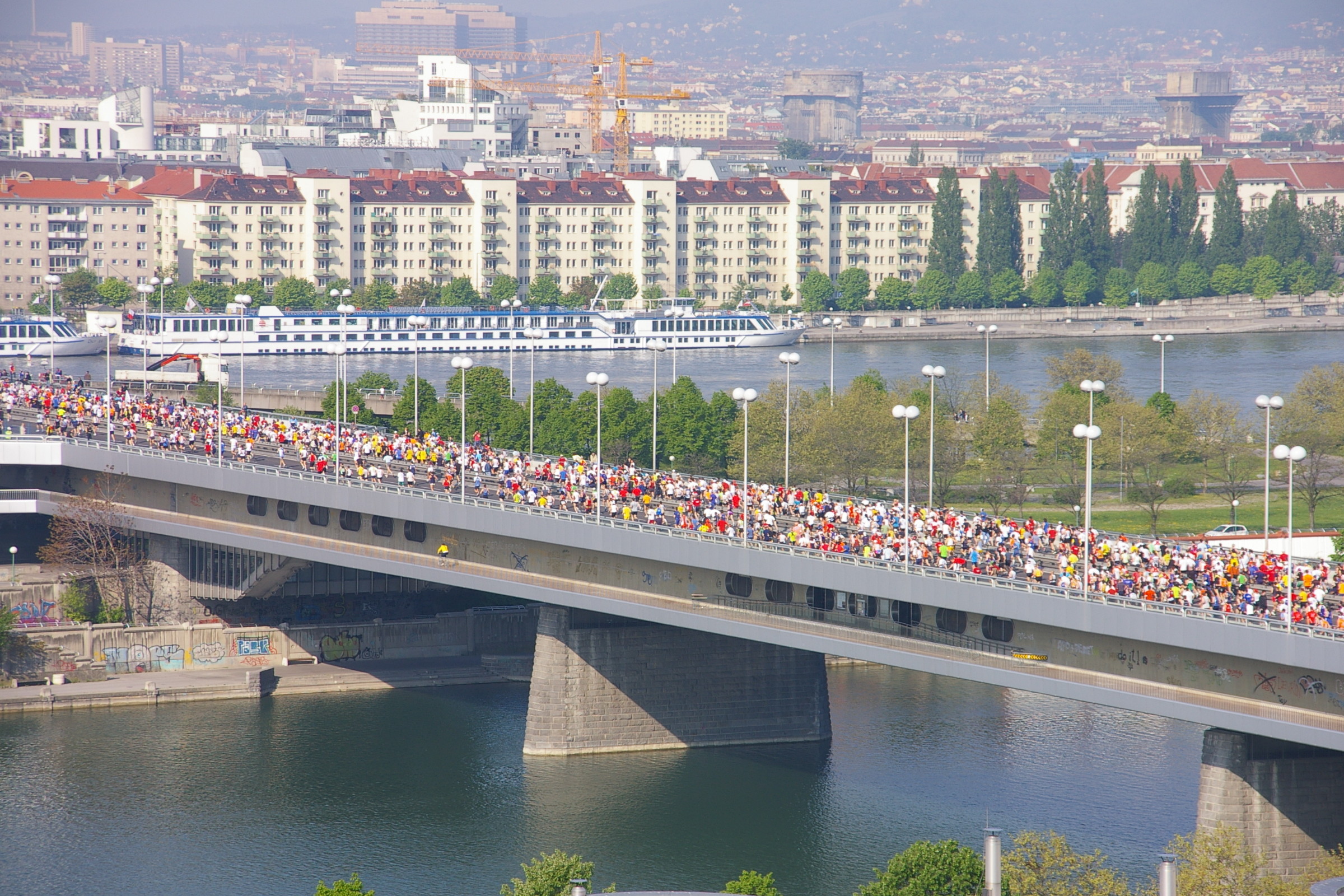
"I am delighted that the Vienna City Marathon 2021 is planned to take place in an attractive and customary manner. The event mobilizes Vienna and the Viennese population. As a tourist magnet with strong economic effects, the event is of great importance beyond sports and health promotion. It is clear that due to the Covid-19 pandemic, events like the Vienna City Marathon have to cope with great challenges. However, in the light of the Covid-19 pandemic, holding the event in September 2021 offers a clear perspective. We hope that the marathon can be held on this new date on the well-known route, which passes numerous tourist attractions of Vienna," says Vienna’s Mayor Michael Ludwig.
The date of the Vienna City Marathon is usually fixed for several years in advance. "It would not have been feasible to wait and hope for the next few months. We could then have found ourselves in a position urgently trying to find a new date in the autumn of the same year. The move required coordination with the City of Vienna, the police, public authorities and other event organizers in order to keep the course through the entire city and the finish area in the Ringstrasse / Rathausplatz area available for the races and for the set-up work," says Gerhard Wehr, Managing Director of the Vienna City Marathon. He thanked the City of Vienna as well as the sponsors and partners for their support and cooperation.
"We hope that the current circumstances and regulations will continue to allow running events to take place. We look forward to every event that can go ahead. This is what our heart beats for, and this is what we will continue to do with all our commitment," Vienna organizers announced. Online entry for the Vienna City Marathon 2021 will start in autumn at: www.vienna-marathon.com
(09/18/2020) ⚡AMPVienna City Marathon
More than 41,000 runners from over 110 nations take part in the Vienna City Marathon, cheered on by hundreds of thousands of spectators. From the start at UN City to the magnificent finish on the Heldenplatz, the excitement will never miss a beat. In recent years the Vienna City Marathon has succeeded in creating a unique position as a marathon...
more...Epic clash at London Marathon this year, but with lower prize money
Top athletes will earn less in this year's London Marathon as effects of Covid-19 continue to hit the sports world.
Organisers of the October 4 race say the prize money has been cut by nearly half of what was offered last year.
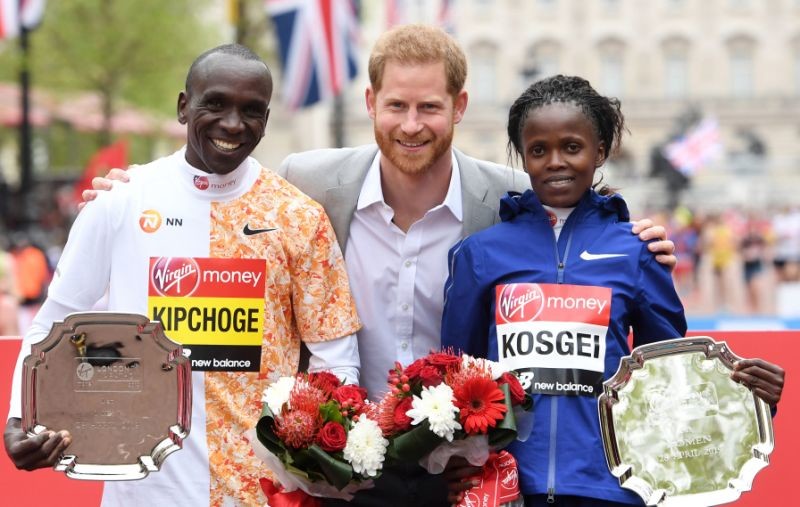
With only 17 days to the 40th edition of the London Marathon, the announcement comes as a shocker for marathoners who are just returning to the sport after months of heavy lockdowns.
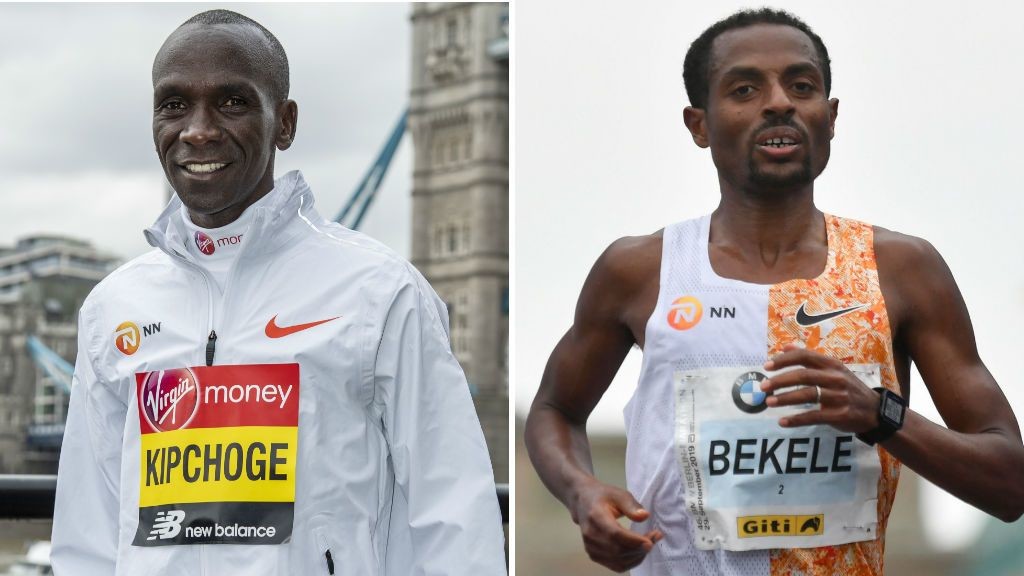
Interestingly, for the first time there will be a separate prize pool for the best performing British athletes for the London clash that will present the scintillating clash between the world’s fastest marathoners - Kenya's Eliud Kipchoge and Ethiopia's Kenenisa Bekele.
The elite men’s race will see one of the most eagerly anticipated clashes in marathon history with Kipchoge going head-to-head with Bekele, the man who came within two seconds of his world record last year in Berlin.
(09/18/2020) ⚡AMP
by Stephen Rutto
TCS London Marathon
The London Marathon was first run on March 29, 1981 and has been held in the spring of every year since 2010. It is sponsored by Virgin Money and was founded by the former Olympic champion and journalist Chris Brasher and Welsh athlete John Disley. It is organized by Hugh Brasher (son of Chris) as Race Director and Nick Bitel...
more...A French court sentenced former IAAF president Lamine Diack to 2 years in prison
A French court found 87-year-old Lamine Diack guilty on multiple counts, but he does have the right to appeal.
Former IAAF (now World Athletics) president Lamine Diack has been found guilty of corruption and breach of trust by a French court. Diack was at the centre of multiple doping coverups involving Russian athletes, and he reportedly received millions of dollars to help guilty athletes avoid convictions. At the 87-year-old Diack’s trial in June, prosecutors requested that he be sentenced to four years in prison along with a fine, but he got off with a lighter sentence of just two years, plus a fine of 500,000 euros (C$782,000). Diack was president of the IAAF from 1999 to 2015.
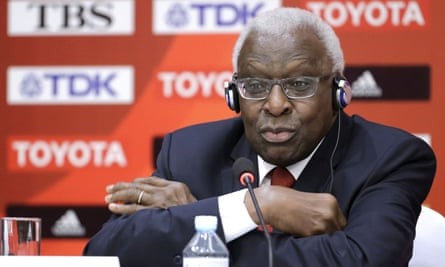
As reported by the Associated Press, the trial’s chief judge, Rose-Marie Hunault, outlined Diack’s involvement in the Russian doping scandal, for which he was paid close to C$5 million. “The money was paid in exchange for a program of ‘full protection,’” Hunault said, which allowed guilty athletes “purely and simply to escape sanctions.”
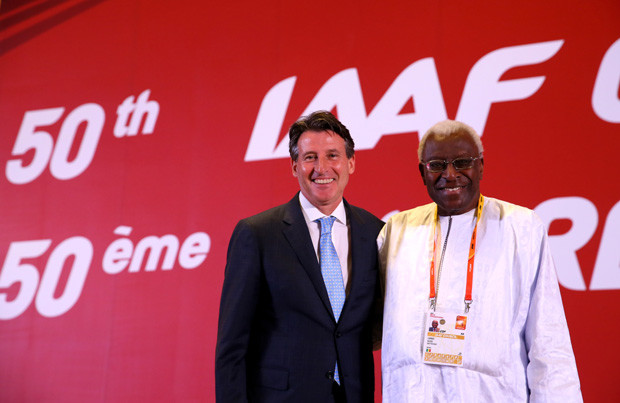
Diack was first charged in 2015, and he has been under house arrest in France ever since. He was originally charged for corruption and money laundering, although the French court found him not guilty on the latter charge. While Diack has been handed a sentence, he still has the right to an appeal.
Diack’s son, Papa Massata Diack, was also sentenced to prison and fined on Wednesday, although he was not present in court. He worked as a marketing consultant for the IAAF while his father was head of the organization, and Hunault said he received almost C$20 million from TV deals and other contracts, which was then laundered through other companies.
The younger Diack has stayed in Senegal throughout the trial, and while French authorities have requested he be extradited so he can be properly sentenced, Senegalese officials have refused to do so. While he was not present on Wednesday, the court still sentenced him to five years in prison and handed him a fine of 1 million euros (C$1.5 million).
(09/17/2020) ⚡AMPby Ben Snider-McGrath
Pandemic cancels Lake Tahoe marathon
Eager runners registered to participate in this year’s Lake Tahoe Marathon will have to wait until 2021 to hear the starting gun go off: the event is now cancelled, South Tahoe Now reported.
“The odds of being able to have the 25th Lake Tahoe Marathon this year on Oct 9-11th have dropped to about 1 percent,” race director Les Wright wrote in a letter to participants. “I spoke to the South Lake Tahoe City Council on Zoom at the end of their meeting in the Public Comment session this afternoon. No action can take place during this time.”
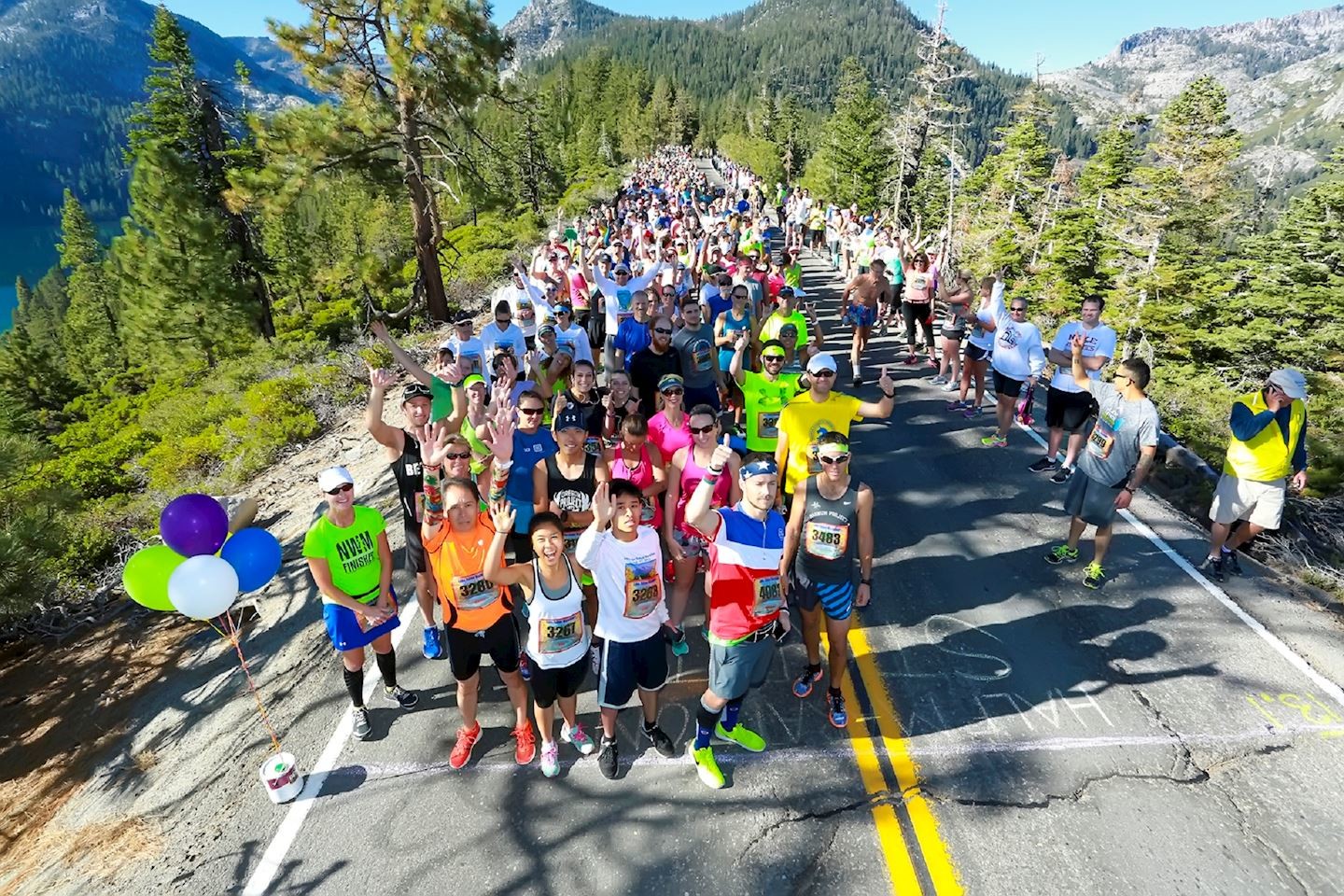
Originally, the 26th marathon was scheduled to take place October 9-11. It's now been moved to October 8-11 in 2021.
Wright went on to say that “CA is on fire right now” and that although he hopes the fires will be over by October the marathon dates this year, he thinks there is “a good chance the Lake Tahoe Basin will still be smoky then as well.”
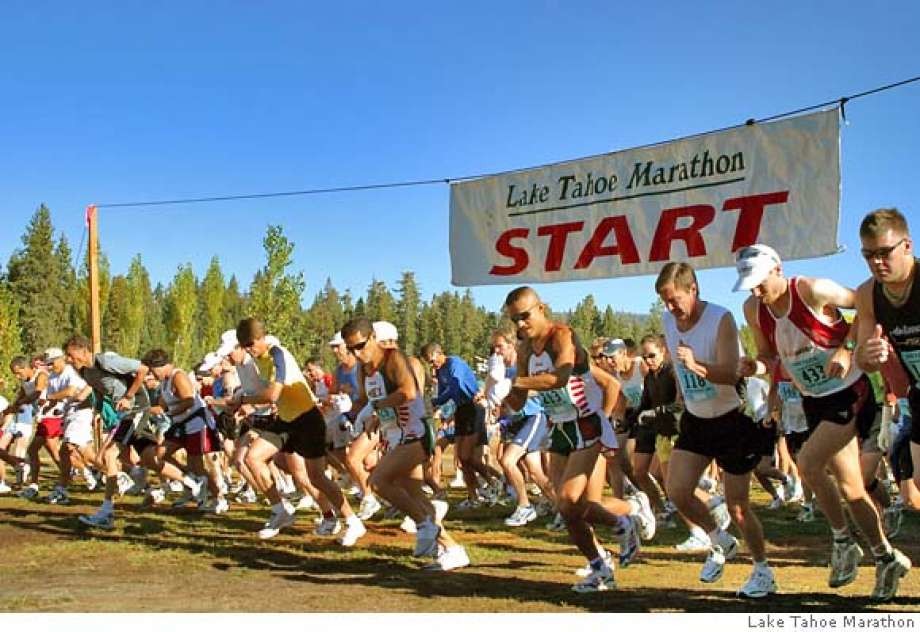
Despite COVID-19 and wildfires, Wright thinks people will still show up and run regardless.“If I can help you with running on your own, I will be glad to give you advice," he said. "Meanwhile, wear your mask, social distance, and keep running when you can.”
Organizers around the world have been forced to cancel marathons as the COVID-19 pandemic spread across oceans and continents. Amongst the casualties: the New York marathon, the Boston marathon and the Berlin marathon.
(09/17/2020) ⚡AMPby Fernando Martinez
Lake Tahoe Marathon
3-Days of Running: Tahoe Triple 3 x 26.2M Tahoe Trifecta 3 x 13.1M Friday: Lakeside Marathon & Nevada Half Saturday: Cal Neva Marathon & Carnelian Bay Half Sunday: Lake Tahoe Marathon, Emerald Bay Half, 16.4 miler, 10K, 5K 4-Person Marathon Relay, 72 Mile Midnight Express Ultra, Kids Pumpkin Runs....
more...Why young Kenyan Sandra Chebet cannot wait for London Marathon?
It’s baffling that, at just 22 years of age, Sandrafelis Chebet has fallen in love with road running.
Ideally, one would expect her to gain some track experience from the middle distance to the 10,000 meters before hitting the asphalt.
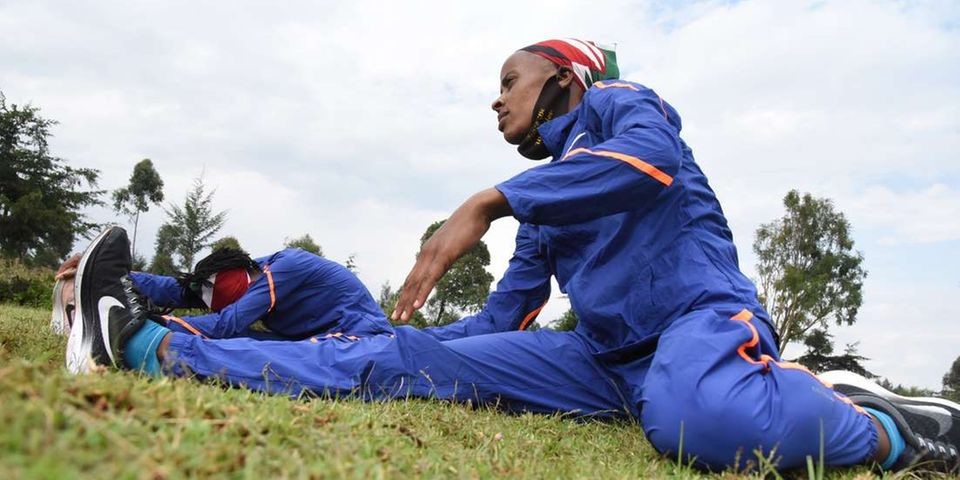
The dearth of Kenyan talent in the 5,000 and 10,000 meters, with just Hellen Obiri to bank on, means Kenyan coaches needed to have enticed the likes of Chebet to work on the track, hoping to stop the potentially dangerous streak by Dutchwoman Sifan Hassan that could threaten Kenya’s gold medal hopes at the Tokyo Olympics next year.
Nonetheless, the 2015 World Under-18 Championships silver medalist in the 2,000 meters steeplechase hopes that her enlisting to pace the women’s lead group at next month’s London Marathon will motivate her to bigger things.
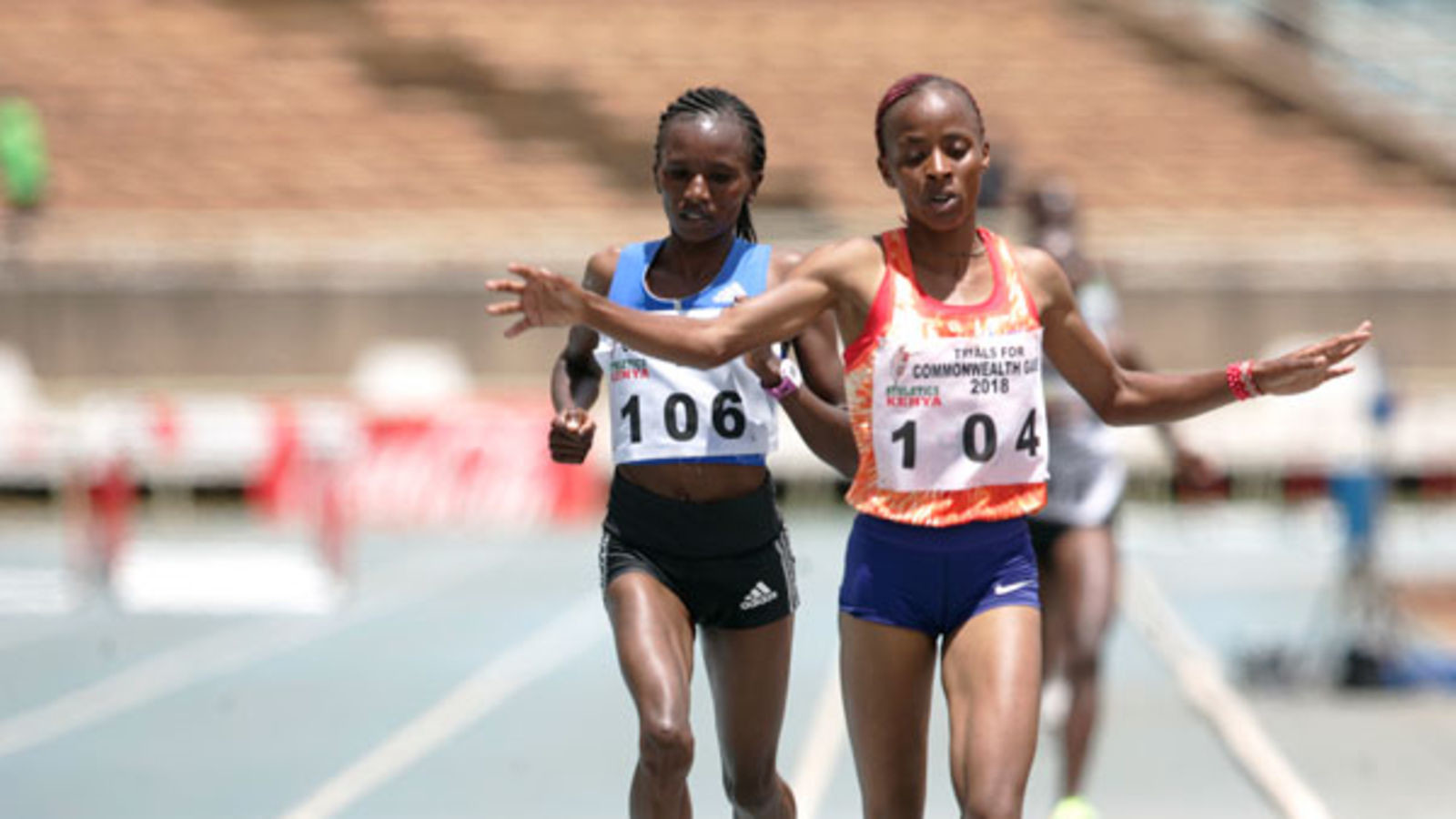
Chebet has been tasked with pacing for the lead group of women in London who include world record holder and defending champion Brigid Kosgei, world champion Ruth Chepng’etich, 2018 champion Vivian Cheruiyot, Frankfurt Marathon champion Valary Aiyabei and debutant Edith Chelimo.
Nation Sport caught up with Chebet at Lemotit Athletics Camp in Londiani, Kericho County, where she said her featuring in a major marathon will help improve her performance.
“I’m lucky to have been selected as one of the ‘rabbits’ who will be pacing for the lead group in London,” she said.
“It’s a tough task, but I will do my best to make sure I deliver good results,” said Chebet who is under the Italy-based Rosa Associati management, the same stable as Kosgei and Chepng’etich.
Chebet admitted that when the coronavirus struck, everything came to a standstill and with the closure of training camps, she decided to continue her training following the guidelines from the ministry of health of social distancing.
“It was tough training in a group of three or less but I’m happy because I was not discouraged knowing that the virus will be contained and competitions will resume.
“I went on with my training and with the big assignment ahead, I will do what I can to deliver,” she said.
She praised her training partner Beatrice Chebet, who is also the World Cross Country Championships’ junior title holder, for her assistance in speed work session.
“Beatrice has been of great help to me because she has good techniques in finishing which is good for an athlete, and I have been always ready to listen from her,” added Chebet who has a half marathon personal best time of 68:14.
Still only 22, Chebet looks forward to graduating to the full marathon in future and believes that pacing the best athletes in the world in London gives her the much needed drive.
She looks at it as a learning experience.
“I have participated in various half marathon races and by next year, I will be shifting to the full marathon where I want to register my name as one of the best in the distance, but I have to start slowly before becoming a world beater,” she added.
She said her mentors are Kosgei and Cheruiyot who make her work hard as she seeks to venture into marathon races and build up from there.
With silver medals at the World Under-18 Championships (steeplechase, Cali, Colombia), Africa Under-20 Championships (5,000m, 3,000m, Tlemcen, Algeria) and a 3,000m bronze at the Africa Under-20 Championships (3,000m, Addis Ababa), Chebet hopes to graduate to become the golden girl of distance running.
(09/17/2020) ⚡AMPby Bernard Rotich
TCS London Marathon
The London Marathon was first run on March 29, 1981 and has been held in the spring of every year since 2010. It is sponsored by Virgin Money and was founded by the former Olympic champion and journalist Chris Brasher and Welsh athlete John Disley. It is organized by Hugh Brasher (son of Chris) as Race Director and Nick Bitel...
more...The Beirut Marathon Association will host a virtual 5k to bring light to the city after recent tragedy
To support and bring relief to the people of Beirut, who are continuing to struggle after a tragic explosion in August, the Beirut Marathon Association will be hosting a global virtual 5k called Embrace Beirut. All of the proceeds collected from the virtual event will be donated to the Lebanese Red Cross, who is currently providing on-site aid to the victims of the explosion.
“Our hopes from this event are to raise awareness about Beirut amongst international communities and raise funds for its victims,” said May El Khalil, President of the Beirut Marathon Association.
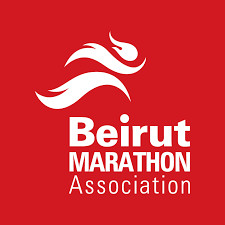
More than 300,000 individuals were severely affected by the explosion. A vast majority of individuals have been displaced and need medical supplies, along with basic hygienic necessities.
“Some have lost their loved ones, many have been severely injured, most were left without proper shelter, and surely all have lost a piece of their hearts,” said El Khalil.
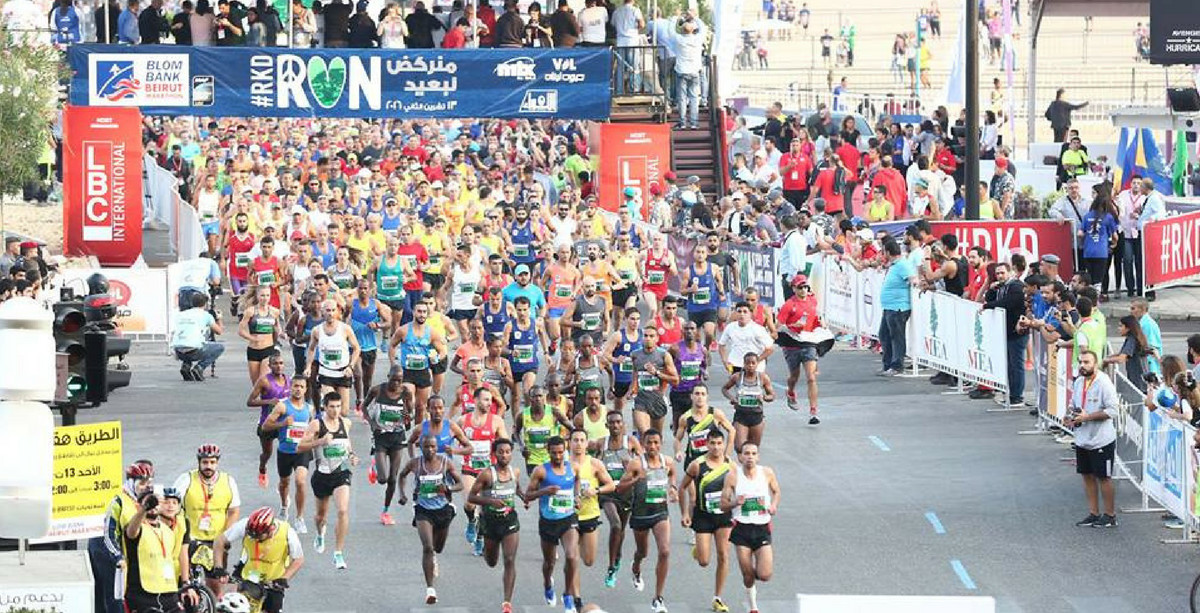
Embrace Beirut is encouraging individuals and other organizations to support by spreading awareness for the virtual event through their own communication outlets and on social media.
“We would like most marathon associations around the world to be aware of this event and to even promote it amongst their loyal participants and audience,” said El Khalil.
The Beirut Marathon Association is partnering with the premier technology provider, haku, to help bring the virtual event to life through haku’s virtual suite of products.
“We are honored to help support the people of Beirut through our partnership with the Beirut Marathon Association and to provide innovative resources to assist in delivering an amazing participant experience throughout the event,” said Carlos Escobar, haku Founder and CEO.
“haku’s reputation and experience with handling registrations for sports events is unprecedented, and we are flattered that they are handling this event,” said El Khalil.
Registration for Embrace Beirut opens on Thursday, September 17th. The event will take place from October 1-8.
(09/17/2020) ⚡AMPBlom Bank Beirut Marathon
On the morning of October 19th 2003, Lebanon witnessed a unique event in its history and hosted its first international Marathon. It all began with a dream that May El Khalil had of bringing the running culture to Lebanon. After surviving a near fatal accident while running, May El Khalil began to actualize her dream: from her hospital bed...
more...Salvador Wirth runs fastest ever Half Marathon for age 13
13-year-old from Annandale, Minn., set a single-age world record on the weekend at the Brookings Half-Marathon in South Dakota. Salvador Wirth stopped the clock in 1:16:11, the fastest half-marathon ever run by someone his age and the second-fastest time on the day.
He wasn’t far off the win, finishing just 28 seconds behind the first-place finisher’s top time of 1:15:43. Wirth ran an average pace of 3:37 per kilometre over the course of the 21.1K race, which was his first official half-marathon.
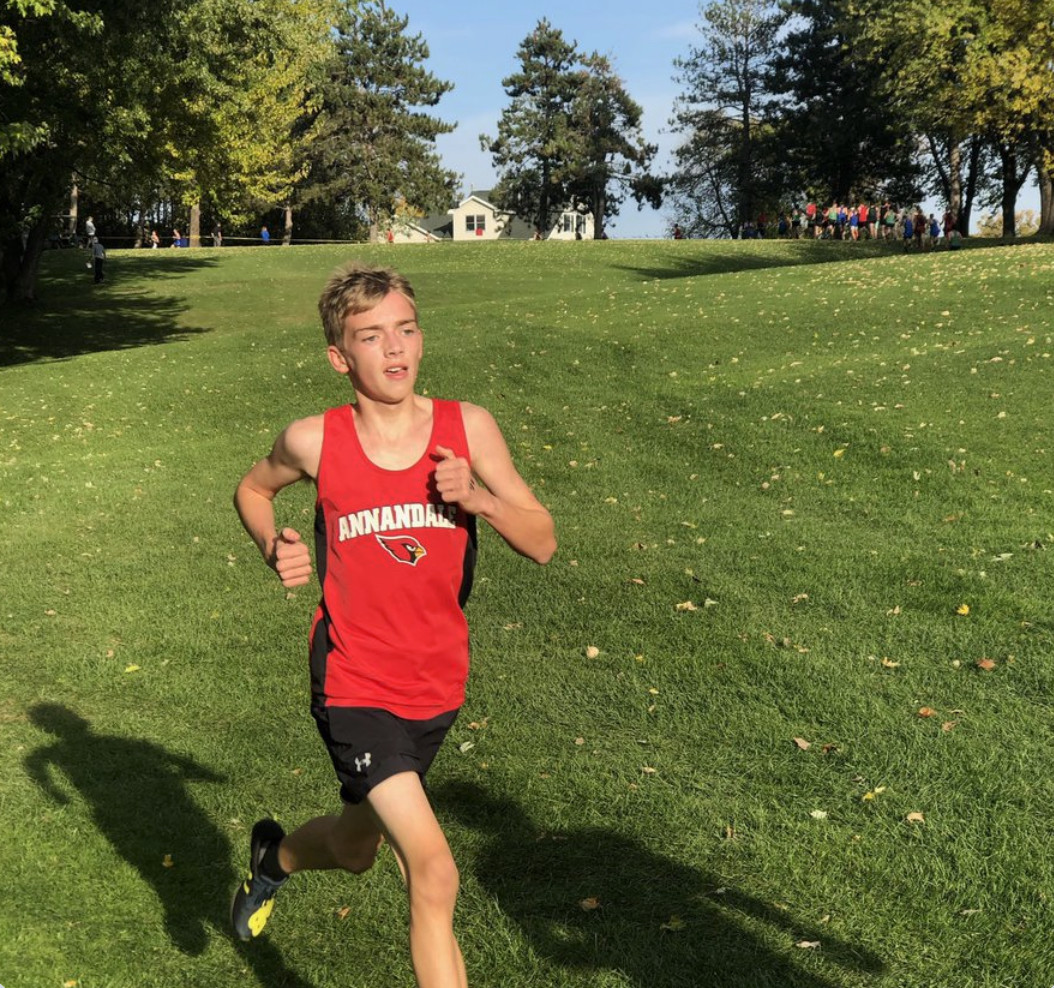
Wirth didn’t just happen to set the record — he knew the time to beat heading into the race, as his father told The Brookings Register before the event. According to the Association of Road Racing Statisticians database, the previous half-marathon best for a 13-year-old boy was 1:18:53, set by an Australian runner in 2013.
Earlier in the summer, Wirth ran a 1:18:00 in a virtual half-marathon, but since it was not run at a legitimate race on a set course, that of course was not ratifiable as a record. Even so, it gave Wirth confidence that he could top the existing record, which he accomplished handily, smashing the previous world best by well over two minutes.
(09/16/2020) ⚡AMPRunCzech is getting ready for its first half marathon this year in Ústà nad Labem
RunCzech is aligning its activities in accordance with the incoming regulations and we are constantly working on the 10th edition of the Mattoni Ústí nad Labem Half Marathon, which will happen on Saturday, 19th of September.
The race program will include the dm Family Run, the Spolchemie Czech Handbike Championship, and of course the spotlight will be aimed at the main race. Race organisers from all around the world had big ambitions for this year. However, most of the races got cancelled and organisers had to look for other solutions.
Some are organizing races for elite runners only. Others are experimenting with virtual runs or coming up with interesting online challenges. Instead, the Mattoni Ústí nad Labem Half Marathon will be held in full shape - participation will consist of both amateurs and Pro runners from the Czech Republic and other European countries.
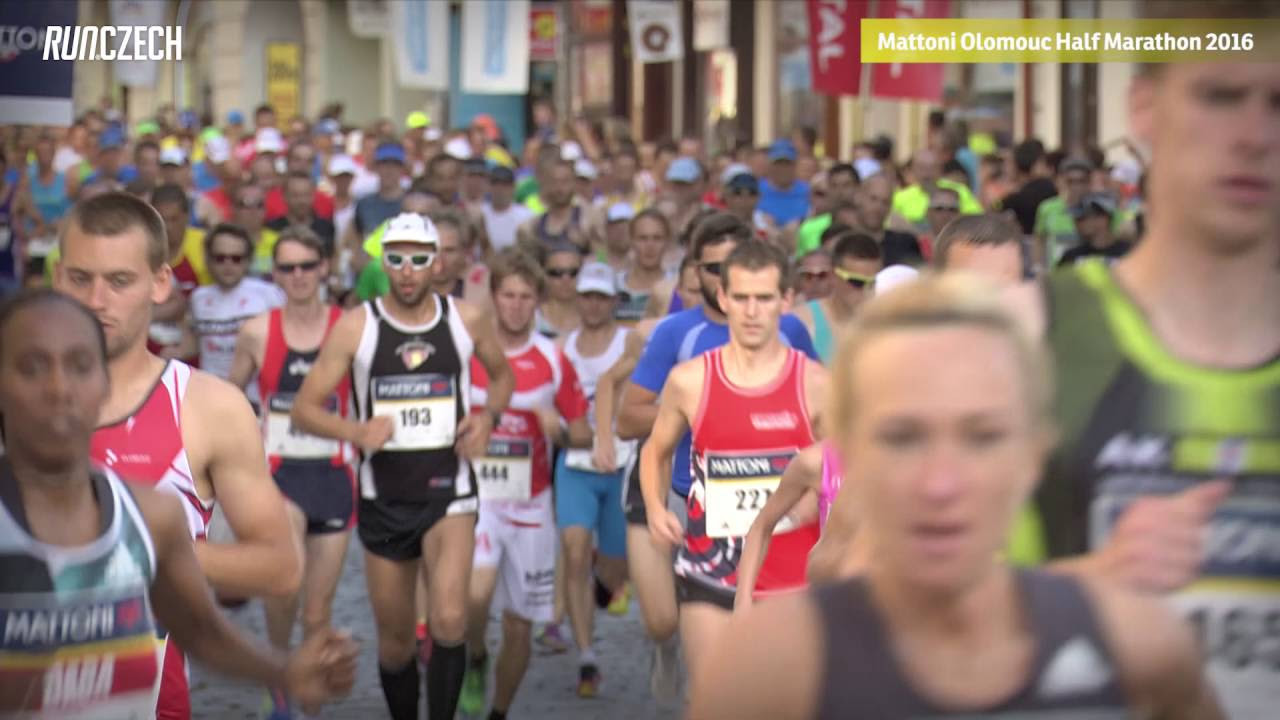
RunCzech had to reschedule its races to Autumn, and the Prague races had been cancelled for this year completely. This has motivated the organizing committee to incredible actions. At the beginning of September, the World Record for the women-only half marathon was broken and the male runners contributed to achieve the 5th best time of all times in men’s half marathon.
Now it seems that RunCzech could be one of the few, if not the only organizer in the World that will be able to organize mass participation events as we know them. Everything will be, of course, aligned with the recommendations of the local hygiene station, that is in daily cooperation with the RunCzech team.
A safety protocol has been created, which enables us to host the race, summarizing and communicating to runners all necessary rules. Among other things, it mainly covers the regulations regarding the risk of spreading the virus, the specific hygienic requirements, and the cooperation with healthcare providers.
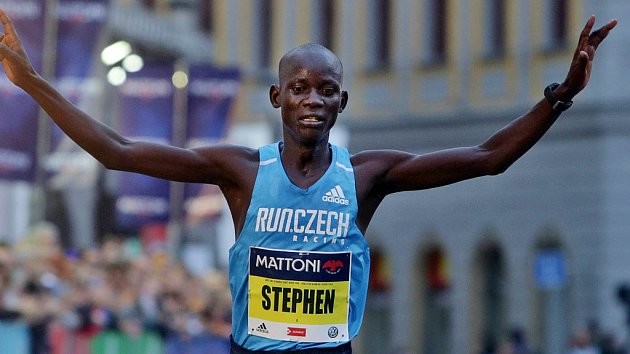
In agreement with the director of the Hygiene Station of the Ústí region, Dr. Lenka Šimůnková, the representatives of the city and the region and following the Ministry of Health's special regulations, RunCzech prepared the following instructions:
Time of start is changed so that there is larger difference between the races
dm Family Run at 11AM (and possible start in waves)
Handbike race at 1PM (25 participants maximum)
Half Marathon at 3PM (start in waves - first 1000 people at 3PM, next wave starts minutes later)
Technical area will be divided in two sectors monitoring the right amount of people and making sure the two groups never meet before or after the race.
Only healthy runners will participate controlled by runners’ declarations and by preventively measuring their temperature.
Runners will be allowed in the starting corridor for a minimum amount of time. Corridors have been enlarged to secure 2 meters distance between runners.
Runners will be requested to wear masks before and after the race, including in the technical area. The technical area is adjusted to secure a fast way out without any possible delays.
Technical adjustments:
Significant increase of disinfection stations and information signs around the technical and start/finish area.
Usage of safety gloves for transporting refreshments or giving out medals.
Regular disinfection of sanitary equipment (toilets).
Cancellation of foam sponges for refreshment.
Refreshment points served without any physical contact.
No fruits at refreshment stations. Only whole bananas served at the finish.
Sugar and salt served only in full and closed one-use packages.
Changing rooms will be placed outdoor.
Taping services - cancelled
Showers - cancelled
Massages - cancelled
After race party - cancelled
Good luck to everyone and stay safe.
(09/16/2020) ⚡AMPMattoni Usti nad Labem Half Marathon
Enjoy the urban run at the Ústí Half Marathon. The course leads alongside the river Elbe opening a view to impressive rock formations, Strekov castle and then crossing the area of a chemical factory which is a perfect example of industrial architecture of the First Republic. The Ústí nad Labem Half Marathon is an annual half marathon race which takes...
more...Government announced its proposal for anti-coronavirus measures to Compete in Tokyo Olympics
On Sept. 15 the Japanese government announced its proposal for anti-coronavirus measures that would allow non-Japanese athletes wishing to compete at next summer's postponed Tokyo Olympic and Paralympic Games to enter the country. Along with at least five tests for COVID-19 prior to competition, foreign athletes must submit a detailed itinerary of their planned movements within the country and a written oath to abide by the submitted plan.
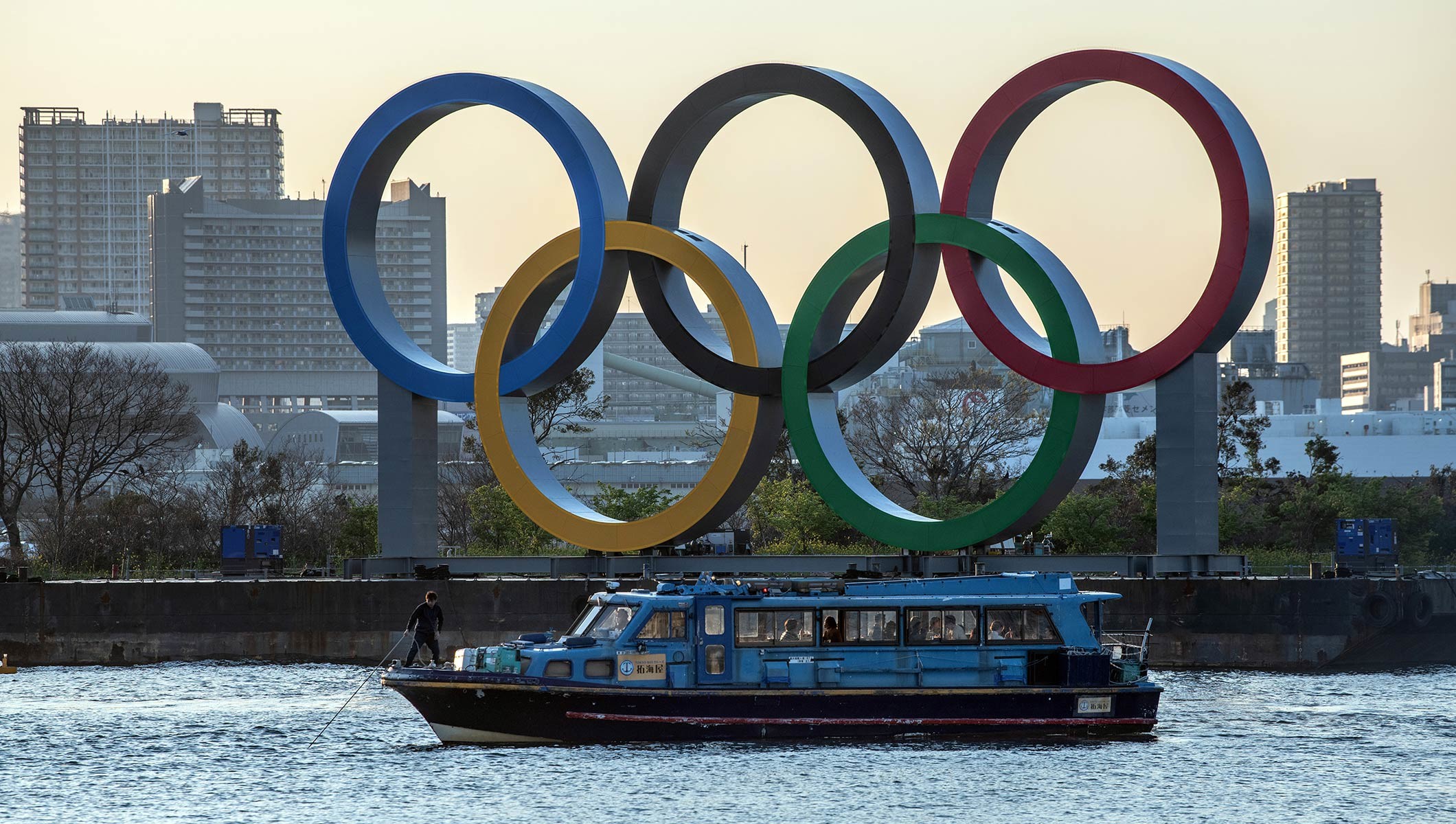

Rules and consequences for dealing with violations are still under discussion. The complete proposal is expected to be presented at a government planning meeting next week.Under the proposal, the first test must be carried out less than 72 hours prior to departure and must return a negative result. Another test must be done at the airport upon arrival in Japan, another when entering the team's pre-Olympic base or host town, another when entering the Athletes' Village, and another before competing. Beyond these five tests, athletes will be regularly tested depending upon the length of their stay in the Athletes' Village.Olympic officials, athlete support personnel and others who may come into contact with athletes will be required to undergo the same protocol.
Athletes who are Japanese citizens residing in Japan will have to undergo at least three tests, the same protocol excluding the tests before and after a flight. The Games organizing committee will have responsibility for testing in the Athletes' Village and at competition venues, with local governments bearing responsibility for testing in host towns.The itinerary and action plan detailing where athletes and personnel will be located and how they will travel is intended to allow them to continue to function during the 14-day self-quarantine period. Each country will have a manager assigned to ensure the system's effectiveness by monitoring compliance and dealing with violations as per the to-be-established regulations.
(09/15/2020) ⚡AMPby Brett Larner
Tokyo 2020 Olympic Games
Fifty-six years after having organized the Olympic Games, the Japanese capital will be hosting a Summer edition for the second time, originally scheduled from July 24 to August 9, 2020, the games were postponed due to coronavirus outbreak, the postponed Tokyo Olympics will be held from July 23 to August 8 in 2021, according to the International Olympic Committee decision. ...
more...The best ways to reduce recovery time between runs
One of the best ways to get exercise without having to commit to heavy equipment or changing gym schedules is running. Running has numerous health benefits. However, it’s easy to feel worn out and sore after a long run. Whether you’re a seasoned runner or are new to the experience, here are some tips to help your body bounce back faster and feel ready for your next run sooner.
Warm Up and Cool Down:

It’s crucial to stretch before and after your workout to avoid extra strain on your muscles. A simple 10-15 minute stretching session before you begin running will prep your body for the upcoming strain. An equal amount of stretching afterwards will help your muscles to relax back to their normal resting state without risking a shock.
An ideal stretch to warm up or cool down will focus on the core muscles you’ll use during your run. Try focusing on your quads, hamstrings, hip flexors, glutes, calf muscles, and ankles.

Massage Your Muscles:
Who doesn’t love a nice massage on any day? After intense exercise, it feels incredible to work out any kinks and stiffness that you may be feeling. Even easier than booking an appointment in-person is using a handheld massage gun. Not only can you focus the pressure wherever you need some extra attention, but you can utilize the device at any time and fit a massage into any busy schedule.
Different models of massage guns come with varying head attachments and pulsation levels to get the perfect massage every time. Since it is also only a one-time payment, using one of these devices is far more cost-effective than booking a professional masseuse every time you’re feeling sore.
Stay Hydrated:
Make sure you’re drinking an appropriate amount of water both before and after your run. If you plan on a long run, perhaps bring a water bottle along with you. As you exercise, your body will work up a sweat and begin stretching different muscles in your body. If not properly hydrated, you’ll feel tired faster, and your muscles will take longer to bounce back to normal.
After your run, you’ll want to replenish your electrolytes as well with Gatorade, Powerade, or another electrolyte-packed drink.
Eat Something Healthy:
Having a small snack directly after your run will help your body to replenish some nutrients it used during your workout. It’s also helpful to eat a well-balanced meal one to two hours after your run to help your muscles rebuild themselves. An ideal meal will have plenty of protein, carbohydrates, and hearty vegetables.
If you’re planning on exercising for an extended period, granola or fresh fruit can be an easy way to get a little energy boost during your workout.
Soak in the Tub:
Whether you want to take the plunge in an ice bath to reduce potential inflammation or soak in a hot tub to relax your muscles, both options will have excellent effects on your body post-run. Placing Epsom salts in a hot bath can be incredibly relaxing. It reduces swelling, addresses general soreness, and provides a little aromatherapy as well.
Conclusion:
Running can have significant benefits and lead to a longer life. It is an effective and cost-efficient way to exercise, but the activity-related soreness can be a discouraging factor for deciding how frequently to run. With these easy tips on caring for your body before and after a run, it’s super easy to avoid strain and help your body feel its best!
(09/15/2020) ⚡AMPby Colorado runner
Britain's Mo Farah will race only 10,000m at Tokyo Olympics
Four-time Olympic champion Mo Farah has said he will not defend his 5,000 meters title in Tokyo next year and will focus on the 10,000m race instead as age catches up with the Briton.
Farah, 37, won gold in both events at the 2012 London Games as well as the 2016 edition in Rio and is bidding to become the first athlete to win the 10,000m three times at the Olympics.
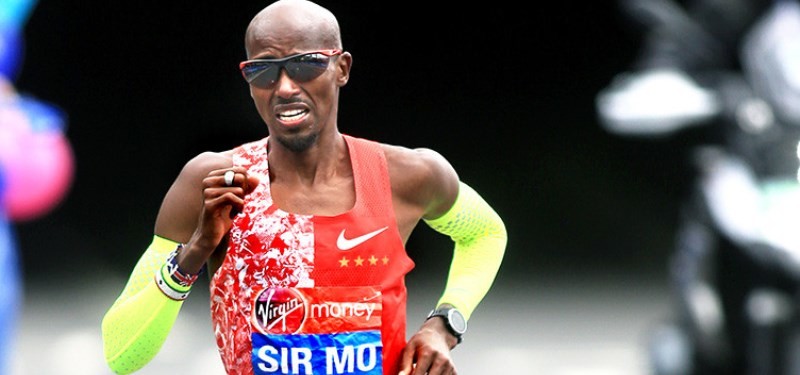
“I’m getting on a bit and I think the key thing is to stick to one event and see what I can do,” Farah told the BBC.
“I’m definitely motivated, I’m still hungry and I still want it more. It would be history, and I’ve already made history in terms of long distance and I was the first British athlete to achieve back-to-back Olympics (gold medals).
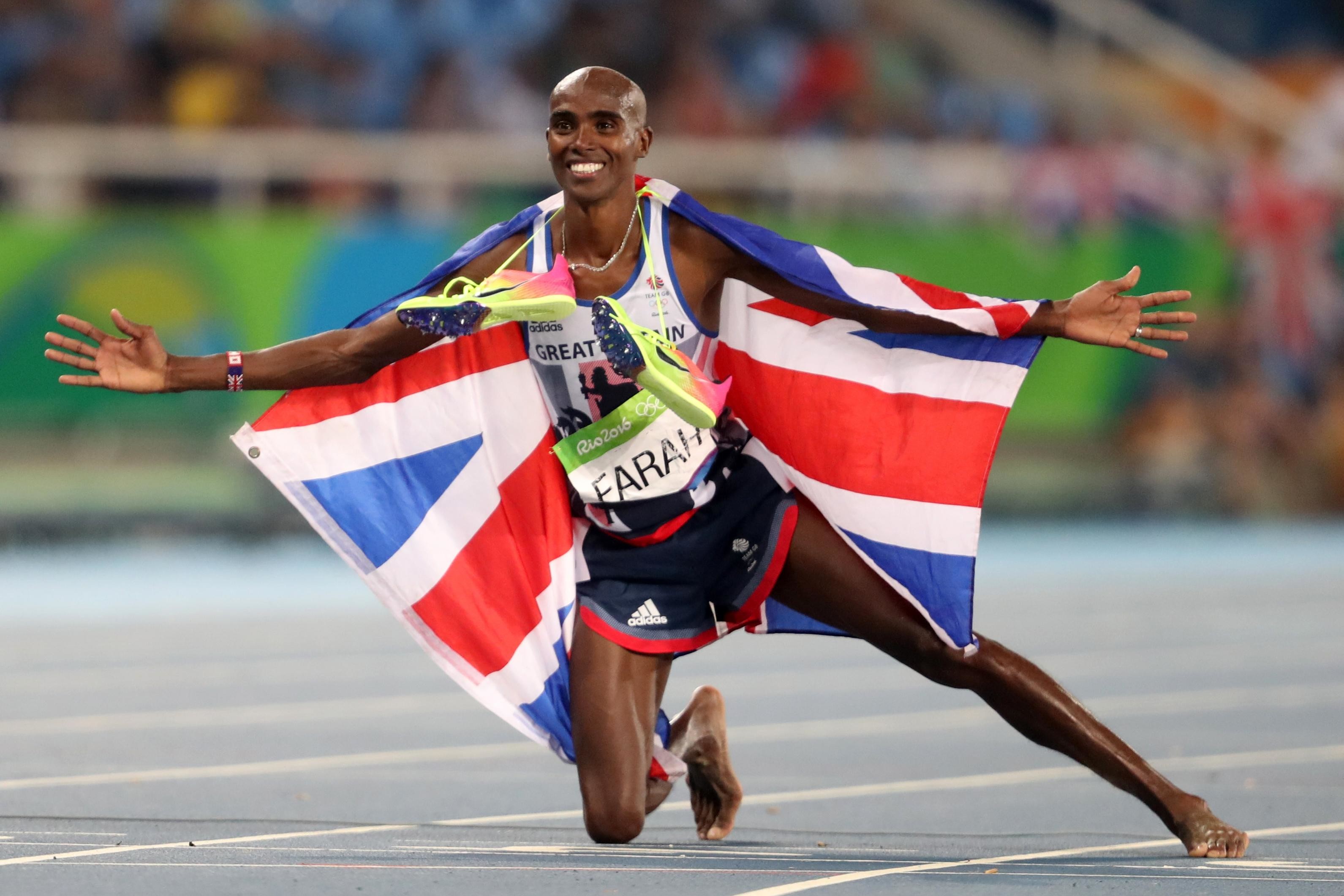
“I have to keep enjoying it, keep smiling and I love what I do. It’s going to be hard but it is possible.”
The Tokyo Olympics, originally scheduled for this year, were postponed to July-August 2021 due to the COVID-19 pandemic.
Earlier this month, Farah returned to the track after three years away to break the world record for the one-hour run.
Farah ran a distance of 21,330 meters at the Brussels Diamond League meeting to eclipse Ethiopian Haile Gebrselassie’s mark, set in Ostrava 13 years ago, by 45 meters.
(09/15/2020) ⚡AMPby Ken Ferris
Tokyo 2020 Olympic Games
Fifty-six years after having organized the Olympic Games, the Japanese capital will be hosting a Summer edition for the second time, originally scheduled from July 24 to August 9, 2020, the games were postponed due to coronavirus outbreak, the postponed Tokyo Olympics will be held from July 23 to August 8 in 2021, according to the International Olympic Committee decision. ...
more...Victor Chumo will be the lead pacesetter at the London Marathon
Pacesetters are the unsung heroes in athletics.
Theses are the men and women who set up the main contenders in a race for first finishes and records, besides the titles.
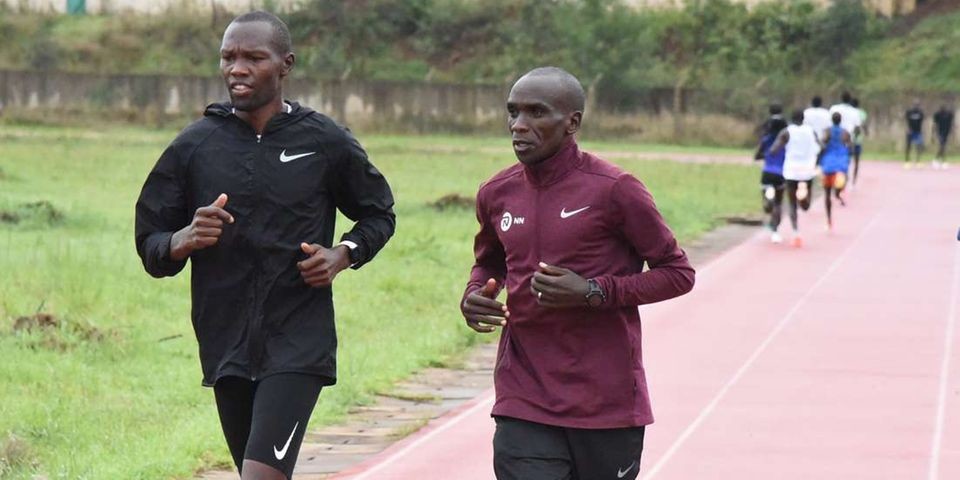
Marathon races, run over two hours require meticulous planning, disciplined pacing and tactical awareness.
Enter pacesetters, who, as the name suggest, are used to pace the contenders through the required time lines on the way to a world record, meet record, course record attempt, as the case may be.
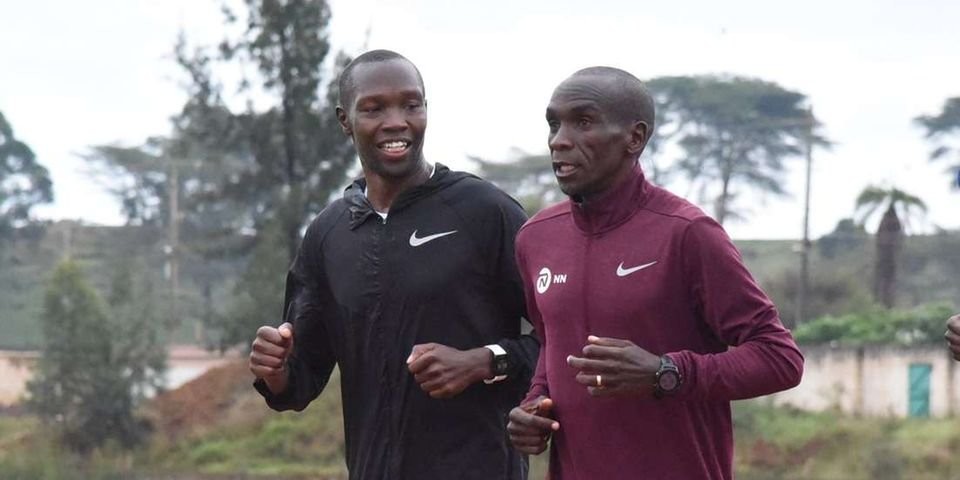
The dynamics at the London Marathon that will be held on October 4 will be no different.
The race has attracted easily two of the fastest marathon runners in the history of athletics, Kenya’s Eliud Kipchoge, and Ethiopia’s Kenenisa Bekele.
Kipchoge needs no introduction. He is the world record holder, reigning Olympic champion and reigning London Marathon champion.
Bekele is the reigning Berlin Marathon champion, his winning time of 2 hours 01 minutes 41 seconds last year just two seconds shy of Kipchoge’s world record of 2:01:39.
Of course Kipchoge has run faster, 1:59:40- during the Ineos 1:59 Challenge in Vienna, Austria last October.
Victor Chumo was one of the runners who paced Kipchoge to that historic feat. Chumo is indeed a high profile pacemaker.
Nation Sport caught up with Chumo, who is one of the pacesetters tasked with leading the athletes in the London Marathon next month through their splits in the 42 kilometres race with a fast finish the clear objective.
The other Kenyan pacesetters for the London race are Noah Kipkemboi, Eric Kiptanui, Alfred Barkach and Shadrack Kimining.
Kaptagat-based Chumo also paced Kipchoge in his earlier failed mission to run a sub two hours marathon in Monza, Italy in 2017.
“I’m privileged that I have been selected to pace for some of the best athletes in the world. It is a hard task given that the athletes will always depend on the pacemakers during the race but I’m ready for the task because it’s not my first time to help top athletes run fast times,” said Chumo.
In fact, pacing Eliud Kipchoge in his first attempt to break the 2-hour marathon barrier in a project dubbed “Breaking2”, and sponsored by Nike, was Chumo’s first major assignment as a rabbit.
He trained hard for the assignment and was as disappointed as Kipchoge when the mission failed.
Kipchoge missed the magical barrier by only 25 seconds, after running 2:00:25.
Chumo joined Global Sports Communication stable in May 2019 and here again he was chosen among 41 pacesetters in the Ineos 1:59 Challenge that saw Kipchoge become the first and only man to run a marathon in under two hours.
“Pacing Eliud in the Ineos 1:59 Challenge was one of my best experience in my athletics career and I will remember that day for the rest of my life, he says."
(09/15/2020) ⚡AMPby Bernard Rotich
TCS London Marathon
The London Marathon was first run on March 29, 1981 and has been held in the spring of every year since 2010. It is sponsored by Virgin Money and was founded by the former Olympic champion and journalist Chris Brasher and Welsh athlete John Disley. It is organized by Hugh Brasher (son of Chris) as Race Director and Nick Bitel...
more...Tommy Hughes sets half marathon world record for M60
All eyes were on Mo Farah on Saturday at the Antrim Coast Half-Marathon, but the most impressive result of the day came from 60-year-old Tommy Hughes, who shattered the M60 half-marathon world record, finishing in 1:10:09. The previous record was held by Martin Rees who ran 1:10:26.
Hughes, the Irish runner who turned 60 in January, has run a 2:27:52 marathon, also a world record for his age. While Hughes’ times continue to be extremely impressive, he has a long history in the sport and even competed in the marathon at the 1992 Olympics, where he finished 72nd. His lifetime personal best is 2:13:15 from the Marrakech Marathon.
With his son Eoin Hughes, he broke the Guinness World Record for fastest marathon by a father and son at the 2019 Frankfurt Marathon. Tommy ran a blazing 2:27:52 and Eoin ran 2:31:30 for a combined time of 4:59:22, two minutes and 50 seconds better than the previous record of 5:02:12, set in 2015 by Graham and Ben Green.
(09/14/2020) ⚡AMP
MEA ANTRIM COAST HALF MARATHON
The MEA Antrim Coast Half Marathon 2022 has been approved by World Athletics as an Elite Event. The World Athletics certified course takes in some of the most stunning scenery in Europe, combined with some famous landmarks along the route. With it's flat and fast course, the race is one of the fastest half marathons in the world. Starting...
more...Kenyan Ruth Chepng'etich, is the world champ that trains without coach
Ruth Chepng’etich kept postponing the interview but it was quite understandable considering the Covid-19 contagion in the country.
There have been no sporting activities in the country since March this year after the government instituted measures to curb the spread of the novel coronavirus following the first case in the country.
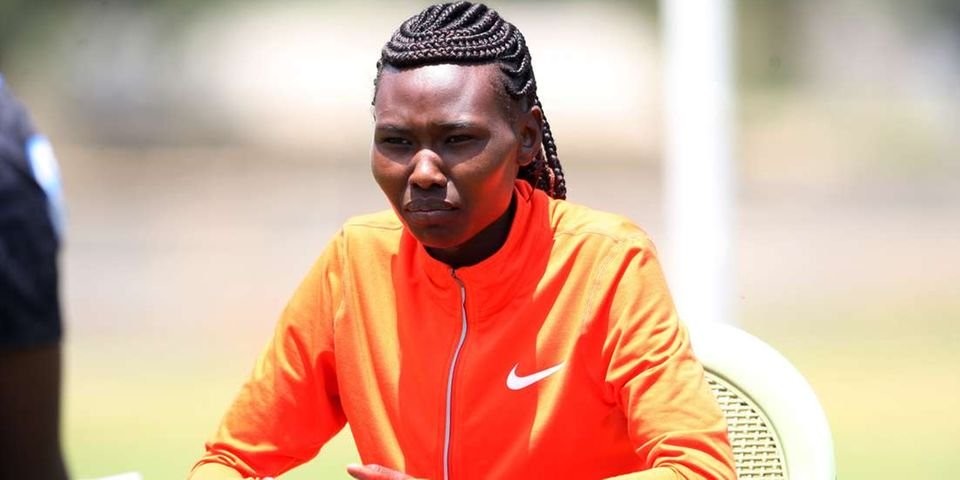
By Saturday, Kenya had reported 35,969 cases with 22,771 recoveries and 619 deaths from the disease.
We checked into Vapor ground, Ngong, Kajiado County, where she had directed us and found her warming down after her morning workout in readiness for the delayed London Marathon due on October 4.
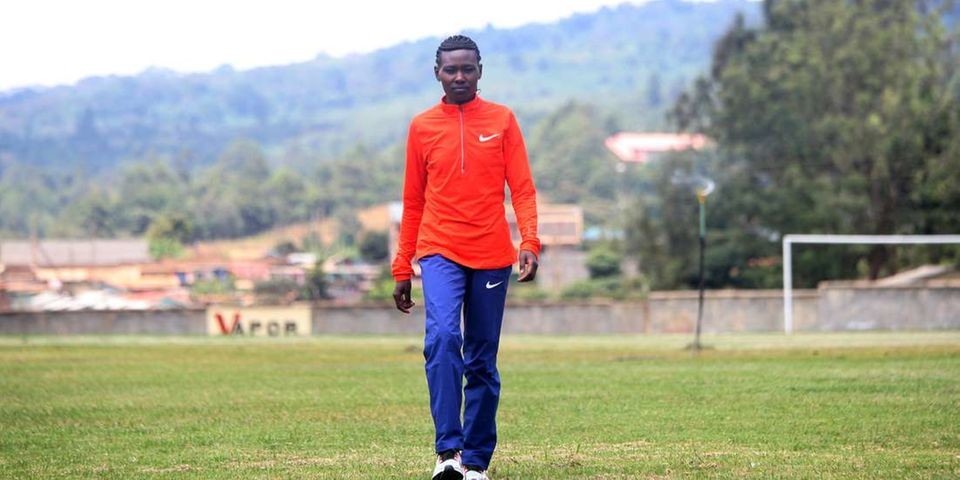
The diminutive athlete was alone.
On a normal day, Vapor ground could be teeming with elite and the not so serious athletes going through their paces.
Though well-kept, the place looked like a ghost arena...thanks to Covid-19 restrictions on social gatherings and social distancing.
Only a handful of athletes were working out separately at the venue but observing strict Covid-19 guidelines.
Well, many top athletes whether in athletics or other sporting disciplines can barely perform without the input of a coach.
They will go to greater lengths to hire or take along their coaches to major championships so that they reap the benefits of the “second eyes” to the maximum.
Majority of professional athletes have made it big after aping or getting inspired either by family members or friends, who were great sportsmen or women in a particular event.
However, there are always unique cases where some sportsmen and women are self-made right. Some have gone on to perform well at the highest level without a coach.
Chepng’etich is one of them.
The only time she had a coach, briefly, was when she was still in Kericho before shifting her base to Ngong in Kajiado County in 2015, a move that would toss her into a roller coaster of athletics achievements.
She has never thought about engaging a coach since setting foot in Ngong, an area that has produced some of Kenya’s top athletes like World 5,000m champion Hellen Obiri.
It would sound strange but self-coaching and group training are what have unleashed the best in the 26-year-old Chepng’etich and the best is yet to come through.
Within four years of moving to Ngong, she already has a world title and is ranked the fourth fastest women in marathon history, an accomplishment most female athletes can just but dream about.
(09/14/2020) ⚡AMPby Ayumba Ayodi
World's Largest Women Marathon, will go ahead with entires limited to residents of Japan
Following the Fukuoka International Marathon's announcement last week that it would limit this year's race to those able to enter Japan under the government's coronavirus immigration policies effective Sept. 14, the Nagoya Women's Marathon, the world's largest women-only marathon, announced on Sept. 14 that it plans to go ahead with its tenth anniversary race on Mar. 14 next year but will limit entries to residents of Japan.In its last full edition in 2019 Nagoya had 20,717 finishers, all women, with another 9,626 men and women in its accompanying half marathon and 4,565 in its quarter marathon.
On the leading edge of the coronavirus crisis this year it canceled all but its elite women's marathon, where Mao Ichiyama (Wacoal) ran 2:20:29 for the win, a new national record for an all-women race.In 2021 the field will be limited to 11,000 plus elite division and invited athletes. A wheelchair race is also planned, and the half marathon is also scheduled to take place with a field of 9,000. Only the quarter marathon has been cut.
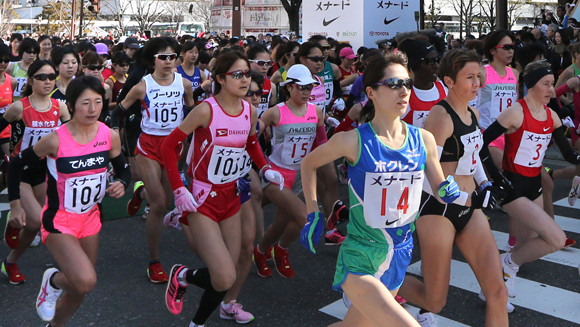
Both the marathon and half marathon are planned to have wave starts to reduce runner density. Further details are still to be released in English, but more information can be found here in Japanese on the marathon, half marathon and wheelchair race.
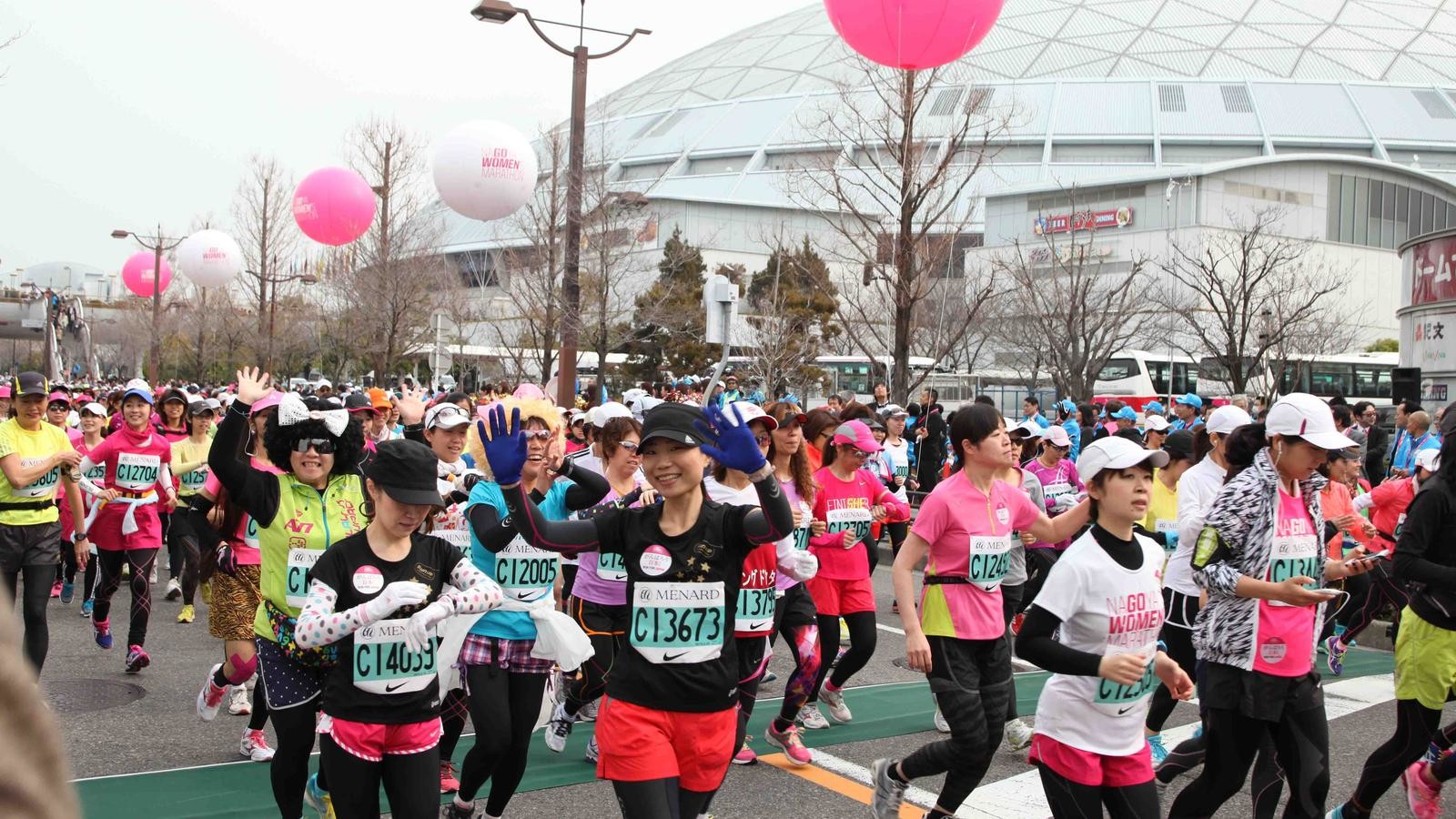
by Brett Larner
Nagoya Women's Marathon
The Nagoya Women's Marathon named Nagoya International Women's Marathon until the 2010 race, is an annual marathon race for female runners over the classic distance of 42 km and 195 metres, held in Nagoya, Japan in early March every year. It holds IAAF Gold Label road race status. It began in 1980 as an annual 20-kilometre road race held in...
more...50th Anniversary of New York City Marathon
Given the current status of the New York City Marathon, it is a little hard to believe that the genesis of a race, which many regard as the world’s most iconic marathon, had such humble beginnings.
Yet 50 years ago, the inaugural New York City Marathon took place with little fanfare and limited media coverage – with a short article and no photos in the New York Times - on an unremarkable route within the confines of Central Park.
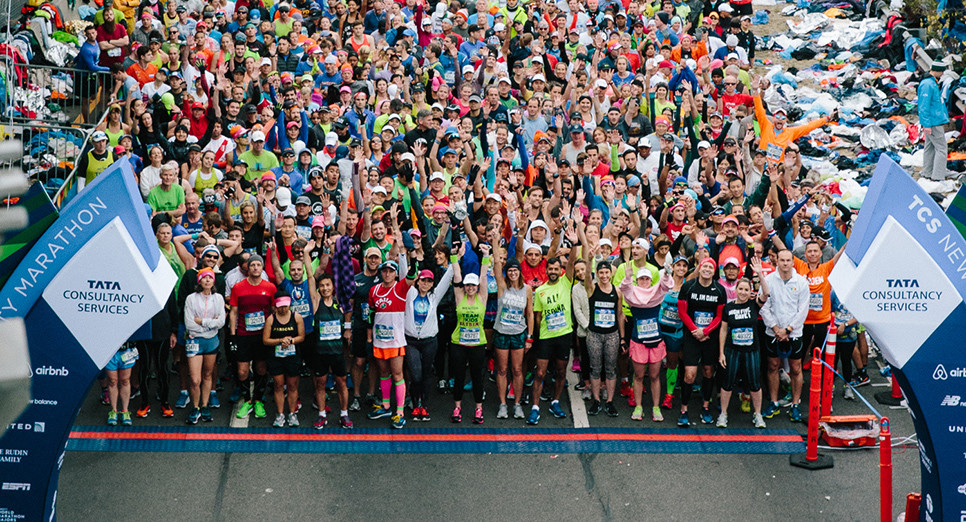
While the historic Boston Marathon – first run in 1897 – was long regarded as the world’s most prestigious city marathon – New York was keen to establish a 42.2km event of its own and Fred Lebow and Vince Chiappetta stepped in to organize the 1970 event.
Charging an entry fee of $1 that first race attracted just 127 entries, 126 men and one woman.
Organised in later summer, participants were greeted to temperatures close to 30C and high humidity as they set off by the current finish line next to Tavern on the Green.
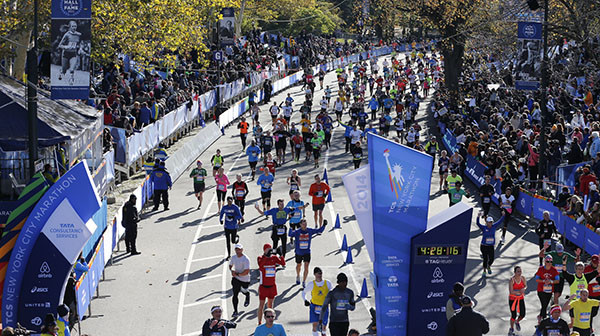
Running a counter clockwise route, the participants of the inaugural race completed a small loop near the southern end of the part, followed by four laps of the undulating main drive of the park.
One person present on that historic day was current New York Road Runners Chair of the Board George Hirsch, who described his memories of the race to the New York Times.
“On that Sunday morning in 1970, I decided to run the Central Park loop in the opposite direction from the runners,” he recalls. “It was a fun way to log a long training run while cheering for my many friends in the race.
“I was among the few bona fide spectators that day. Most of the cyclists and pedestrians weaving in and out among the runners were just folks enjoying a car-free Sunday in Central Park. They didn’t seem to realise that a race was taking place.”
The New York City Marathon has also mushroomed in size. In 1979 it attracted more than 10,000 runners for the first time and in 1997 is smashed through the 30,000 barrier.
Last year the event witnessed a global record number of 53,627 finishers for a marathon.
The race survived the cancellation of the 2012 race because of Hurricane Sandy and it has every intention to bounce back bigger and better next year from the disappointment of the cancellation of this year’s 50th anniversary race due to the global pandemic.
“After 1976 no-one, absolutely no one, even questioned whether the city-wide marathon should be run again,” adds Hirsch.
“We all knew that we had an instant hit on our hands – one that would become an annual institution and the best day in the life of New York city."
(09/14/2020) ⚡AMPby World Athletics
TCS New York City Marathon
The first New York City Marathon, organized in 1970 by Fred Lebow and Vince Chiappetta, was held entirely in Central Park. Of 127 entrants, only 55 men finished; the sole female entrant dropped out due to illness. Winners were given inexpensive wristwatches and recycled baseball and bowling trophies. The entry fee was $1 and the total event budget...
more...Training for the mental side of ultramarathons
Dave Proctor finished the Great Virtual Race Across Tennessee (GVRAT) 2,000K route on June 11, although he should have been partway through his cross-Canada speed record attempt. He was forced to cancel the cross-country run when COVID-19 hit, but he still plans to go for the record (which is 72 days and 10 hours, set by Al Howie in 1991) next year. Proctor’s body is used to taking a beating on long runs, but his mental game also plays a huge role in his success as an ultrarunner. Canadian Running spoke with him about the GVRAT, the run across Canada and how he trains his mind for such gruelling events.
Tuck the past away
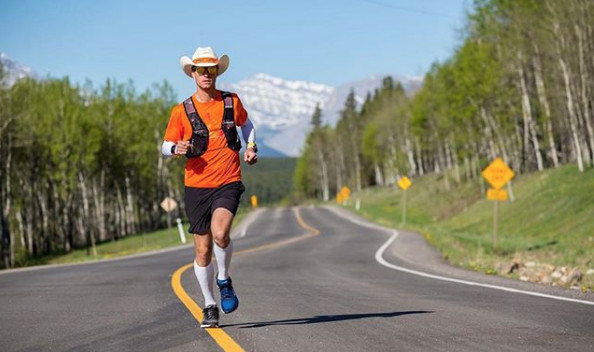
Proctor is well known in the Canadian ultrarunning community. He has run treadmill world records, he’s organized races and he is consistently among the top athletes at any event he runs. He’s used to running long distances, and he finished the GVRAT after 42 days of running. For his cross-Canada run, he planned on running 105K each day, which would have gotten him across the 7,200K route in 67 days. Running can be hard for him, too, but it’s how he deals with those tough times that makes him a great runner.
“Everyone gets tired after an hour of running,” he says. “If you automatically think, ‘OK, I have 12 more hours of this,’ then you’re going to crumble.” Instead, Proctor says to “tuck the past away,” not to worry about the future and to “focus on right now.” He says there are too many factors out of your control, and to worry about them will just hurt your psyche.
“A storm might blow in at any moment during a race,” he says. Deal with that when it comes your way, but in the meantime, he says to embrace the “mindlessness of living in the moment. There’s that big component of being in the now.”
The difficulty plateau
Proctor admits that it’s not always easy to live in the moment, but he says he gets to a certain point when he knows things won’t get any worse. When this happens, he asks himself, “’Are you OK with staying here for a while?’ If the answer is yes, then I know I’m good to keep going.” He continues to check in with himself throughout these long runs, and as long as he knows he can physically keep moving, he pushes forward.
Go in with a plan
Whether you’re running a 100-miler or aiming to run 100K every day for weeks like Proctor as he crosses Canada, he says having a set plan is important. “Go in with a plan,” he says. “A lot of the time, your ego, fear or other things will take you away from that plan. There will be days when I want to run an extra 20K, but physiologically that can mess you up.” Having a set plan for pacing or nutrition or how much you’ll run each day will ease your mind. Just be sure to stick with it.
Cut yourself some slack
“Take what your body gives you,” Proctor says. “We’ve all woken up on the right side of the bed and we’ve all woken up on the wrong side, too.” He says it’s important to accept those tough days and to “be kind to yourself” and realize that day won’t be your best. Freeing yourself from your pre-run expectations can take a mental load off and help you push through those tough times.
(09/14/2020) ⚡AMPby Running Magazine
Summer heat could be a 'nightmare' for Tokyo Games
Even if the COVID-19 pandemic does not prevent the Tokyo Olympics from going ahead next year, the blazing summer heat in the Japanese capital could still make the Games ‘a nightmare’, an advisor to the organizing committee has told Reuters.
Although Japan enjoyed a mild summer this year, Makoto Yokohari said that the highest temperatures in a typical August -- when most of the delayed Games will take place -- could mean a dangerous mix of heat and humidity.
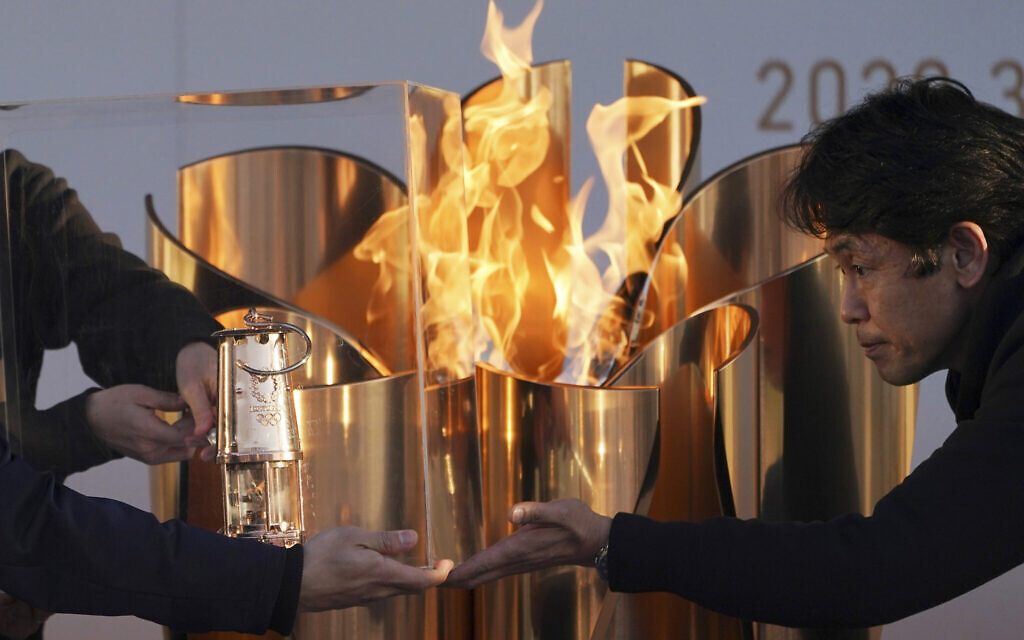
Yokohari, a professor of environment and urban planning at the University of Tokyo, analysed data going back to the 1984 Olympics in Los Angeles and said he found that in the period where the Games were held, Tokyo had the highest average temperature and precipitation of any host city.
“When it comes to heat stress or heat stroke, the problem is not only the temperature but also the humidity as well,” Yokohari told Reuters on Tuesday.
“When you can combine these two ... Tokyo is the worst in history.”
Temperatures this July, when the Olympics were due to start before the new coronavirus forced a postponement, were significantly cooler than the five-year average for the month of 30.4 degrees Celsius (87 F).
With August averaging highs of 30.8 degrees Celsius (88 F) and lows of 24.2 (75 F) over the 30 years over his study, Yokohari said organisers should be prepared for the worst.
“The temperature was not that high so if we could have this kind of weather next year, maybe it will be okay,” Yokohari added.
“But, if the weather turns out like right now, or like last year, then it is going to be a nightmare.”
HOTTEST TIME OF YEAR
The main reason for this year’s cooler July temperatures was the extended rainy season, which is often followed by the hottest time of year.
Yokohari said this was very unusual and that the rainy season in Tokyo habitually ended on or around July 20 -- three days before the Olympics are due to start.
The 1964 Tokyo Olympic were held in October but for various reasons, including television deals and to avoid a clash with other major events, the International Olympic Committee (IOC) wanted the July dates kept even after postponement.
“If we could plan this postponed Olympic Games in November then I am sure the situation could be much, much better but unfortunately the IOC said ‘no, no, it is going to be in July,’” said Yokohari.
“Having said that, I am afraid that there isn’t going to be much we can do, especially for spectators.”
Last year, in response to a particularly hot summer, the IOC acknowledged the issues Tokyo’s heat would bring and moved the marathon and race walk events to the cooler northern city of Sapporo.
Yokohari said this was very unusual and that the rainy season in Tokyo habitually ended on or around July 20 -- three days before the Olympics are due to start.
The 1964 Tokyo Olympic were held in October but for various reasons, including television deals and to avoid a clash with other major events, the International Olympic Committee (IOC) wanted the July dates kept even after postponement.
“If we could plan this postponed Olympic Games in November then I am sure the situation could be much, much better but unfortunately the IOC said ‘no, no, it is going to be in July,’” said Yokohari.
“Having said that, I am afraid that there isn’t going to be much we can do, especially for spectators.”
Last year, in response to a particularly hot summer, the IOC acknowledged the issues Tokyo’s heat would bring and moved the marathon and race walk events to the cooler northern city of Sapporo.
Before the COVID-19 pandemic struck, battling the heat was the major challenge for Games organisers.
“Tokyo 2020 and all the Japanese organisers are not optimistic about the summer weather in Tokyo at all,” Tokyo 2020 spokesman Masa Takaya said on Tuesday.
“We will be working closely together with the key delivery partners ... to combat heat weather.”
With temperatures rising around the globe, Yokohari said the Tokyo Games could be a “gamechanger”.
“I would say that Tokyo should be a gamechanger of the whole story because, in the future, no cities in the world will be able to host Olympic Games in summer anymore,” he said.
(09/14/2020) ⚡AMPGrandma's Marathon adds a female runner to logo
Grandma’s Marathon is adding a female runner to its logo, a move race organizers say is “long overdue.”
“We thought with the 45th anniversary coming up it would be a great time to make that update,” said Shane Bauer, executive director of Grandma’s Marathon. “It’s been talked about for years.”
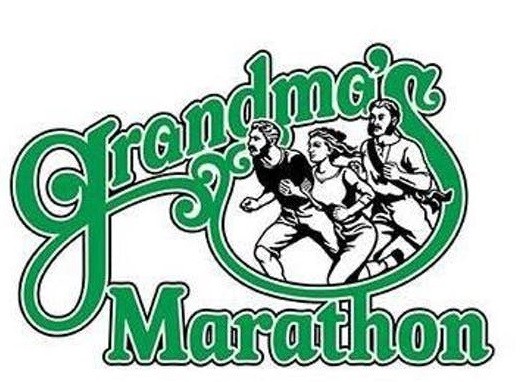
The logo was adapted from founding sponsor Grandma’s Saloon and Grill and features black-and-white drawings of three runners in a loop. The middle runner was replaced with a woman.
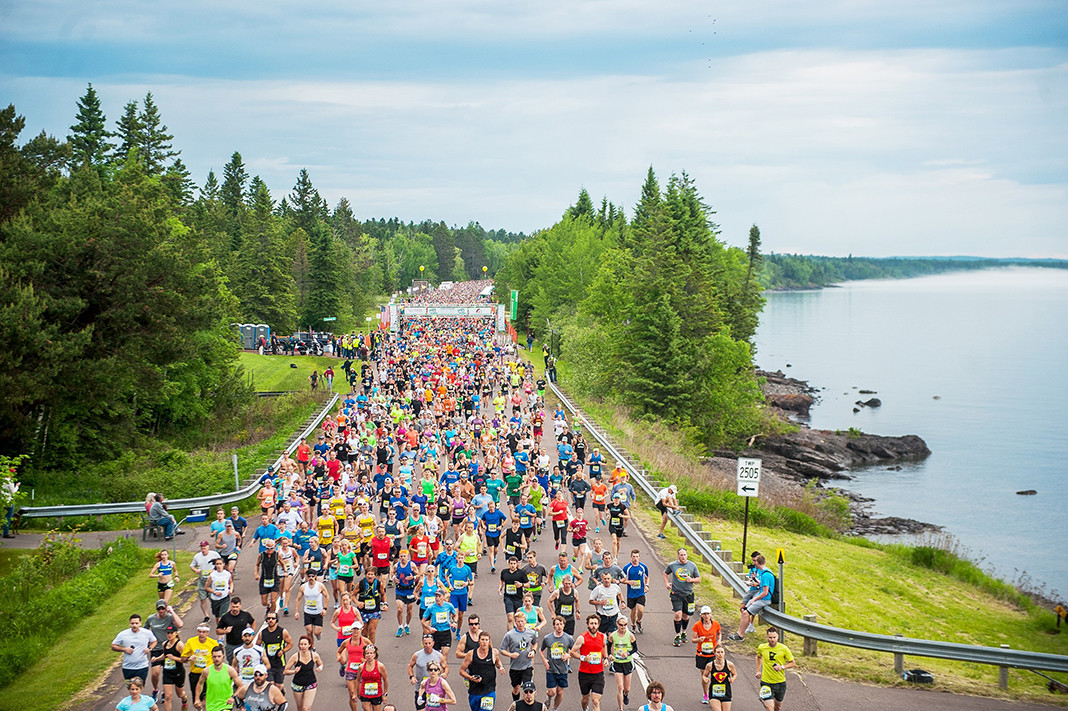
An increasing number of women have run Grandma’s nearly every year since it began in 1977, and a majority of half-marathon runners have been women since that event began in 1991.
“Thinking about Kathrine Switzer pushing her way into the Boston Marathon, that wasn’t so long ago,” Bauer said about the first woman to run that race in 1967.
“There has been quite the flip.”
Duluth native and Olympic long-distance runner Kara Goucher said she’s “proud” that organizers updated the branding.
“I think we women want representation and I think to have it in the logo is a really big deal,” said Goucher, who lives in Boulder, Colo., but was visiting Duluth this week.
“Those are small steps that make a huge difference for their audience.”
Goucher is an advocate for getting more women and girls into running. After handing out water at Grandma’s Marathon and “loving the race” as a spectator while growing up, the 42-year-old said it was important to “see what was possible.”
“I think it’s one of the great sports where there is equal representation — you’re never going to see that in football or basketball or soccer,” she said. “It’s one of the places where we have equal access most of the time.”
Bauer said that women have also played an important role in the Grandma’s Marathon organization, making up a majority of the paid staff.
“If you look at our history, women have really run the show,” he said. The logo change was prompted by Grandma’s Gazette, the official race publication from Grandma’s Restaurant, which added a woman to its line-art logo in 2019, Bauer said.
Next year’s marathon will be run at half capacity — 4,000 each for the full marathon and the half and 1,500 for the 5K. Race weekend typically draws 18,000 runners and is a major boost for Duluth’s tourism economy.
The race runs along the North Shore between Two Harbors and Canal Park in Duluth and is a Boston qualifier.
Bauer said “we’re choosing to be optimistic” about running the race in person next year, but the pandemic may have other plans.
The 2020 race scheduled for June 22 was canceled at the end of March, marking the first cancellation since the marathon began.
The 45th-annual Grandma’s Marathon and Garry Bjorklund Half Marathon are scheduled for June 19.
(09/13/2020) ⚡AMPby Brooks Johnson
Grandmas Marathon
Grandma's Marathon began in 1977 when a group of local runners planned a scenic road race from Two Harbors to Duluth, Minnesota. There were just 150 participants that year, but organizers knew they had discovered something special. The marathon received its name from the Duluth-based group of famous Grandma's restaurants, its first major sponsor. The level of sponsorship with the...
more...Runners, Spectators Making Most of Virtual Boston Marathon
Organizers were forced to turn this year’s event into a safer, virtual alternative due to COVID-19
Spectators won’t see the millions of people they’re used to seeing in the Boston Marathon this year.
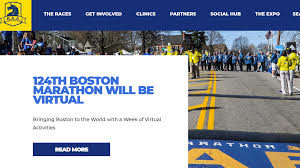
Some things, however, haven’t changed.
"It’s not a marathon without a cowbell," said Joe LeBlanc of the Run Club of Malden, as he rang his cowbells from the sidelines.
Something else that hasn’t changed are the supporters on the marathon route, cheering the runners on. Leo and Deborah Buckley cheered their daughter, Ashley, from the sidelines on Commonwealth Avenue in Newton Saturday morning.
Still, running a marathon during the coronavirus pandemic has been less than ideal.
"She was a little bit nervous at first but she was determined to do it anyway," Debroah Buckley said of her daughter.
Organizers were forced to turn this year’s event into a safer, virtual alternative due to COVID-19. It’s being run from Sept. 7-14 and includes a week of online events.
Despite the changes, running 26.2 miles is no less challenging. Supporters say that’s why it’s so important to be encouraged, whether you make it to the 20-mile marker or to the finish line.
Dan Fitzgerald of the Heartbreak Hill Running Company cheered on their 1,000 or so members along the marathon route in his 1989 Volkswagen vanagon.
"It’s not just the expectation that there are hundreds of thousands of fans," Fitzgerald said. "It’s more surprise and delight at the fact that people are out here and still care."
That encouragement can be pretty sweet when you need to recharge, which is why LeBlanc and Vinny Oliver -- also of the run club of Malden -- showed up to the marathon route in Newton with candy and water to support the runners.
"Being here to support them is just amazing so it’s a really great day to run," Oliver said.
(09/13/2020) ⚡AMPWhy Altitude Training Helps Some but Not Others
A new analysis casts doubt on the idea that people are born as "responders" or "non-responders" for training in thin air
To understand the latest data on altitude training for endurance athletes, it’s worth looking back at a seemingly unrelated study published in 2015. In it, 1,000 subjects undertook a three-month exercise program to see whether it would lower their blood pressure. Sure enough, the average change in diastolic blood pressure was a clinically significant reduction of five mmHg, which is good news. But not everyone benefits equally. Here’s what the individual results looked like, with positive and negative changes in blood pressure shown on the vertical axis:
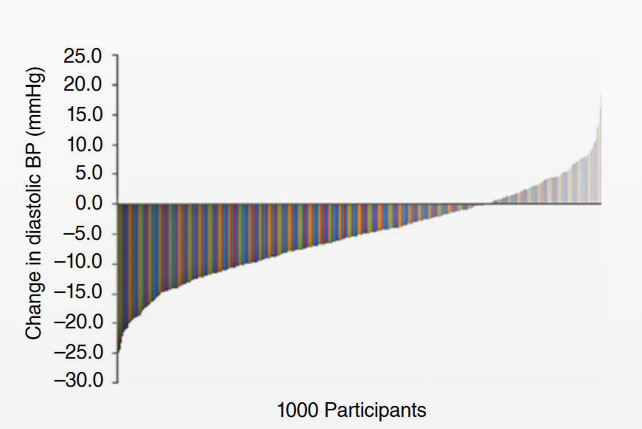
On the left, some of the subjects—call them super responders—saw a drop of more than 20 mmHg. On the right, we have some non-responders, and even some negative responders, whose blood pressure increased by more than ten mmHg. That’s bad news, and receiving it might understandably tempt you to sign up for one of those genetic tests that promises to tell you how you’ll respond to exercise.
Here’s the catch: this data is fictitious. It was generated by researchers to illustrate what can go wrong when you try to classify people as responders or non-responders based on a single set of measurements. They took simulated blood-pressure data and subtracted exactly five mmHg from everyone’s baseline value. But to simulate real-world conditions, they also added some random measurement error to both the pre and post values. For some people, their apparent baseline measurement was a little higher than its true value; for others, it was lower. Same for the final measurement. If you got a randomly low baseline and a randomly high final value, it looked like you were a non-responder—even though everyone in the simulated study was really a true responder.
This question of response and non-response has been a controversial topic in exercise science (and health more generally) for at least a few decades. Researchers have rightly realized that individual variation is just as important as the average response to an intervention. But that creates a temptation to label everyone in a study who doesn’t respond as a non-responder. It’s like flipping ten dimes and saying, “Look, dimes always land on heads, as long as you ignore those five non-responders.”
Which brings us back to altitude training. Ever since the first live-high, train-low protocols were devised back in the 1990s (with an initial study that saw 17 out of 39 subjects improve their 5,000-meter times), there’s been a widespread belief that some people are responders and others non-responders. I’ve lost count of the number of times I’ve seen secondhand altitude tents for sale on running message boards or chat groups with a note along the lines of “I tried it for a few months, but it turns out I’m not a responder.”
But, as noted above, you can’t actually sort responders from non-responders based on a single stint at altitude. To their credit, altitude researchers have been trying for several decades to identify the factors that predict whether you’re likely to see an increase in oxygen-ferrying hemoglobin, which is the main goal of altitude training for endurance athletes. But the results have been mixed at best, and it’s still not at all clear if an athlete who responds to one altitude camp will respond again to the next one.
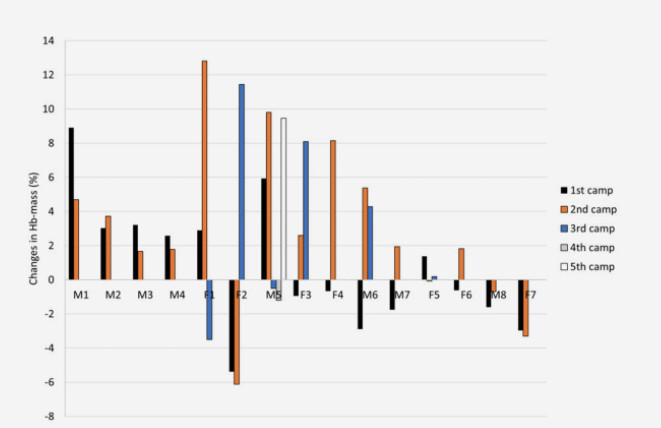
That’s the long-standing controversy addressed by the latest altitude-training data, which is published in the Scandinavian Journal of Medicine and Science in Sports. It comes from a group led by Ari Nummela of Finland’s Research Institute for Olympic Sports, and it reanalyzes data from 59 national-team endurance athletes (cross-country skiers, runners, swimmers, and assorted others) who completed a total of 82 altitude-training camps between 2009 and 2015. The camps lasted between 16 and 42 days, at altitudes of between 4,400 and 8,200 feet (1,350 and 2,500 meters).
“Success” was defined as an increase in total hemoglobin mass of greater than 1.7 percent, which exceeds the typical error inherent in the measurement of hemoglobin mass. Overall, athletes had successful camps in 46 of the 82 cases, for a hit rate of 56 percent. That may seem unimpressive, and (as I wrote earlier this year) some scientists would argue that you’d see something similar if you simply sent the athletes to a super-focused training camp at an idyllic sea-level location, no altitude required. But if you assume that altitude works, then you’re left with two possibilities: either some athletes aren’t wired to respond to altitude, or half of them were doing something wrong.
To address the first possibility, we can look at the 15 athletes who participated in at least two (and as many as five) altitude camps during the study period. Did those who benefited once consistently benefit again? Here are the individual results for those 15 athletes, with upward bars indicating an increase in total hemoglobin and downward bars indicating a decrease:
Four of the athletes (on the left) always benefited, and two of them (on the right) always saw neutral or negative responses. For the other nine, it was a mixed bag. Subject F1 had two good camps, then a bad one; subject F2 had two terrible ones, then an amazing one. The firm conclusion here, Nummela and his colleagues write, is that altitude response is not a fixed trait.
The harder question, then, is: What determines whether you’re going to have a successful camp? One solid finding was that the success rate jumped to 65 percent when the altitude was at least 6,500 feet (2,000 meters). As it turns out, the authors of this paper were the ones advising the Finnish national team on its altitude camps, and they can’t resist pointing out that this is exactly what they originally told the national-team coaches to expect. But did the coaches listen when they chose their altitude-training destinations? Apparently, not always.
The physiologists also had two other pieces of advice for the coaches: don’t let your athletes come to altitude if they have low iron stores (defined as serum ferritin below 30 micrograms per liter) or if they’re ill (as indicated by levels of the inflammation marker C-reactive protein above three milligrams per liter). These rules, too, were not enforced, so the researchers checked whether those with low iron or high inflammation were less likely to respond. The results were unconvincing: if anything, the non-responders had slightly higher baseline ferritin and lower C-reactive protein than the responders.
Other studies, in contrast, have found that having good iron levels and avoiding illness are crucial to getting good results from an altitude camp. And the physiologists who work closely with elite athletes have plenty of other ideas about what it takes to ensure a successful training block in thin air. The real conclusion, yet again, is that getting the most bang out of your altitude buck is complicated and highly individual. You can take that as a glass half empty: simply booking a plane ticket guarantees nothing. Or you can take it as a glass half full: even if your first stint at altitude didn’t work out, you might still be able to make it work the next time—if you get the details right.
(09/13/2020) ⚡AMPby Outside Online
Upcoming running events in Oregon and virtual runs from anywhere
Race season hasn't totally stopped; in fact, it's only kind of getting started.
This year we've seen racing directors all over the country implement virtual run designs to help limit contact between runners. This has been cool for many reasons. One, it's allowed runners from other places to run non-traditional routes and be a part of races in other regions. Second, it lets runners do things at their convenience—always a luxury.
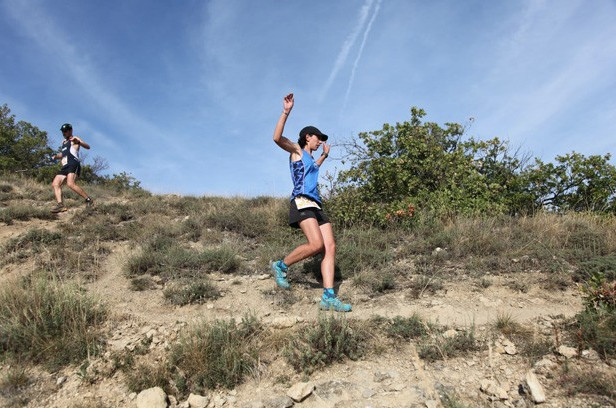
As we hit the end of summer and head into fall, here are a few races still happening in Oregon—and even some fun virtual races runners can do from anywhere, on their own time.
Stranger Distances - Through Oct. 31 - Virtual
*Cue the "Stranger Things" theme song*
Stranger Distances lets runners take on any number of unusual distances, including 3.2, 6.7, and 11.11 miles. This race symbolizes how 2020 itself has felt like "being in the Upside Down" during this strange year. Runners get a certificate, Stranger Distances long sleeve and can add a medal for $9.99.
You can find Stranger Distances on runsignup.com.
The Scooby Doo Family Run - Through Oct. 4 - Virtual
This run, chugging along and available since July, encourages participants to get out and run or walk it with your entire family—dogs included! Racers get a medal, bib, water bottle and a long sleeve Scooby Doo tech tee with a hood! I might register for the gear alone, honestly. You can even add in a Scooby Doo collar or bandana for your furry friend. Run or walk this fun run anywhere.
Oakridge Triple Summit Challenge – Oakridge, Oregon - Sept. 25-27
Take on three days of different trail races and climb 8,500 feet of elevation in 40 miles total. Or, sign up for an individual day and do either a 20K, 15K or 30K. The inclines will be worth all the epic views over the three-day race.
Bigfoot 10K – Bend, Oct. 4.
This downhill road race is perfect for people looking to keep it in the 5- to 10K range. You'll fly as you head from the Cascade Lakes Welcome Center and finish at Riverbend Park.
ultrasignup.com/register.aspx?did=72351
Portland Marathon, Half Marathon, 10K and 5K - Virtual in Portland
The team behind the Portland Marathon has partnered with On Your Own to create a more individual experience for racers this year. Runners will still be going through a USATF-certified marathon course, as timing technology placed throughout the route syncs runners' paces. But this time around, runners can show up and run on their own time. Download the On Your Own app for turn-by-turn instructions and to make sure the time gets recorded. After registering, OYO will mail a racer's box with everything runners need to get started.
https://runoyo.com/opd/register
Happy Girls Sisters – Sisters, Nov. 11 – In-person or virtual!
A gorgeous run through the town and trails of Sisters, Oregon. This year there are offerings for either an in-person race or virtual. Sign up for a 5K or Half Marathon in person. Virtually, runners can up it to a full marathon this year or find some middle ground with a 10K. This is a great race to celebrate women who love running.
happygirlsrun.com/sisters/
(09/13/2020) ⚡AMP

